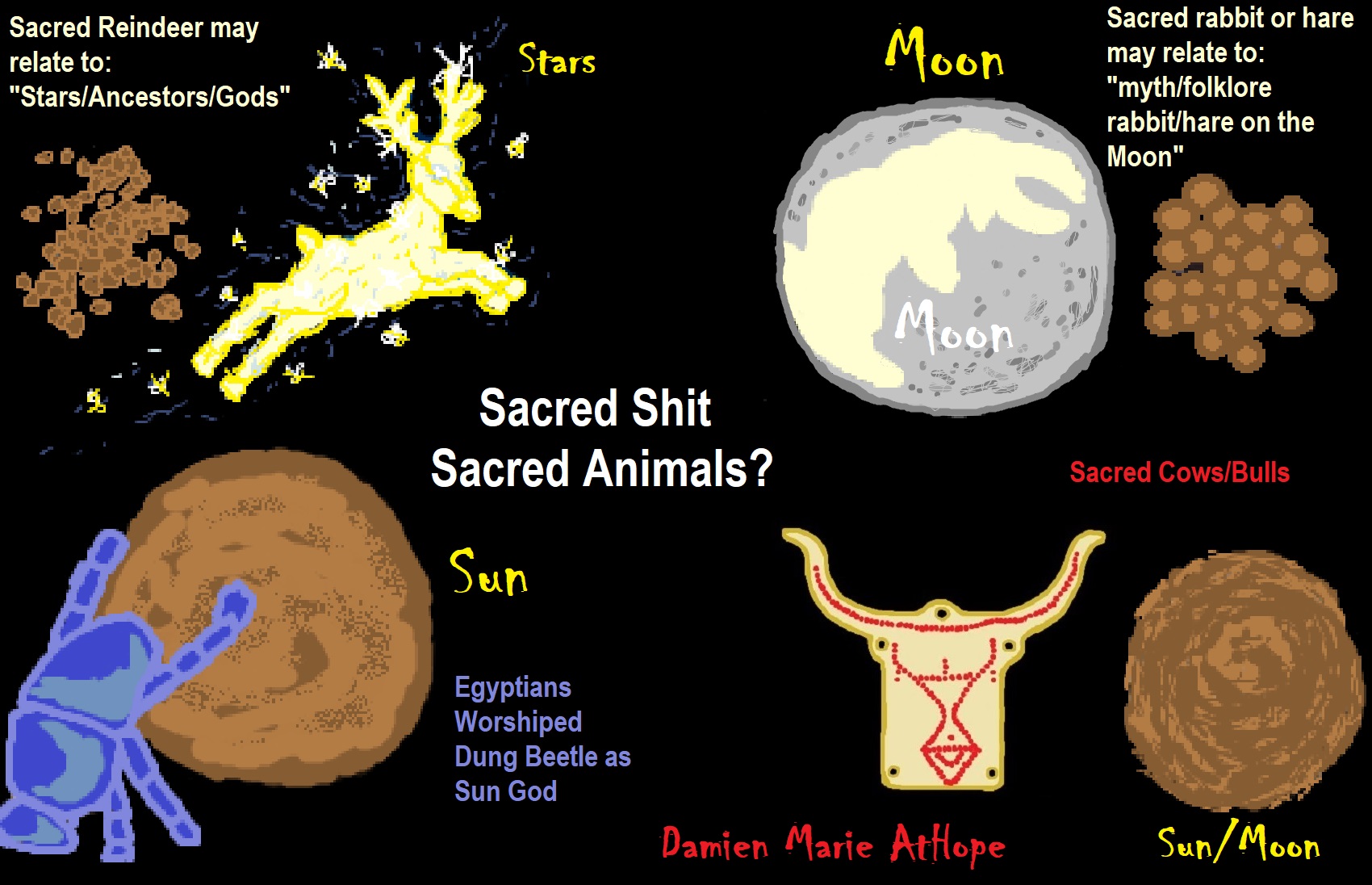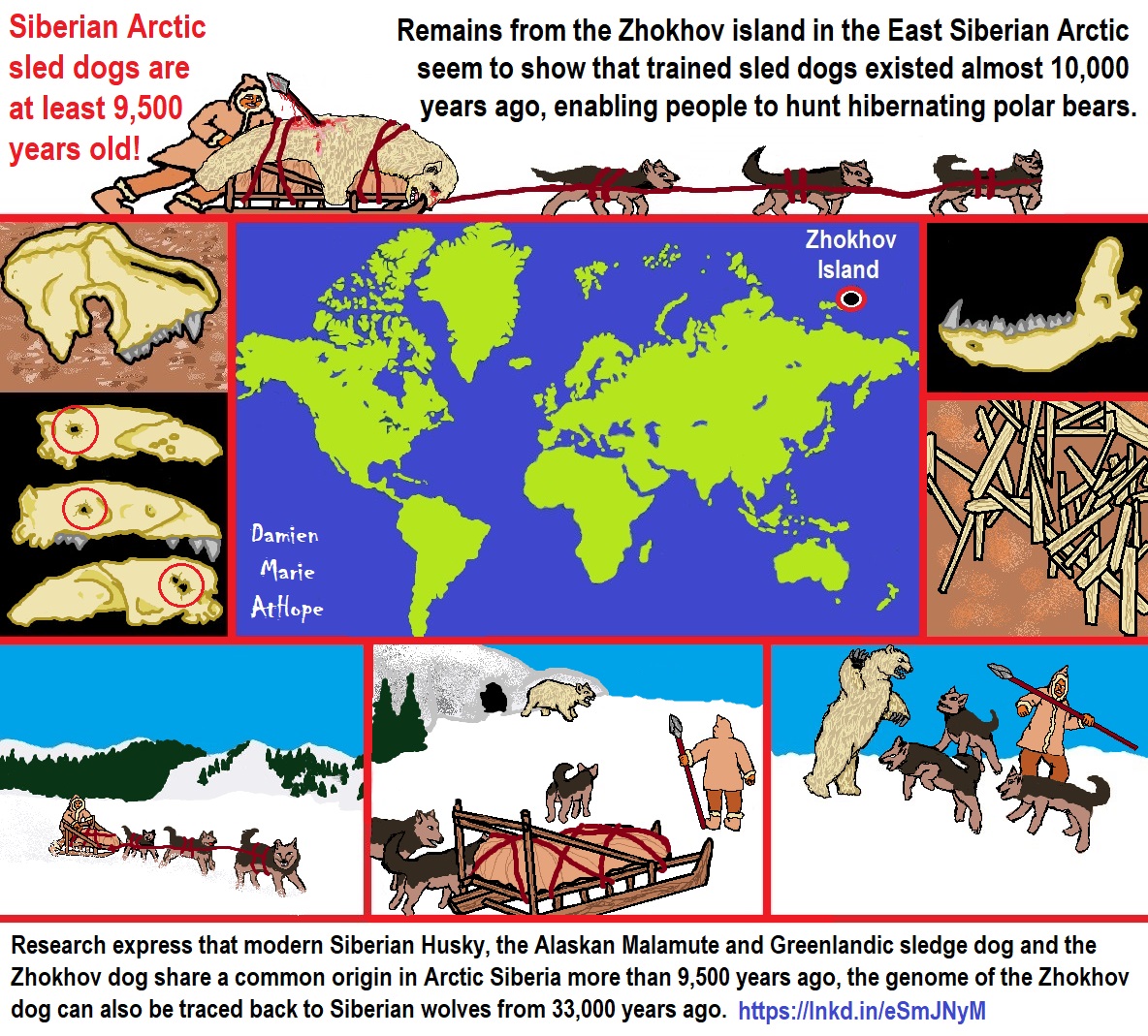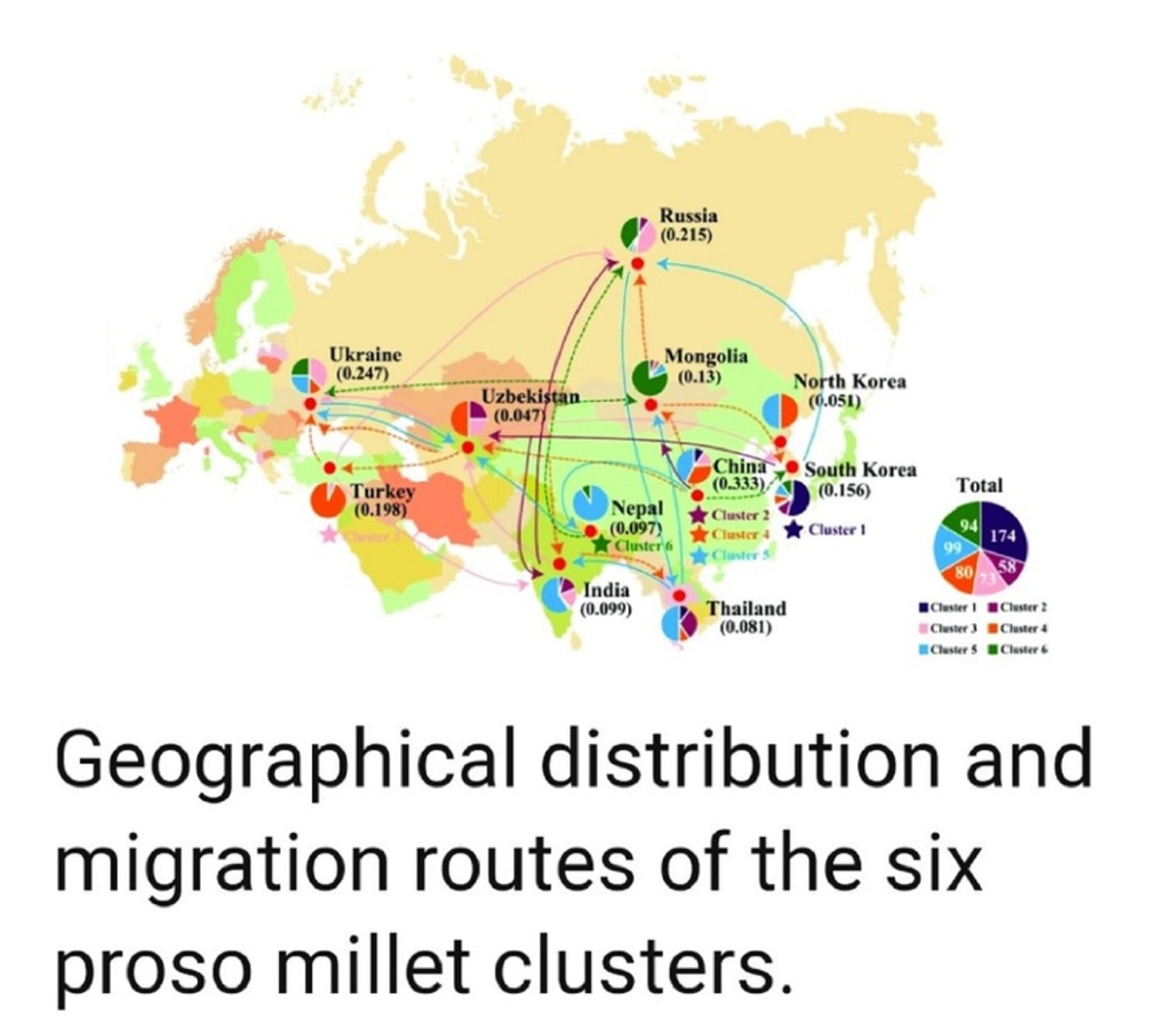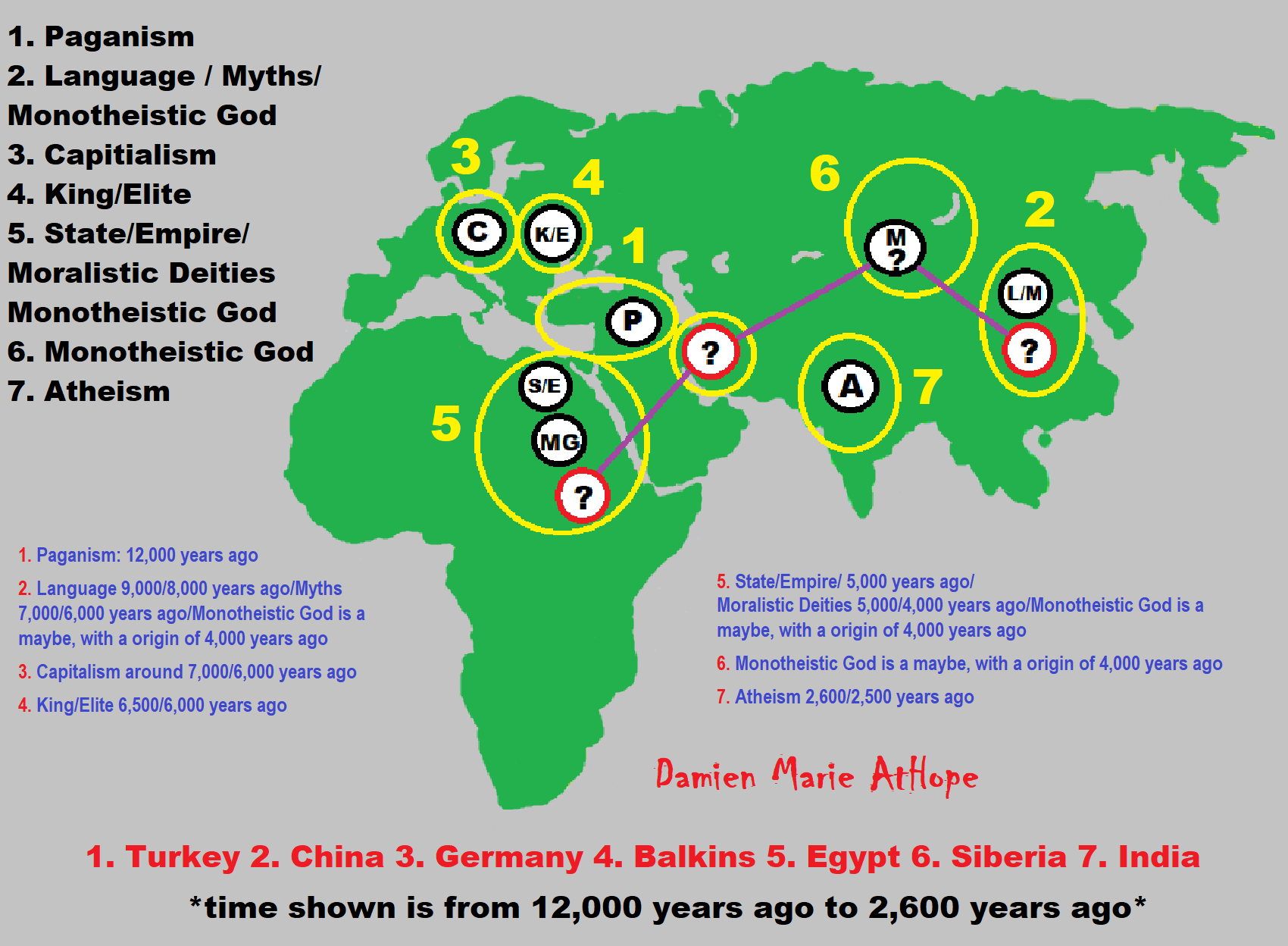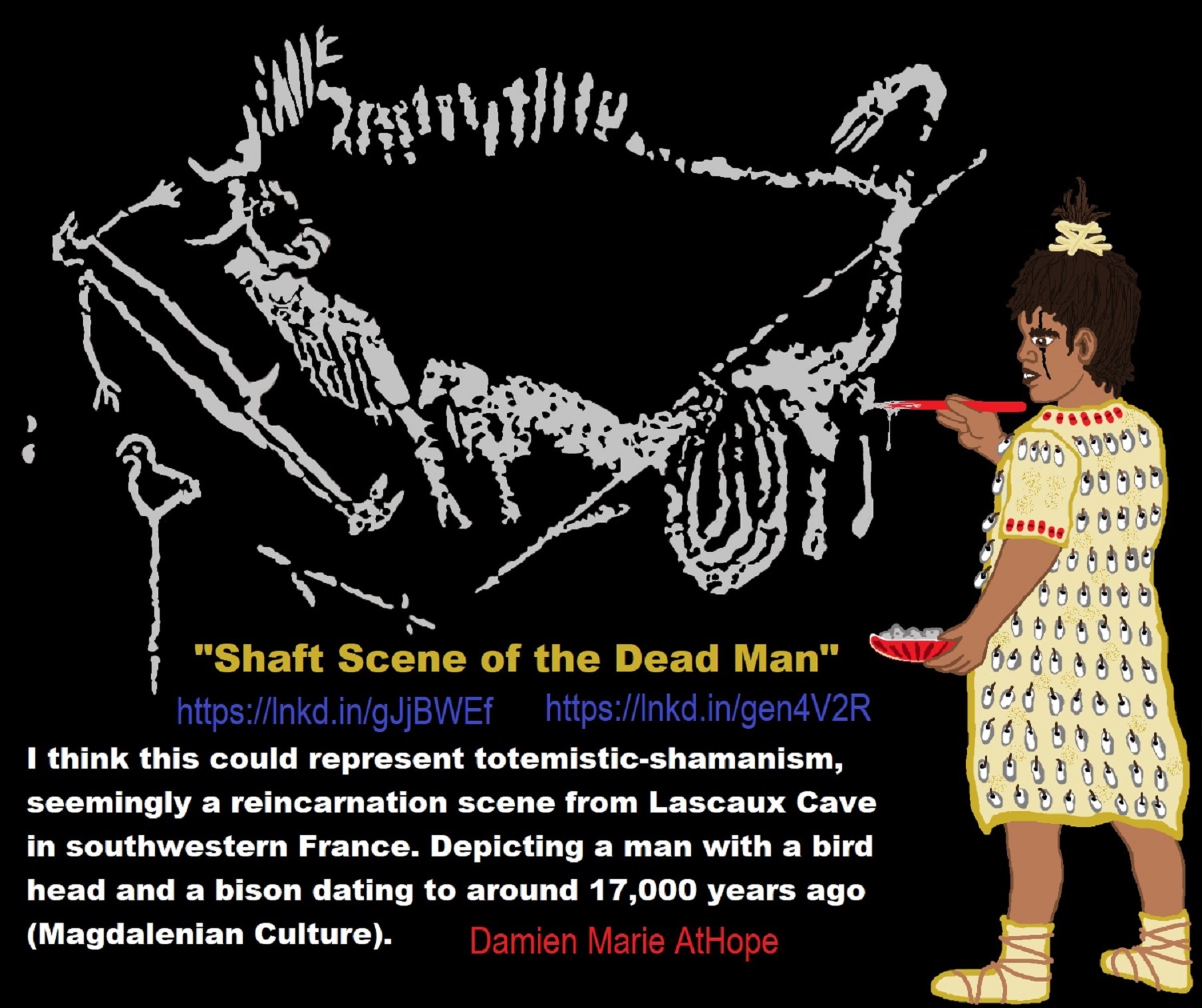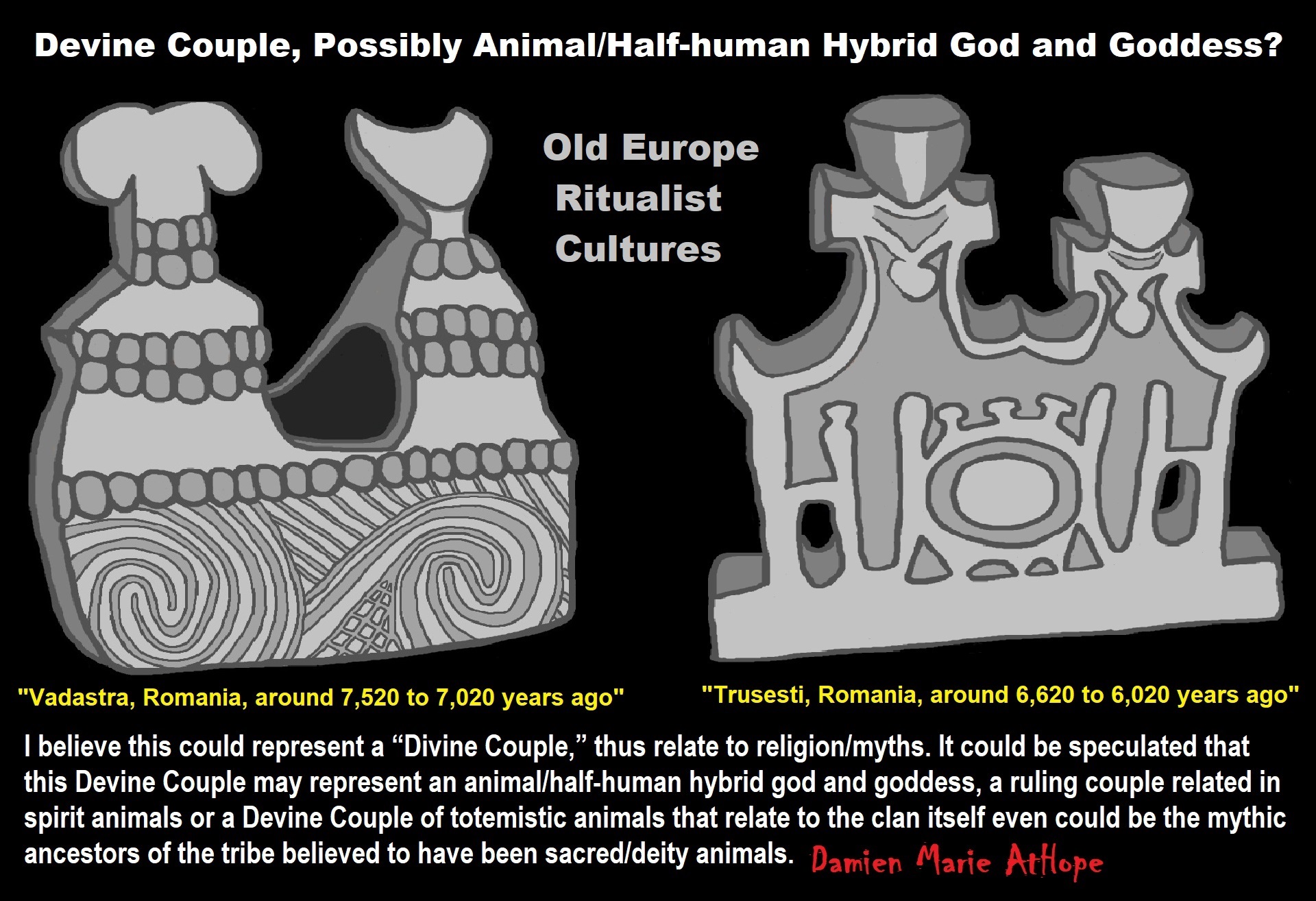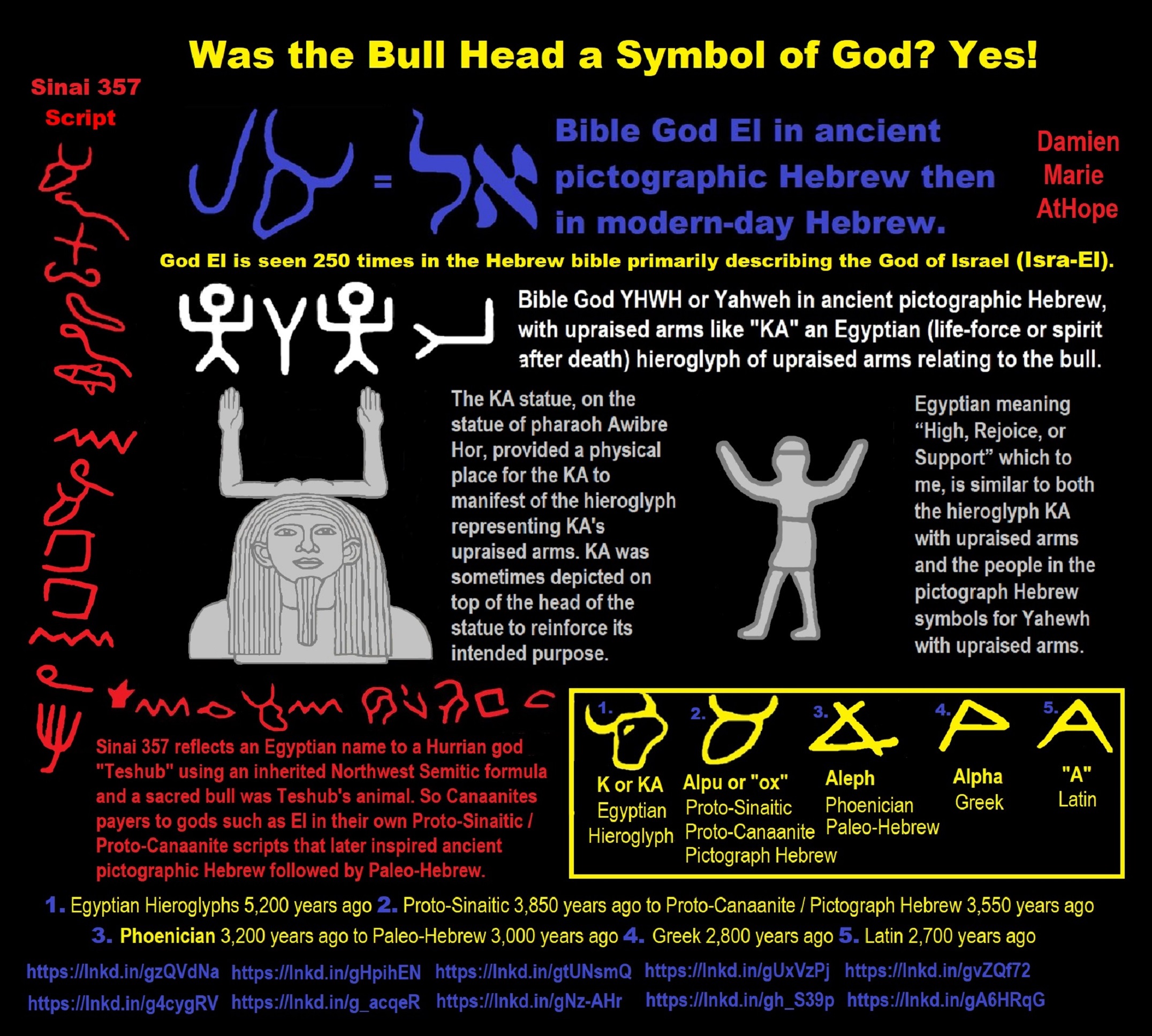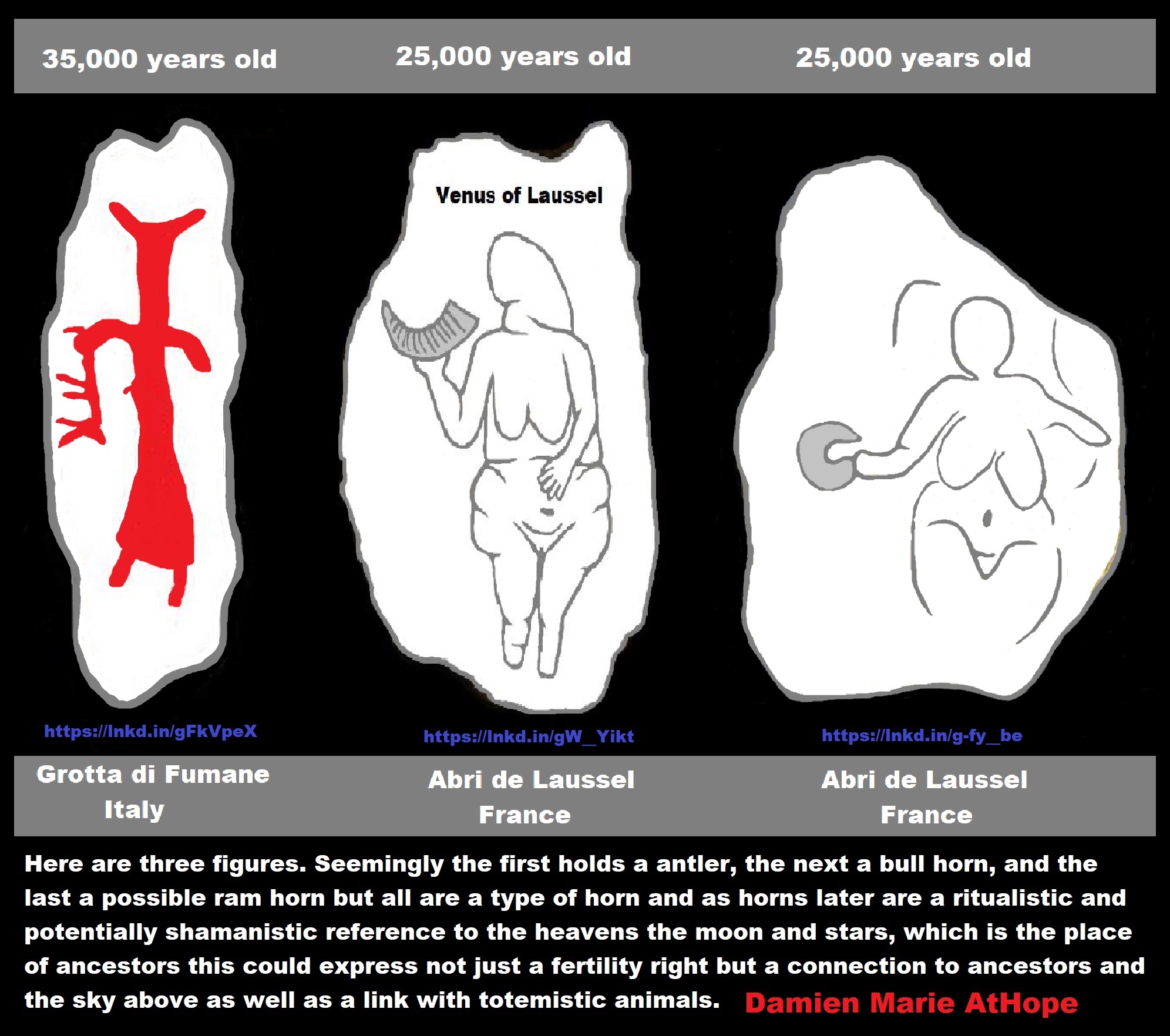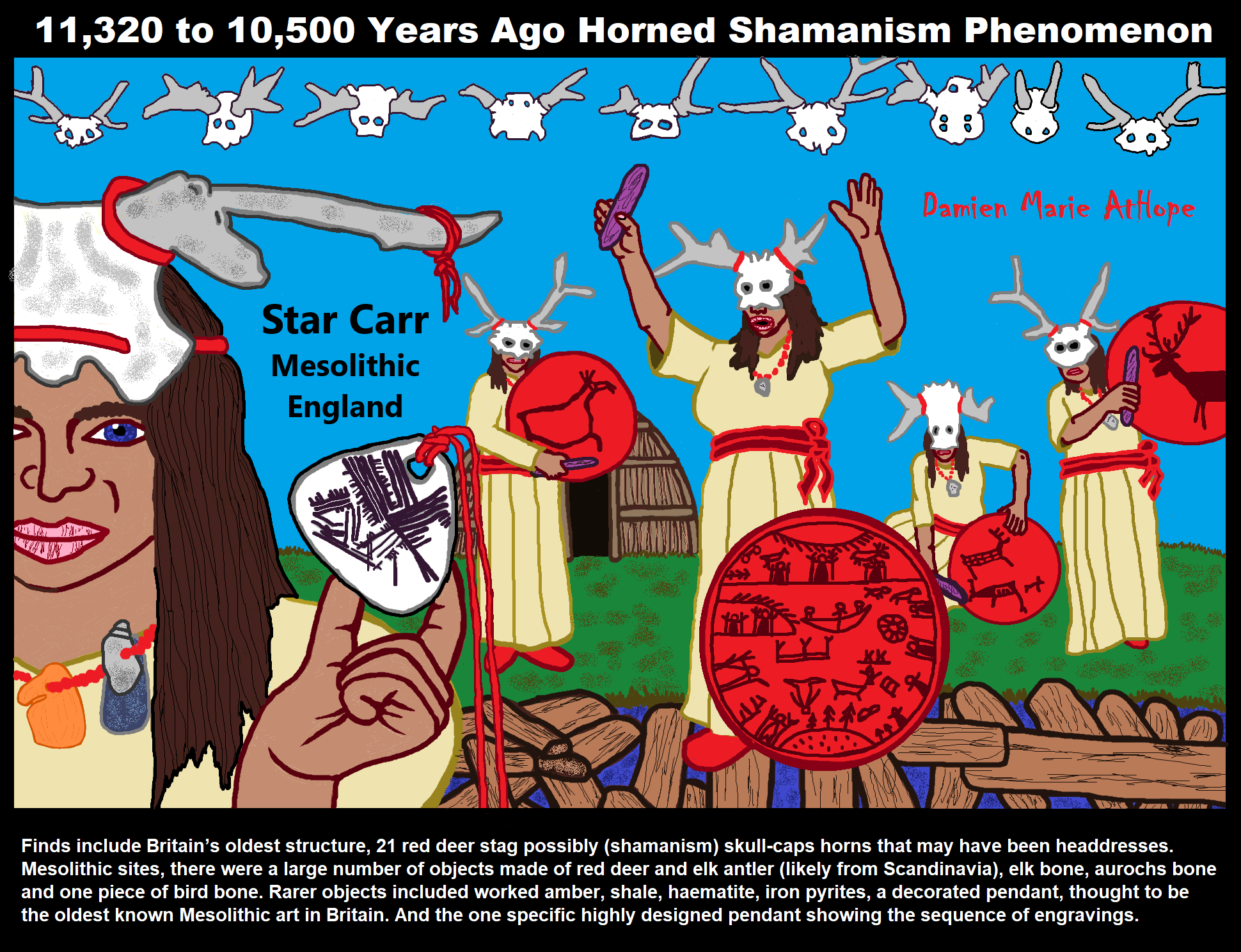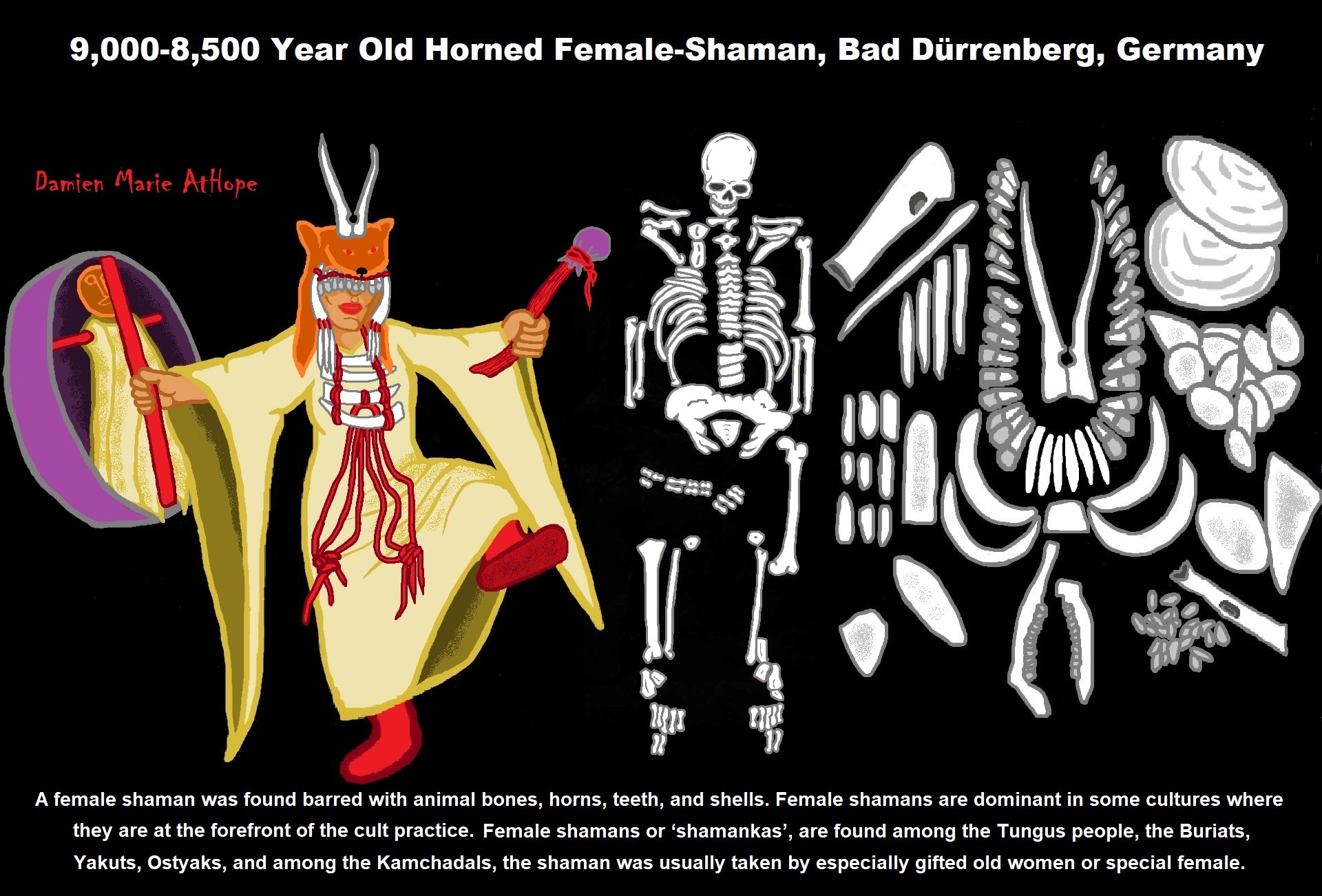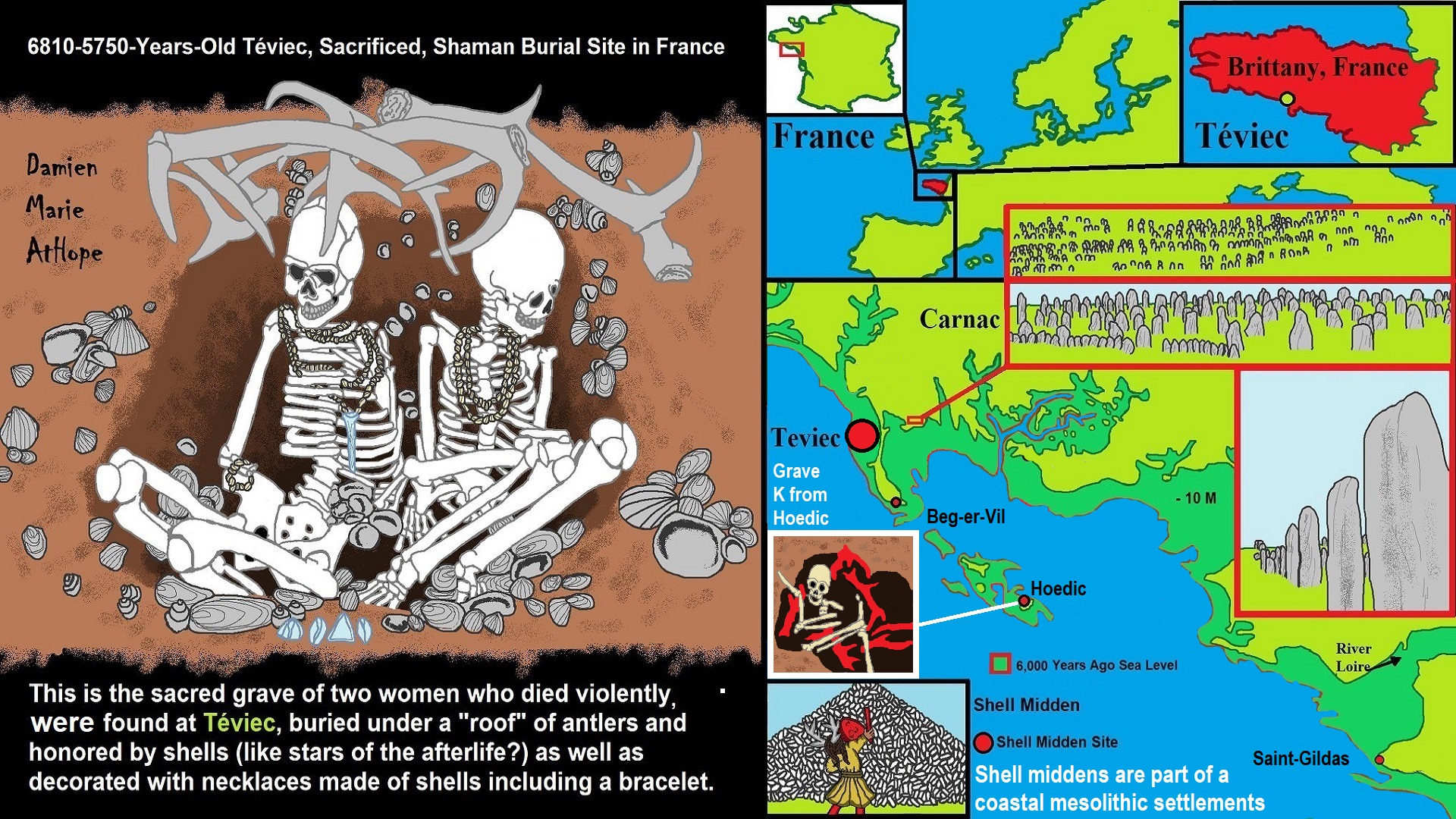7,000-year-old manure’ belongs to a dog or prehistoric person?
6,200 years ago, Cattle appear to have been valued largely for their poop?
“The earliest cities in Europe were built on the foundations of a mostly vegetarian diet, according to new research. The findings suggest that even with the dawn of agriculture and large, planned settlements, meat was but a delicacy. The gigantic circular cities of the Trypillia culture emerged around 6,000 years ago in what is now Ukraine and Moldova. The largest of these mega sites covered an area equivalent to several hundred football fields of land and once housed up to 15,000 people. They were larger than any other settlements in the world at the time, rivaling even the cities of ancient Mesopotamia that would soon follow in the Fertile Crescent.” ref
“Feeding each and every mouth in Trypillia society required “extremely sophisticated food and pasture management,” says paleoecologist Frank Schlütz, who led the study at the Christian-Albrechts-University in Germany. But even though cattle were a crucial part of the system, beef wasn’t. Between 4200 and 3650 BCE, animals domesticated by Trypillia societies were prized largely for their poop, not their flesh, according to Schlütz and his team. An analysis of nitrogen isotopes in teeth, bones, and soil from the remains of Tryphillia societies suggests that early farmers in Europe were mostly consuming peas, lentils, and cereal grains, like barley. Cattle, sheep, and goats, which were kept in fenced pastures, were largely used to fertilize farmland. These animals also ate peas and grains, and their manure boosted the production of later crops.” ref
Slaughtering the herds for meat would have depleted a vital resource after much labor raising them, collapsing the whole system. Previously, some scientists had assumed there was intensive meat production in Trypillia societies, based on the estimated size of their herds. But that may not be true after all. Animal products contributed just 8 to 10 percent of the regular Trypillia diet, according to Schlütz and his team. “We hypothesize that there would have been days during which only meat was consumed,” the authors write, as well as “some everyday meat consumption, preferably from small animals”. When crops and soil are fertilized by manure, biological turnover is increased, resulting in higher nitrogen isotope levels overall. This is how scientists determined that the crop yields of pea seeds and broad beans, found in the soil of Trypillia sites, were probably improved with “high levels of manuring, over long periods, on small plots close to houses and stables.” ref
“Cattle dung appears to have been the main fertilizer. Researchers predict hundreds of cows were “extensively pastured” at mega-sites, sometimes quite far from the settlement itself. Sheep and goats were also pastured, albeit to a smaller extent. The whole system was self-sustaining. Some mega sites were settled for over 150 years, providing a stable home for several generations of farmers. The “wise management of nutrients” meant that Trypillia societies did not overexploit their natural resources, the researchers say. No one really knows why the Trypillia culture dispersed into obscurity around 3000 BCE or around 5,000 years ago. Some experts suspect it was destroyed by force, or as the result of political tensions. Others hypothesize it was a colder and drier climate that spelled the end for these once-flourishing societies. The discovery of such an advanced agricultural technology that didn’t exploit the natural environment makes it all the more likely that the demise of the Trypillia was not economic, but based on social or political changes.” ref

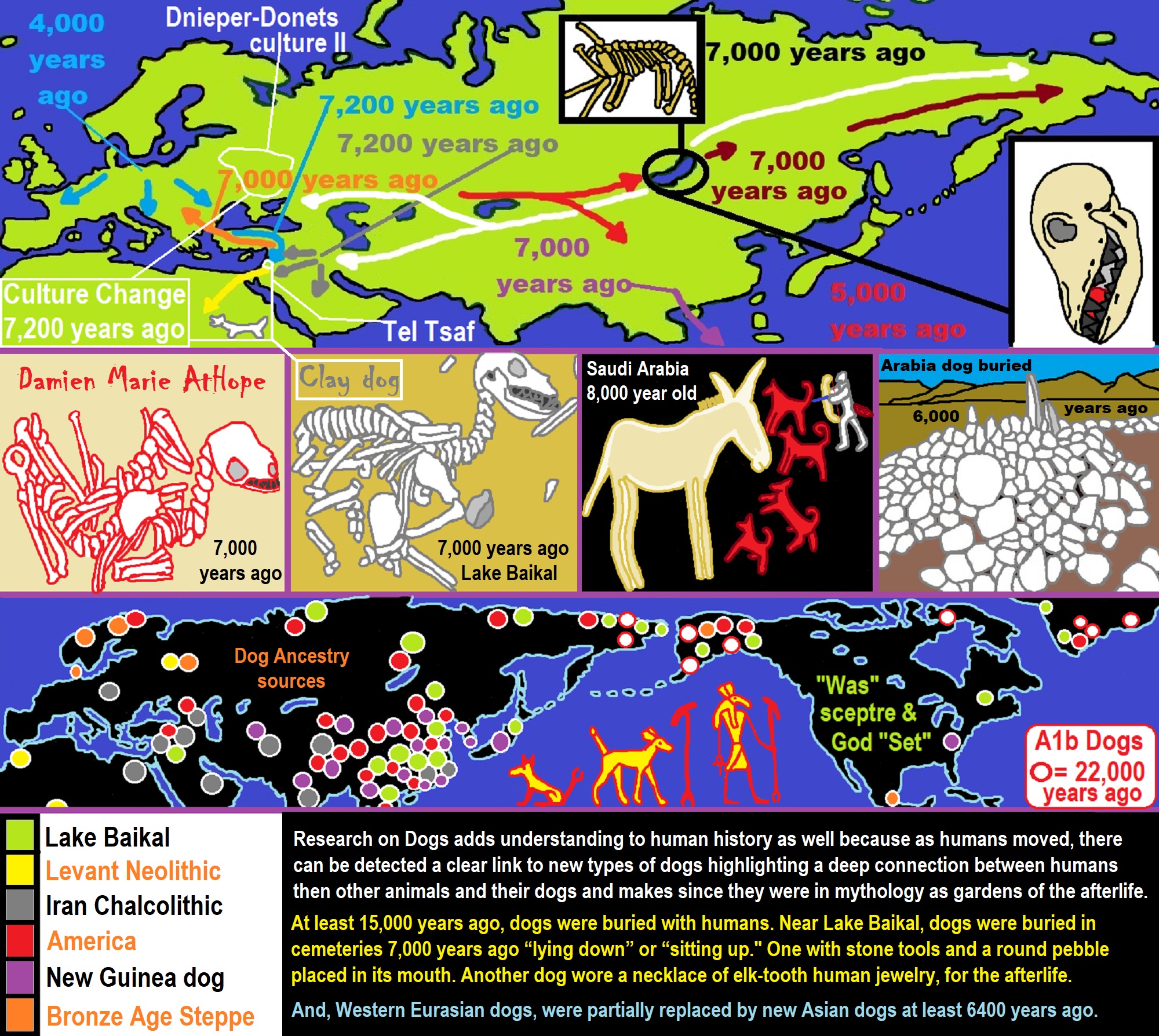
ref, ref, ref, ref, ref, ref, ref, ref, ref, ref, ref, ref, ref, ref
“Since the term ‘Ancient North Eurasian’ refers to a genetic bridge of connected mating networks, scholars of comparative mythology have argued that they probably shared myths and beliefs that could be reconstructed via the comparison of stories attested within cultures that were not in contact for millennia and stretched from the Pontic–Caspian steppe to the American continent.” ref
“For instance, the mytheme of the dog guarding the Otherworld possibly stems from an older Ancient North Eurasian belief, as suggested by similar motifs found in Indo-European, Native American, and Siberian mythology. In Siouan, Algonquian, Iroquoian, and in Central and South American beliefs, a fierce guard dog was located in the Milky Way, perceived as the path of souls in the afterlife, and getting past it was a test. The Siberian Chukchi and Tungus believed in a guardian-of-the-afterlife dog and a spirit dog that would absorb the dead man’s soul and act as a guide in the afterlife. In Indo-European myths, the figure of the dog is embodied by Cerberus, Sarvarā, and Garmr. Anthony and Brown note that it might be one of the oldest mythemes recoverable through comparative mythology.” ref
“A second canid-related series of beliefs, myths, and rituals connected dogs with healing rather than death. For instance, Ancient Near Eastern and Turkic–Kipchaq myths are prone to associate dogs with healing and generally categorized dogs as impure. A similar myth-pattern is assumed for the Eneolithic site of Botai in Kazakhstan, dated to 3500 BC, which might represent the dog as absorber of illness and guardian of the household against disease and evil. In Mesopotamia, the goddess Nintinugga, associated with healing, was accompanied or symbolized by dogs. Similar absorbent-puppy healing and sacrifice rituals were practiced in Greece and Italy, among the Hittites, again possibly influenced by Near Eastern traditions.” ref
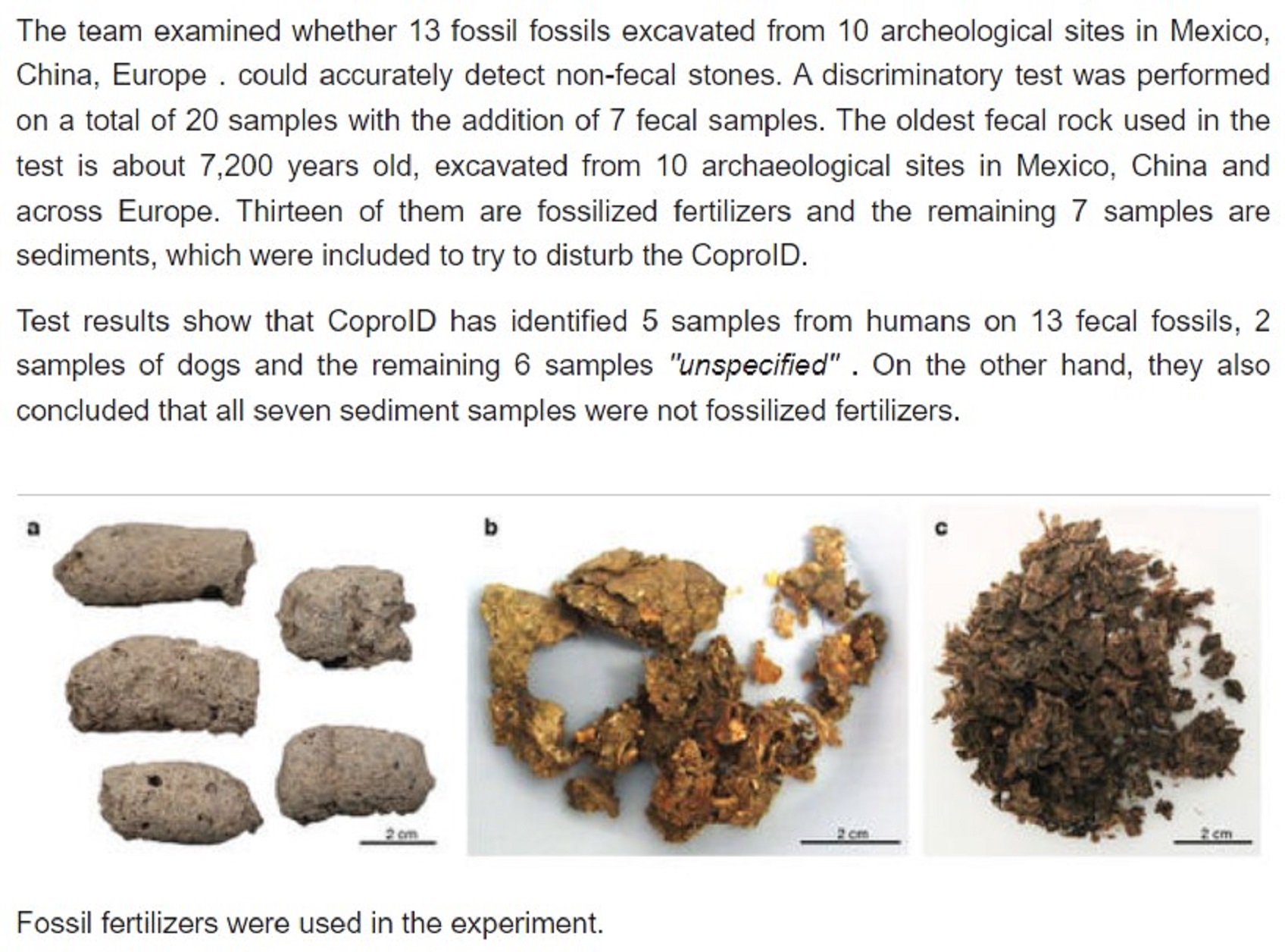
“The team examined whether 13 fossil fossils were excavated from 10 archeological sites in Mexico, China, Europe. could accurately detect non-fecal stones. A discriminatory test was performed on a total of 20 samples with the addition of 7 fecal samples. The oldest fecal rock used in the test is about 7,200 years old, excavated from 10 archaeological sites in Mexico, China and across Europe.” ref
“Thirteen of them are fossilized fertilizers and the remaining 7 samples are sediments, which were included to try to disturb the CoproID. Test results show that CoproID has identified 5 samples from humans on 13 fecal fossils, 2 samples of dogs, and the remaining 6 samples “unspecified”. On the other hand, they also concluded that all seven sediment samples were not fossilized fertilizers.” ref
“Management of soil fertility has preoccupied farmers for thousands of years. Egyptians, Romans, Babylonians, and early Germans are all recorded as using minerals or manure to enhance the productivity of their farms.” ref
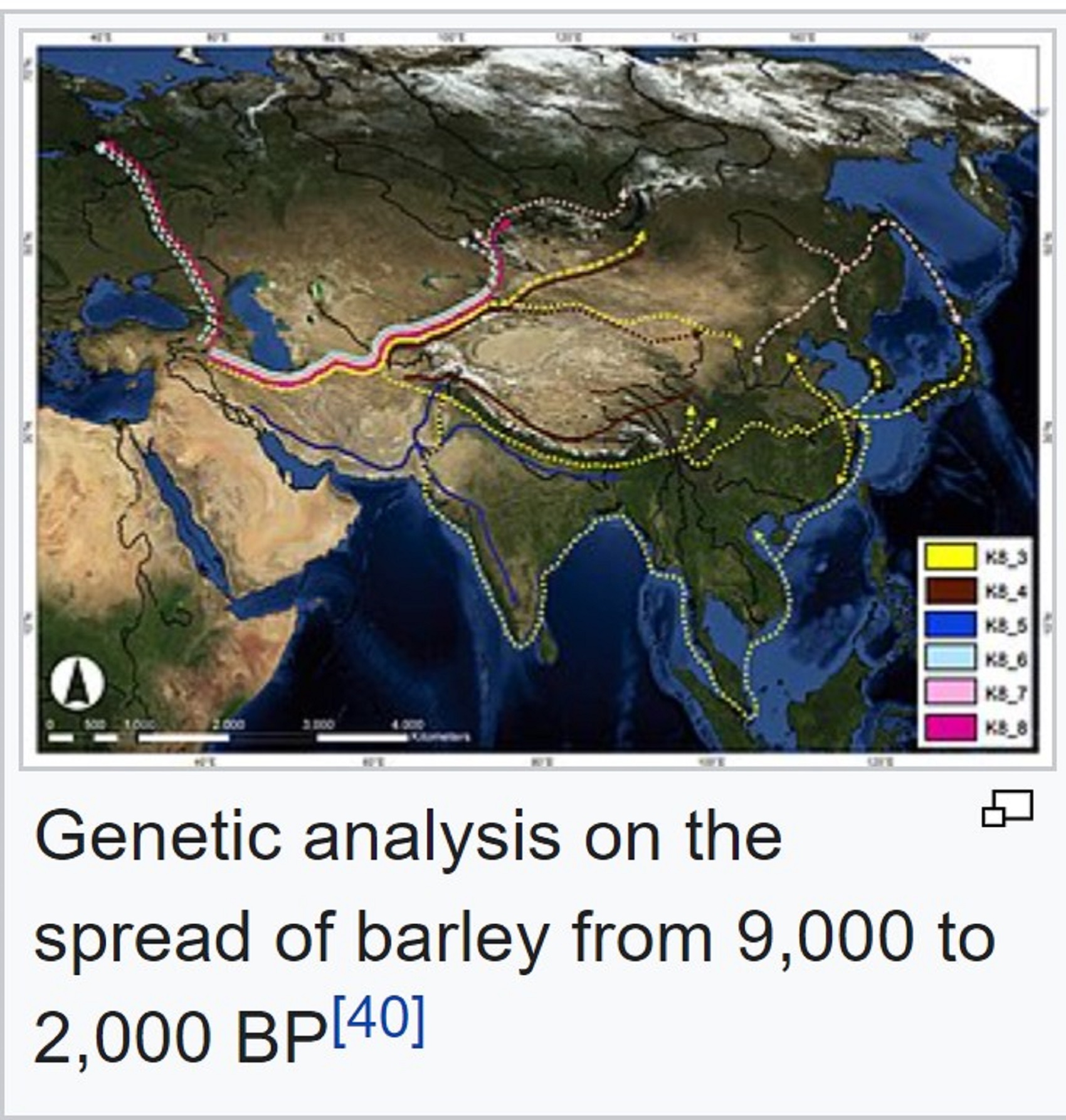

Manure?
“Manure is organic matter that is used as organic fertilizer in agriculture. Most manure consists of animal feces; other sources include compost and green manure. Manures contribute to the fertility of soil by adding organic matter and nutrients, such as nitrogen, that are utilized by bacteria, fungi, and other organisms in the soil. Higher organisms then feed on the fungi and bacteria in a chain of life that comprises the soil food web. According to a Byzantine tradition attributed to Cassianus Bassus pig dung was generally not usable as fertilizer, except for almond trees. Similar views recorded by Columella were unrelated to the Islamic taboos of later centuries, though the medieval Andalusian writer Ibn Bassal and some later writers from Yemen also recorded the negative effects of pig dung “burning” plants. Ibn Bassal described a sort of mixed manure with straw or sweeping mixed in as mudaf, implying that was not composed of only manure. The sweepings from hot baths included urine and human wastes, which Ibn Bassal describes as dry and salty, unsuitable for use as fertilizer unless mixed with manure. Ibn Bassal gives two recipes for composting pigeon (hamam) and possibly donkey (himar) manure, though the translation is uncertain. Bassal says the excessive heat and moist qualities of pigeon dung worked well for weaker and less hardy plants, especially those affected by cold temperatures.” ref
“Manure from different animals has different qualities and requires different application rates when used as fertilizer. For example horses, cattle, pigs, sheep, chickens, turkeys, rabbits, and guano from seabirds and bats all have different properties. For instance, sheep manure is high in nitrogen and potash, while pig manure is relatively low in both. Horses mainly eat grass and a few weeds so horse manure can contain grass and weed seeds, as horses do not digest seeds the way that cattle do. Cattle manure is a good source of nitrogen as well as organic carbon. Chicken litter, coming from a bird, is very concentrated in nitrogen and phosphate and is prized for both properties. Animal manure, such as chicken manure and cow dung, has been used for centuries as a fertilizer for farming. It can improve the soil structure (aggregation) so that the soil holds more nutrients and water, and therefore becomes more fertile. Animal manure also encourages soil microbial activity which promotes the soil’s trace mineral supply, improving plant nutrition. It also contains some nitrogen and other nutrients that assist the growth of plants. Due to the relatively lower level of proteins in vegetable matter, herbivore manure has a milder smell than the dung of carnivores or omnivores.” ref
It stands to reason that dung was equally valuable for the humans making the transition from hunter-gatherers to settlements in the Neolithic Middle East around 12,000 years ago, says Dr Shira Gur-Arieh, an archaeologist at Pompeu Fabra University in Barcelona, Spain. Dr Gur-Arieh is leading the MapDung project that is seeking to gain a richer understanding of how our species began to use this remarkable material. There is good evidence, for example, that Neolithic people in the area of the Middle East known as the Fertile Crescent began burning dung as a fuel in their hearths, she says.” ref
‘The way I imagine it is that these early Neolithic people begin keeping animals and they suddenly find themselves stepping in poop all the time,’ said Dr Gur-Arieh. ‘The first thing they discover is that it burns really well. It could also be used as fertiliser, of course. Then they start to touch the dung more and see its mechanical properties.’ When dung dries it becomes hard, which may have sparked the idea of using it for building. For example, it can be mixed with soil and water and used to build walls or floors.” ref
“But farmers sometimes kept only a few animals and so they would have had to choose how to use this precious resource. Where, how, and when did they decide to use it for building? Finding evidence of animal dung as an ancient construction material is not easy. In order to identify dung, archaeologists typically look for different markers that can be associated with it, such as microscopic remains of silicified plant cells and parasite eggs, and biomolecules. But animal dung degrades quickly, meaning many of these traces are lost.” ref
“Dr Gur-Arieh learned as much from field work conducted by her colleagues in India, where they observed people in rural villages who spread dung as a plaster floor outside their homes. As well as providing a flat surface, the dung also attracts flies, helping to keep them outside of peoples’ homes. Dr Gur-Arieh has been developing a working methodology that looks for multiple different chemical markers as a signifier of dung. If several of them are found, it gives a good indication that dung was being used at a site.” ref
“She is currently working at two sites. The first is called Sharara, a small settlement in the west of Jordan from a time before humans had invented pottery. The second site, called Motza, was a large village in the foothills of Jerusalem. So far, Dr Gur-Arieh has found evidence of dung being used in Motza, but not in Sharara. ‘But even the absence is interesting,’ she said. ‘It tells us about the decisions people made.’ But it may also be possible to track down the presence of dung and how it was used in other ways. Dr Marta Portillo, an environmental archaeologist at the University of Reading, UK, has been developing a combination of methods from geosciences, chemistry and botany for finding dung in a wide variety of archaeological contexts under the Microarchaeodung project.” ref
“Dr Portillo says she has already found some interesting indications of dung use using her techniques. Working on material excavated from a site known as Kharaysin in the Zarqa valley, Jordan, she found evidence of goat dung within the human settlement, suggesting the animals were living in close quarters with people. She also found evidence of the dung being used in hearths and ovens dating from about 900 BC. But crucially, the site has no pens or other structures that were used to keep animals. The findings suggest that dung was being used by the inhabitants at a time before animals had been fully domesticated, said Dr Portillo. The methods she has developed are already providing a bigger picture of how dung was used across the Middle East in the Neolithic period and how it helped our species flourish.” ref
Animal Dung and Archaeology?
“Abstract: Agropastoral subsistence practices can provide important insight into economic organization and surplus production, both integral factors in the emergence and development of socioeconomic inequality during the Chalcolithic Age of Southwest Asia. In this study, we examine evidence for plant husbandry, fuel use, and feasting in northern Mesopotamia during the Ubaid and Late Chalcolithic 1–2 periods (ca. 5200–3800 BCE) at the site of Surezha. Archaeobotanical remains from tell sites like Surezha are the product of multiple, interrelated depositional pathways, which, when carefully disentangled, speak to a variety of human behaviors, including fuel selection preferences, plant and animal management strategies, and commensality. The combined analysis of carbonized and mineralized carpological remains, wood charcoal, and dung spherulites recovered from Surezha document a mixed agropastoral subsistence strategy relying on animal husbandry and the cultivation of barley, hulled wheats, flax, and various pulses. Wild/weedy taxa and crop-processing debris made up a particularly large proportion of the preserved plant remains at the site, and, when combined with abundant evidence from dung spherulites and overall lack of wood charcoal, provide evidence for substantial reliance on dung fuel burning during the Chalcolithic. The dataset also includes one of the largest and most unique assemblages of mineralized seeds identified to date in Mesopotamia, which may represent the remnants of LC 1–2 feasting activities.” ref
Dung in the dumps: what we can learn from multi-proxy studies of archaeological dung pellets
“Considering the centrality of livestock to agricultural and pastoral societies, there is still much to learn from the archaeology of herbivore dung, studied intensively now for decades. Dung is presumed to have been collected by the earliest hunter-gatherers and its use by humans for fuel has been hypothesized as a driving factor in prehistoric migrations and domestication processes. As a byproduct of livestock rearing, dung was used for building material, fertilizer, and fuel in ancient and traditional societies, and is relatively common in archaeological assemblages. Hence, herbivore dung is a valuable archaeological artifact/ecofact that can provide information on ancient daily life, economy, and ecology at a site and its vicinity.” ref
Dung and Rituals or Religion?
Prayers of Cow Dung: Women Sculpturing Fertile Environments in Rural Rajasthan (India)
“Abstract: In line with the special issue’s focus on material religion and ritualistic objects, this article focuses on the multi-sensory prayers that certain groups of Hindu women craft in cow dung at the doorstep of their residences during Divali. This yearly ritual of kneading and praying with cow dung is known as the Govardhan puja (worship of Mount Govardhan). It is generally said to be the worship of the popular cowherd god Krishna and the natural environment he inhabits. Ethnographic research into the multiple meaningful layers of women’s cow dung sculptures in the rural villages nearby Udaipur (Rajasthan) reveals the ritual is more than that. The cow dung sculptures not only reflect Krishna’s body and sacred landscape but also the local environment women share with families, animals, and (other) gods. Therefore, the article seeks to answer the following questions: how are women’s cow dung sculptures built up as ritual objects, what different images are expressed in them, and what do these images reveal about women’s intimate and gendered connections with their human and non-human environment? To answer these questions the article focuses on the iconography of women’s sculptures, the performance of the ritual, and the doorstep as the location where women’s beautification of the cow dung takes place.” ref
Villagers celebrate unique cow dung splashing ritual
“The ritual held at Gumtapuram village in Talavadi Hills is celebrated for over three centuries. Villagers splash cow dung during the annual temple festival at Gumtapuram village in Talavadi Hills in Erode, India. The ritual is celebrated on the third day after Deepavali as people believed that their ancestors noticed blood oozing from a ‘lingam’ that was concealed inside a heap of cow dung. Hence, they celebrate the festival that is celebrated for over three centuries.” ref
“Gumtapuram village in Talavadi Hills performed a unique ritual here on Tuesday in which men of all ages splashed cow dung over each other. The ritual is celebrated on the third day after Deepavali as people believed that their ancestors noticed blood oozing from a ‘lingam’ that was concealed inside a heap of cow dung. Hence, they celebrate the festival that is celebrated for over three centuries. The village is located at the Tamil Nadu – Karnataka border and draws huge crowds from the neighboring State every year.” ref
Ethiopian reconciliation ritual that involves being smeared with DUNG
“The peace ritual of the Dassanech people involves being smeared in animal dung. Poo is taken from stomach and bowels of slaughtered cattle before being applied to the skin. After everyone has been covered in excrement, the warriors and elders sit down for a barbecue. The use of dung shows the people’s respect for the cattle on which they rely. Under ordinary circumstances, the Dassanech consider cows too precious to kill. 200,000 strong Dassanech tribe live in the Omo River valley in southern Ethiopia. Being smeared in dung is an important of the Dassanech peace ritual. Their eyes shining and their AK-47s slung casually over their shoulders, Ethiopia’s Dassanech people are conducting a ceremony to finalise a peace agreement between two of the warring clans that share their homeland, a fertile stretch that runs alongside the Omo River in southern Ethiopia. But this is no ordinary peace ritual. For the Dassanech, the high point of the ceremony comes when they slice open the stomach of a freshly-slaughtered cow and cover themselves in a smelly mixture of poo and stomach juices.” ref
“Dung (‘ashpoth, domen, peresh; skubalon, etc.): Nine different words occurring in the Hebrew have been translated “dung” in the Old Testament. The word used to designate one of the gates of Jerusalem (‘ashpoth, Ne 2:13; 3:14) is more general than the others and may mean any kind of refuse. The gate was probably so named because outside it was the general dump heap of the city. Visitors in recent years riding outside the city walls of Jerusalem, on their way to the Mt. of Olives or Jericho, may have witnessed such a dump against the wall, which has existed for generations.” ref
“The first mention made of dung is in connection with sacrificial rites. The sacred law required that the dung, along with what parts of the animal were not burned on the altar, should be burned outside the camp (Ex 29:14; Le 4:11; 8:17; 16:27; Nu 19:5). The fertilizing value of dung was appreciated by the cultivator, as is indicated by Lu 13:8 and possibly Ps 83:10 and Isa 25:10.” ref
“Dung was also used as a fuel. Eze 4:12,15 will be understood when it is known that the dung of animals is a common fuel throughout Palestine and Syria, where other fuel is scarce. During the summer, villagers gather the manure of their cattle, horses, or camels, mix it with straw, make it into cakes and dry it for use as fuel for cooking, especially in the winter when wood or charcoal, or straw are not procurable. It burns slowly like peat and meets the needs of the kitchen. In Mesopotamia, the writer saw it being used with forced draft to fire a steam boiler. There was no idea of uncleanness in Ezekiel’s mind, associated with the use of animal dung as fuel (Eze 4:15).” ref
“Figuratively: Dung was frequently used figuratively to express the idea (a) of worthlessness, especially a perishable article for which no one cares (1Ki 14:10; 2Ki 6:25; 9:37; Job 20:7; Ps 83:10; Jer 8:2; 9:22; 16:4; 25:33; Zep 1:17; Php 3:8 (the American Standard Revised Version “refuse”)). Dunghill was used in the same way (1Sa 2:8; Ezr 6:11; Ps 113:7; Isa 25:10; Da 2:5; 3:29; Lu 14:35; La 4:5); (b) as an expression of disgust (2Ki 18:27; Isa 36:12); (c) of rebuke (Mal 2:3).” ref
Unusual Ancient Medical Techniques
“Animal Dung Ointments: The ancient Egyptians had a remarkably well-organized medical system, complete with doctors who specialized in healing specific ailments. Nevertheless, the cures they prescribed weren’t always up to snuff. Lizard blood, dead mice, mud, and moldy bread were all used as topical ointments and dressings, and women were sometimes dosed with horse saliva as a cure for an impaired libido.” ref
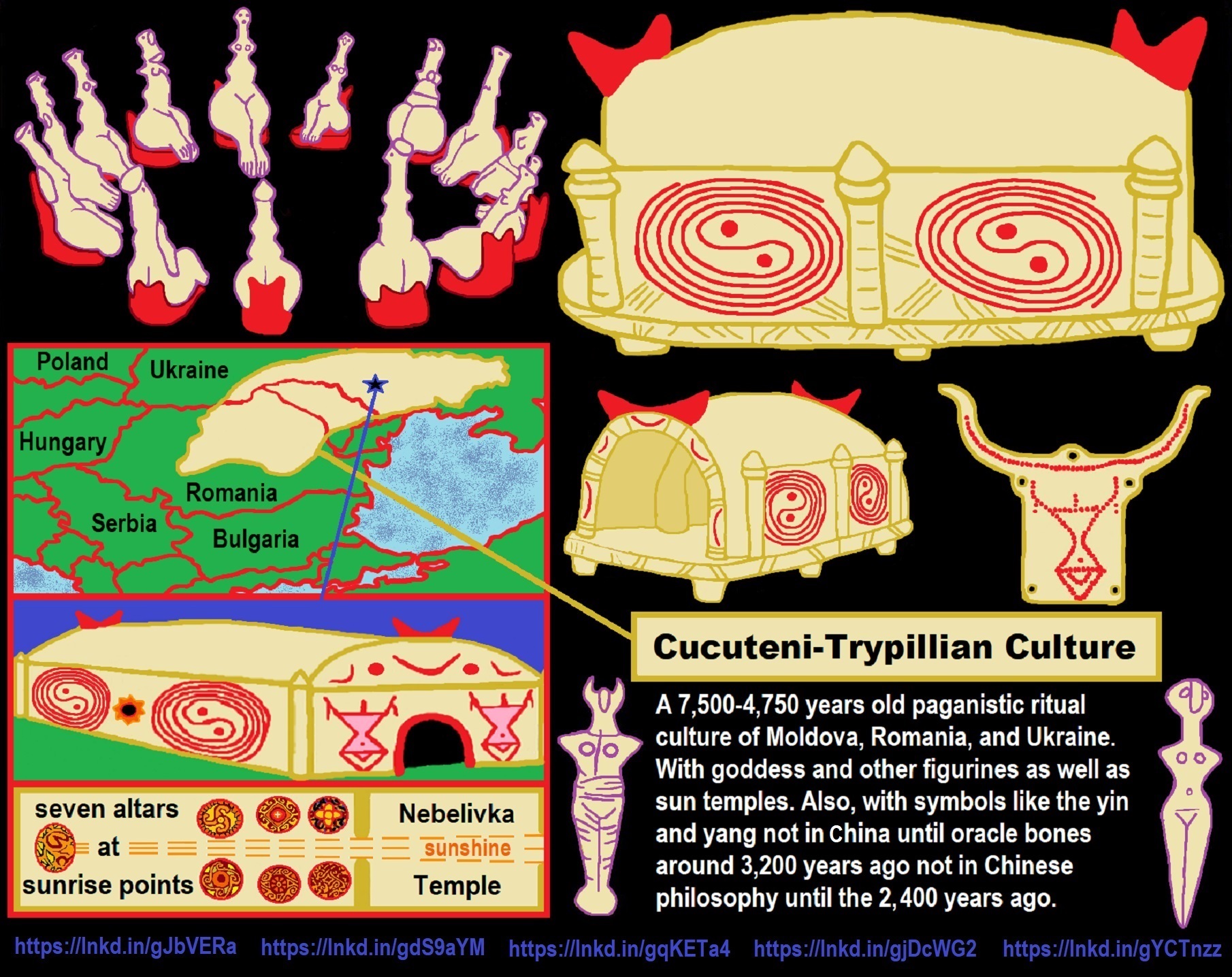
ref, ref, ref, ref, ref, ref, ref, ref, ref, ref, ref, ref
“Andrew Sherratt has argued that following upon the Neolithic Revolution was a second phase of discovery that he refers to as the secondary products revolution. Animals, it appears, were first domesticated purely as a source of meat. The Secondary Products Revolution occurred when it was recognized that animals also provided a number of other useful products.” ref
“These included:
- hides and skins (from undomesticated animals)
- manure for soil conditioning (from all domesticated animals)
- wool (from sheep, llamas, alpacas, and Angora goats)
- milk (from goats, cattle, yaks, sheep, horses, and camels)
- traction (from oxen, onagers, donkeys, horses, camels, and dogs)
- guarding and herding assistance (dogs)” ref
“Sherratt argued that this phase in agricultural development enabled humans to make use of the energy possibilities of their animals in new ways, and permitted permanent intensive subsistence farming and crop production, and the opening up of heavier soils for farming. It also made possible nomadic pastoralism in semi-arid areas, along the margins of deserts, and eventually led to the domestication of both the dromedary and Bactrian camel. Overgrazing of these areas, particularly by herds of goats, greatly extended the areal extent of deserts.” ref
“Living in one spot permitted the accrual of personal possessions and an attachment to certain areas of land. From such a position, it is argued, prehistoric people were able to stockpile food to survive lean times and trade unwanted surpluses with others. Once trade and a secure food supply were established, populations could grow, and society could diversify into food producers and artisans, who could afford to develop their trade by virtue of the free time they enjoyed because of a surplus of food. The artisans, in turn, were able to develop technology such as metal weapons.” ref
“Such relative complexity would have required some form of social organization to work efficiently, so it is likely that populations that had such organization, perhaps such as that provided by religion, were better prepared and more successful. In addition, the denser populations could form and support legions of professional soldiers. Also, during this time property ownership became increasingly important to all people. Ultimately, Childe argued that this growing social complexity, all rooted in the original decision to settle, led to a second Urban Revolution in which the first cities were built.” ref
“Throughout the development of sedentary societies, disease spread more rapidly than it had during the time in which hunter-gatherer societies existed. Inadequate sanitary practices and the domestication of animals may explain the rise in deaths and sickness following the Neolithic Revolution, as diseases jumped from the animal to the human population. Some examples of infectious diseases spread from animals to humans are influenza, smallpox, and measles.” ref
“Ancient microbial genomics has shown that progenitors to human-adapted strains of Salmonella enterica infected up to 5,500-year-old agro-pastoralists throughout Western Eurasia, providing molecular evidence for the hypothesis that the Neolithization process facilitated the emergence of human-disease. In concordance with a process of natural selection, the humans who first domesticated the big mammals quickly built up immunities to the diseases as within each generation the individuals with better immunities had better chances of survival. In their approximately 10,000 years of shared proximity with animals, such as cows, Eurasians and Africans became more resistant to those diseases compared with the indigenous populations encountered outside Eurasia and Africa.” ref
“For instance, the population of most Caribbean and several Pacific Islands have been completely wiped out by diseases. 90% or more of many populations of the Americas were wiped out by European and African diseases before recorded contact with European explorers or colonists. Some cultures like the Inca Empire did have a large domestic mammal, the llama, but llama milk was not drunk, nor did llamas live in a closed space with humans, so the risk of contagion was limited.” ref
“According to bioarchaeological research, the effects of agriculture on physical and dental health in Southeast Asian rice farming societies from 4000 to 1500 BP was not detrimental to the same extent as in other world regions. Jonathan C. K. Wells and Jay T. Stock have argued that the dietary changes and increased pathogen exposure associated with agriculture profoundly altered human biology and life history, creating conditions where natural selection favored the allocation of resources towards reproduction over somatic effort.” ref

ref, ref, ref, ref, ref, ref, ref
List of Lunar Deities
“In mythology, a lunar deity is a god or goddess of the Moon, sometimes as a personification. These deities can have a variety of functions and traditions depending upon the culture, but they are often related. Some forms of moon worship can be found in most ancient religions. The Moon features prominently in art and literature, often with a purported influence in human affairs. Many cultures are oriented chronologically by the Moon, as opposed to the Sun. The Hindu calendar maintains the integrity of the lunar month and the moon god Chandra has religious significance during many Hindu festivals (e.g. Karwa Chauth, Sankashti Chaturthi, and during eclipses). The ancient Germanic tribes were also known to have a lunar calendar.” ref
“Many cultures have implicitly linked the 29.5-day lunar cycle to women’s menstrual cycles, as evident in the shared linguistic roots of “menstruation” and “moon” words in multiple language families. This identification was not universal, as demonstrated by the fact that not all moon deities are female. Still, many well-known mythologies feature moon goddesses, including the Greek goddess Selene, the Roman goddess Luna, and the Chinese goddess Chang’e. Several goddesses including Artemis, Hecate, and Isis did not originally have lunar aspects, and only acquired them late in antiquity due to syncretism with the de facto Greco-Roman lunar deity Selene/Luna. In traditions with male gods, there is little evidence of such syncretism, though the Greek Hermes has been equated with the male Egyptian lunar god Thoth.” ref
“Male lunar gods are also common, such as Sin of the Mesopotamians, Mani of the Germanic tribes, Tsukuyomi of the Japanese, Igaluk/Alignak of the Inuit, and the Hindu god Chandra. The original Proto-Indo-European lunar deity appears to have been male, with many possible derivatives including the Homeric figure of Menelaus. Cultures with male moon gods often feature sun goddesses. An exception is Hinduism, featuring both male and female aspects of the solar divine. The ancient Egyptians had several moon gods including Khonsu and Thoth, although Thoth is a considerably more complex deity. Set represented the moon in the Egyptian Calendar of Lucky and Unlucky Days.” ref
List of Solar Deities
“A solar deity is a god or goddess who represents the Sun, or an aspect of it, usually by its perceived power and strength. Solar deities and Sun worship can be found throughout most of recorded history in various forms. The following is a list of solar deities. A dawn god or goddess is a deity in a polytheistic religious tradition who is in some sense associated with the dawn. These deities show some relation with the morning, the beginning of the day, and, in some cases, become syncretized with similar solar deities.” ref, ref
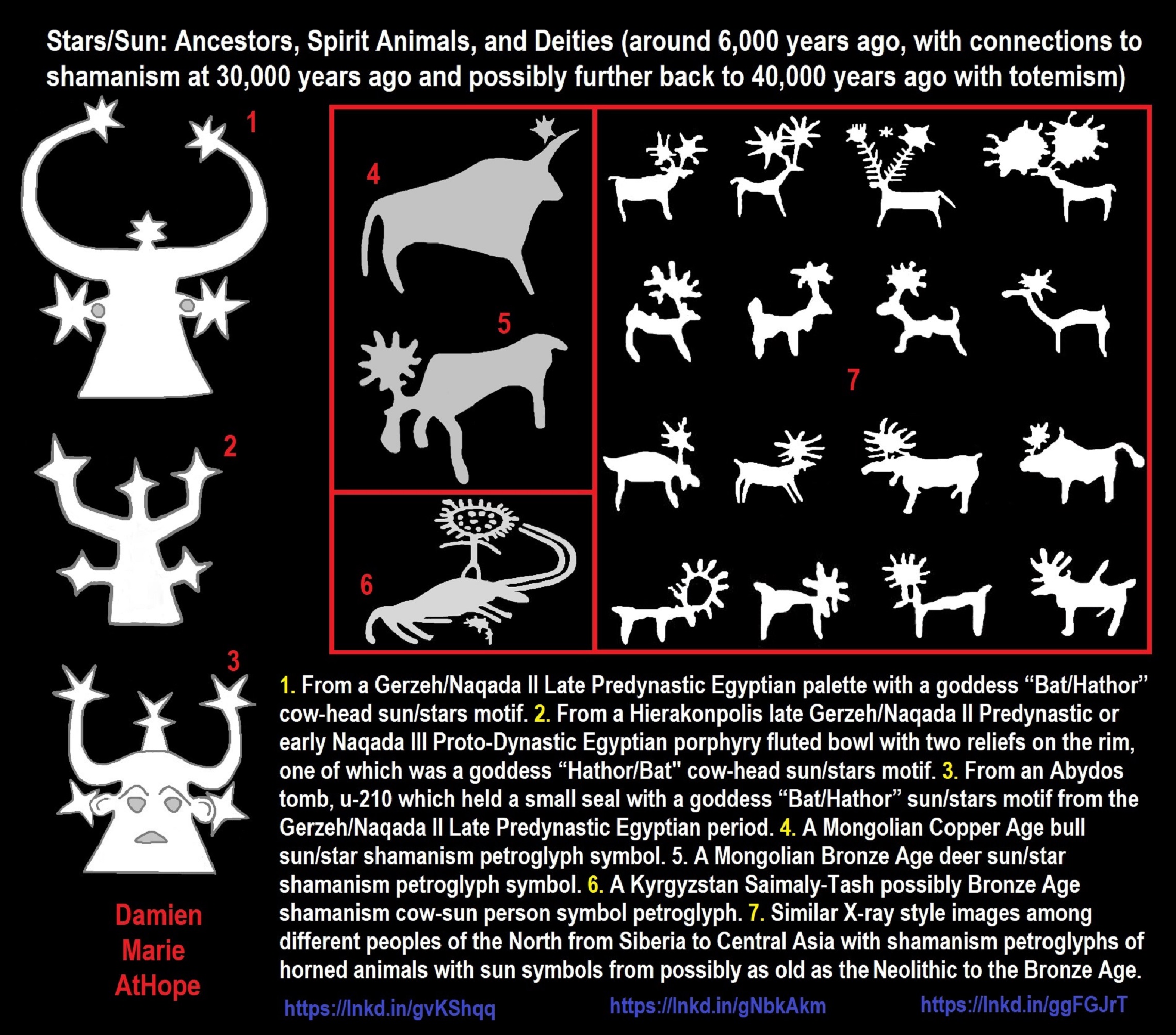
- From a Gerzeh/Naqada II Late Predynastic Egyptian palette with a goddess “Bat/Hathor” cow-head sun/stars motif.
- From a Hierakonpolis late Gerzeh/Naqada II Predynastic or early Naqada III Proto-Dynastic Egyptian porphyry fluted bowl with two reliefs on the rim, one of which was a goddess “Hathor/Bat” cow-head sun/stars motif.
- From an Abydos tomb, u-210 which held a small seal with a goddess “Bat/Hathor” sun/stars motif from the Gerzeh/Naqada II Late Predynastic Egyptian period.
- A Mongolian Copper Age bull sun/star shamanism petroglyph
- A Mongolian Bronze Age deer sun/star shamanism petroglyph symbol.
- A Kyrgyzstan Saimaly-Tash possibly Bronze Age shamanism cow-sun person symbol petroglyph.
- Similar X-ray style images among different peoples of the North from Siberia to Central Asia with shamanism petroglyphs of horned animals with sun symbols from possibly as old as the Neolithic to the Bronze Age. ref, ref, ref
“In Siberia, shamans combine a distinctive imagery of reindeer and of bird-flight. Their costumes sometimes include imitation reindeer antlers, occasionally tipped with wings or feathers, placed on the headdress, or attached to the shoulders at the very point where reindeer are tattooed on the Pazyryk mummies. Like the participants in the Eveny midsummer ritual, shamans may ride to the sky on a bird or a reindeer. But their relationship with these animals goes far beyond mere riding. One shaman is suckled by a white reindeer during his initiatory vision as he incubates in a bird’s nest on a branch high in the tree that links earth and sky.” ref
“Another becomes a reindeer himself by wearing its hide, while hunters with miniature bows and arrows surround him and mime the act of killing. The hide is then stretched across the broad, flat drum that the shaman will beat as accompaniment to his trance. Another shaman, seeking to consecrate his reindeer-skin drum, is guided by spirits as he combs through the forest to find the location where the reindeer was born and traces every place it has ever visited over the course of its life, right up to the point where it was killed. As he picks his way through bogs and over fallen branches, he picks up the scattered material traces of its existence — snapped twigs, dried dung — to gather together every possible part of its being, and then moulds them into a small effigy of the reindeer. When he sprinkles the effigy with a magical ‘water of life’, the drum comes to life. Like a reindeer itself but with enhanced power, it is now capable of bearing the shaman aloft with its throbbing beat to nine, twelve, or more levels of the heavens.” ref

ref, ref, ref, ref, ref, ref, ref, ref, ref, ref, ref, ref, ref, ref
Reindeer Myths & Legends?
“Reindeer have always held a special place in the stories and traditions of the Arctic, from the Sámi in northern Scandinavia, to the epic poetry of the Finns, to people around the world. More than just a source of food and fur, reindeer have always been part of the myths and tales of Northern people around the world. The Sámi believed the reindeer came from the Sun Himself and Finns told stories of clever artificers crafting reindeer by hand. And the Innus spoke in hushed tones of the dark and terrible Caribou House far in the North.” ref
Rudolph, the destroyer of worlds
“The Sámi people who inhabit northernmost Europe are not one homogeneous group with only one language and one culture. The history of the Sámi is rich with many cultural traditions and customs as well as stories and myths about their antlered friends, the reindeer. For more on Sámi people, their history, and culture, check out Siida – the Sámi Museum & Nature Centre.” ref
“Reindeer are one of the latest wild animals to be domesticated, which happened about 3,000 years ago. Sámi traditions of where reindeer came from and why some are wild and others not range from fables to epic tales of gods and man. One story is that there were once two reindeer owned by sisters. The reindeer would roam in the wild but always return to be milked by the sisters. While one sister was gentle and caring for her reindeer, the other was harsh and left bruises and scabs. Finally, the mistreated reindeer had enough, vowing to flee to the wilderness and never return. Wild reindeer are descended from this reindeer, and the meek domesticated reindeer from the other.” ref
“Another tradition states that the Sun owned a cosmic reindeer herd, and He was pulled in a sledge around the world. Early in the year, the sledge was pulled by a strong bear, making the Sun bright and powerful. But He replaced his bear with a reindeer bull, then a reindeer cow, as the year progressed, causing the Sun to be weaker and weaker until it vanished entirely in winter. The daughter of the Sun, Njaveseatni the Sun Maiden, eschewed celestial suitors and married a man from Earth, and her dowry was part of the Sun’s reindeer herd. One ancient Sámi story tells of a constellation in the night sky—a hunter with his bow aimed at the Cosmic Reindeer in an eternal hunt. When the arrow finally lands, and the Cosmic Reindeer falls, the world as we know it will end.” ref
Franken-reindeer
“Finns and Karelians also had their fair share of reindeer tales and songs, like the Songs of Vaadin. Vaadin (which is also the name for a female reindeer) was created by Seppo Ilmarinen (of Finnish epic poem Kalevala fame) to assist him on his journeys for knowledge. Seppo was an immortal artificer capable of crafting anything. Songs of Vaadin’s adventures were and still are sung by Finnish shamans. Vaadin was crafted with bones of stone, flesh of moss, and skin of birch bark. Seppo gave her lichen to eat, mead to drink, and she carried him far and wide in search of the knowledge and components necessary to create many magical items. Other hand-crafted reindeer from Finnish mythology are not so glorious and noble. In the Kalevala, the reindeer created by the villainous Hiisi has a head and flesh of rotten wood, antlers of willow branch, and other bodies parts crafted from swamp plants and materials.” ref
Around the world in 1 night (or 10,000 years)
“Talk to a child just about anywhere in the world, and they can tell you some stories of Santa Claus and his reindeer. How they fly, how they travel at supersonic (and possibly faster-than-light) speeds in order to deliver Christmas gifts to boys and girls all over the world. Talk to their great-grandparents, especially those from northern climes, and you might get hints of altogether different stories. In Mongolia, the Dukha (Tsaatan) are among the last nomadic reindeer herders in the world, with only about 40 families remaining. These families have kept up the stories and traditions of their people.” ref
“One tradition might be the origin of flying reindeer: deer stones. Carved from granite, some deer stones tower at over 4 meters tall, with markings facing east. These markings show reindeer leaping through the ear, often with the sun between their antlers. In Canada, where reindeer are wild and called caribou, an Innu man once fell in love with a caribou woman. He became a caribou himself and master of all caribou. If an Innu doesn’t follow the traditional hunting rituals to show respect for animals, the Caribou Master would keep animals out of the hunter’s path. The Caribou Master lived in a remove dangerous land, in a house surrounded by a deep layer of discarded antlers.” ref
“The West Greenland Inuits believed that when a person died, they would either hunt marine animals in the underworld or travel to the sky to hunt spiritual caribou forever and forever. What did we just say about hunting reindeer in the sky? In the far-east of Russia, the Koryak people of Kamchatka Krai tell the story of how the Creator traveled to the stars to bring the antlered animal to Earth for humans. Like the Sámi people, the Koryak also craft drums of reindeer hide, and shaman use them in mystical rituals. In what is now Kyrgyzstan, the tribes used to believe reindeer were their totems, a respected animal that spiritually represented their family or clan. The Native American tribe Ojibways and ancient Norwegians also held reindeer as their familial or clan totems.” ref

ref, ref, ref, ref, ref, ref, ref, ref, ref, ref, ref, ref, ref, ref, ref, ref, ref, ref, ref
“The reindeer has an important economic role for all circumpolar peoples, including the Sámi, the Swedes, the Norwegians, Finns, and the northwestern Russians in Europe, the Nenets, the Khanty, the Evenks, the Yukaghirs, the Chukchi, and the Koryaks in Asia and the Inuit in North America. It is believed that domestication started between the Bronze and Iron Ages. Siberian reindeer owners also use the reindeer to ride on (Siberian reindeer are larger than their Scandinavian relatives). For breeders, a single owner may own hundreds or even thousands of animals.” ref
The numbers of Russian and Scandinavian reindeer herders have been drastically reduced since 1990. The sale of fur and meat is an important source of income. Reindeer were introduced into Alaska near the end of the 19th century; they interbred with the native caribou subspecies there. Reindeer herders on the Seward Peninsula have experienced significant losses to their herds from animals (such as wolves) following the wild caribou during their migrations.” ref
“Reindeer meat is popular in the Scandinavian countries. Reindeer meatballs are sold canned. Sautéed reindeer is the best-known dish in Sápmi. In Alaska and Finland, reindeer sausage is sold in supermarkets and grocery stores. Reindeer meat is very tender and lean. It can be prepared fresh, but also dried, salted, and hot- and cold-smoked. In addition to meat, almost all of the internal organs of reindeer can be eaten, some being traditional dishes.” ref
“Furthermore, Lapin Poron liha, fresh reindeer meat completely produced and packed in Finnish Sápmi, is protected in Europe with PDO classification. Reindeer antlers are powdered and sold as an aphrodisiac, or as a nutritional or medicinal supplement, to Asian markets. The blood of the caribou was supposedly mixed with alcohol as drink by hunters and loggers in colonial Quebec to counter the cold. This drink is now enjoyed without the blood as a wine and whiskey drink known as Caribou.” ref
Caribou and the indigenous peoples of North America
“Caribou are still hunted in Greenland and in North America. In the traditional lifestyle of the Inuit people, the northern First Nations people, the Alaska Natives, and the Kalaallit of Greenland, caribou is an important source of food, clothing, shelter, and tools. The Caribou Inuit are inland-dwelling Inuit in present-day Nunavut‘s Kivalliq Region, formerly the Keewatin Region, Northwest Territories, Canada. They subsisted on caribou year-round, eating dried caribou meat in the winter. The Ihalmiut are Caribou Inuit that followed the Qamanirjuaq barren-ground caribou herd.” ref
“There is an Inuit saying in the Kivalliq Region:
The caribou feeds the wolf, but it is the wolf who keeps the caribou strong.— Kivalliq region” ref
“Elder Chief of Koyukuk and chair for the Western Arctic Caribou Herd Working Group, Benedict Jones, or Kʼughtoʼoodenoolʼoʼ, represents the Middle Yukon River, Alaska. His grandmother was a member of the Caribou Clan, who traveled with the caribou as a means to survive. In 1939, they were living the traditional lifestyle at one of their hunting camps in Koyukuk near the location of what is now the Koyukuk National Wildlife Refuge. His grandmother made a pair of new mukluks in one day. Kʼughtoʼoodenoolʼoʼ recounted a story told by an elder, who “worked on the steamboats during the gold rush days out on the Yukon.” ref
“In late August, the caribou migrated from the Alaska Range up north to Huslia, Koyukuk, and the Tanana area. One year when the steamboat was unable to continue, they ran into a caribou herd estimated to number 1 million animals, migrating across the Yukon. “They tied up for seven days waiting for the caribou to cross. They ran out of wood for the steamboats, and had to go back down 40 miles to the woodpile to pick up some more wood. On the tenth day, they came back and they said there was still caribou going across the river night and day.” ref
“The Gwich’in, the indigenous people of northwestern Canada and northeastern Alaska, have been dependent on the international migratory Porcupine caribou herd for millennia. To them, caribou — vadzaih — is the cultural symbol and a keystone subsistence species of the Gwich’in, just as the buffalo is to the Plains Indians. Innovative language revitalization projects are underway to document the language and to enhance the writing and translation skills of younger Gwich’in speakers. In one project, lead research associate and fluent speaker Gwich’in elder Kenneth Frank works with linguists which include young Gwich’in speakers affiliated with the Alaska Native Language Center at the University of Alaska in Fairbanks to document traditional knowledge of caribou anatomy.” ref
“The main goal of the research was to “elicit not only what the Gwich’in know about caribou anatomy, but how they see caribou and what they say and believe about caribou that defines themselves, their dietary and nutritional needs, and their subsistence way of life.” Elders have identified at least 150 descriptive Gwich’in names for all of the bones, organs, and tissues. Associated with the caribou’s anatomy are not just descriptive Gwich’in names for all of the body parts, including bones, organs, and tissues, but also “an encyclopedia of stories, songs, games, toys, ceremonies, traditional tools, skin clothing, personal names and surnames, and a highly developed ethnic cuisine.” ref
“In the 1980s, Gwich’in Traditional Management Practices were established to protect the Porcupine caribou, upon which the Gwich’in people depend. They “codified traditional principles of caribou management into tribal law” which include “limits on the harvest of caribou and procedures to be followed in processing and transporting caribou meat” and limits on the number of caribou to be taken per hunting trip.” ref
Reindeer and the indigenous peoples of Eurasia
“Reindeer herding has been vital for the subsistence of several Eurasian nomadic indigenous peoples living in the circumpolar Arctic zone such as the Sámi, Nenets, and Komi. Reindeer are used to provide renewable sources and reliable transportation. In Mongolia, the Dukha are known as the reindeer people. They are credited as one of the world’s earliest domesticators. The Dukha diet consists mainly of reindeer dairy products.” ref
“Reindeer husbandry is common in Fennoscandia (Norway, Sweden, Finland, and the northwestern Russian region). In Norway and Sweden, reindeer ownership is restricted to the Sámi people. In some human groups such as the Eveny, wild reindeer and domesticated reindeer are treated as different kinds of beings.” ref
Reindeer husbandry: Reindeer herding
“The reindeer is the only domesticated deer in the world, though it may be more accurate to consider reindeer as semi-domesticated. Reindeer in northern Fennoscandia (northern Norway, Sweden, and Finland) as well in the Kola Peninsula and Yakutia in Russia, are all[dubious – discuss] semi-wild domestic reindeer (Rangifer tarandus forma domesticus), ear-marked by their owners. Some reindeer in the area are truly domesticated, mostly used as draught animals (nowadays commonly for tourist entertainment and races, traditionally important for the nomadic Sámi). Domesticated reindeer have also been used for milk, e.g., in Norway.” ref
“There are only two genetically pure populations of wild reindeer in Northern Europe: wild mountain reindeer (Rangifer tarandus tarandus) that live in central Norway, with a population in 2007 of between 6,000 and 8,400 animals; and wild Finnish forest reindeer (Rangifer tarandus fennicus) that live in central and eastern Finland and in Russian Karelia, with a population of about 4,350, plus 1,500 in Arkhangelsk and 2,500 in Komi.” ref
“DNA analysis indicates that reindeer were independently domesticated in Fennoscandia and Western Russia (and possibly Eastern Russia). Reindeer have been herded for centuries by the several Arctic and subarctic peoples, including the Sámi, the Nenets, and the Yakuts. They are raised for their meat, hides, and antlers and, to a lesser extent, for milk and transportation. Reindeer are not considered fully domesticated, as they generally roam free on pasture grounds.” ref
“In traditional nomadic herding, reindeer herders migrate with their herds between coastal and inland areas according to an annual migration route, and herds are keenly tended. However, reindeer were not bred in captivity, though they were tamed for milking as well as for use as draught animals or beasts of burden. Domesticated reindeer are shorter-legged and heavier than their wild counterparts. In Scandinavia, management of reindeer herds is primarily conducted through siida, a traditional Sámi form of cooperative association.” ref
“The use of reindeer for transportation is common among the nomadic peoples of northern Russia (but not anymore in Scandinavia). Although a sled drawn by 20 reindeer will cover no more than 20–25 km (12–16 mi) a day (compared to 7–10 km (4.3–6.2 mi) on foot, 70–80 km (43–50 mi) by a dog sled loaded with cargo and 150–180 km (93–112 mi) by a dog sled without cargo), it has the advantage that the reindeer will discover their own food, while a pack of 5–7 sled dogs requires 10–14 kg (22–31 lb) of fresh fish a day.” ref
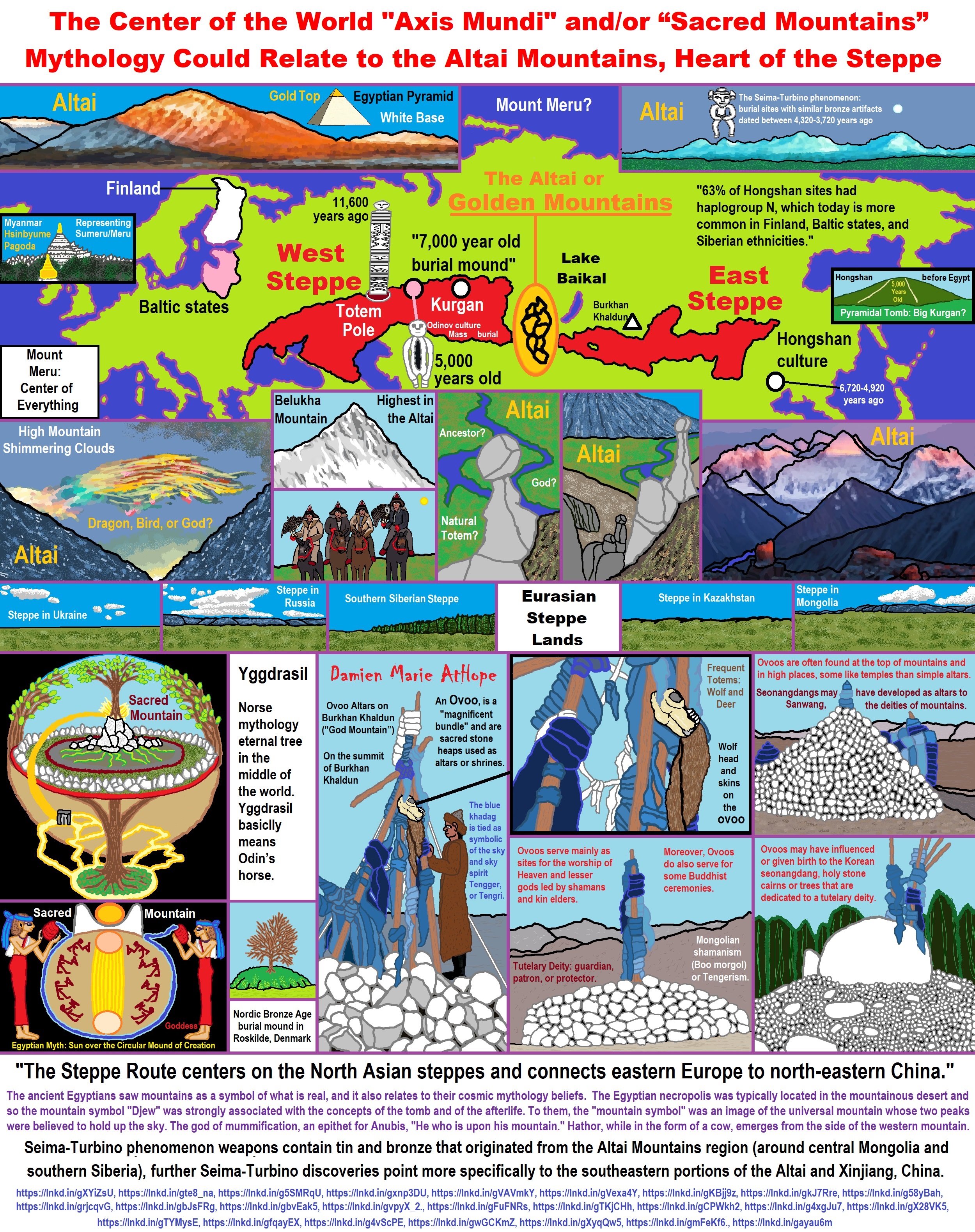
ref, ref, ref, ref, ref, ref, ref, ref, ref, ref, ref, ref, ref, ref, ref, ref, ref, ref, ref, ref, ref, ref, ref, ref, ref, ref, ref, ref, ref, ref, ref, ref, ref
Moon Rabbit?
“The Moon rabbit or Moon hare is a mythical figure in Far Eastern folklore who lives on the Moon, based on pareidolia interpretations that identify the dark markings on the near side of the Moon as a rabbit or hare. The folklore originated in China and then spread to other Asian cultures. In Aztec culture, there is also a tale for the rabbit being in the moon. In East Asian folklore, the rabbit is seen as pounding with a mortar and pestle, but the contents of the mortar differ among Chinese, Japanese, Korean, and Vietnamese folklore.” ref
“In Chinese folklore, the rabbit often is portrayed as a companion of the Moon goddess Chang’e, constantly pounding the elixir of life for her and some show the making of cakes or rice cakes; but in Japanese and Korean versions, the rabbit is pounding the ingredients for mochi or some other type of rice cakes; in the Vietnamese version, the moon rabbit is often appears with Hằng Nga and like the Chinese version, the Vietnamese moon rabbit also pound the elixir of immortality in the mortar. In some Chinese versions, the rabbit pounds medicine for the mortals and some include making of mooncakes. Unrelated Moon folklore from certain native cultures of the Americas also has rabbit themes and characters.” ref
“An early Chinese source called the Chu Ci, a Western Han anthology of Chinese poems from the Warring States period, notes that along with a toad, there is a hare on the Moon who constantly pounds herbs for the immortals. This notion is supported by later texts, including the Song-era Taiping Imperial Reader. As rabbits were not yet introduced to China during Western Han, the original image was not a rabbit but a hare.” ref
“Han Dynasty poets call the hare on the Moon the “Jade Hare” (玉兔) or the “Gold Hare” (金兔), and these phrases were used often, in place of the word for the Moon. A famous poet of Tang China, Li Bai, relates how “The rabbit in the moon pounds the medicine in vain” in his poem, “The Old Dust.” ref
“In the Buddhist Jataka tales, Tale 316 relates that a monkey, an otter, a jackal, and a rabbit resolved to practice charity on the day of the full moon (Uposatha), believing a demonstration of great virtue would earn a great reward. When an old man begged for food from them, the monkey gathered fruits from the trees, and the otter collected fish, while the jackal found a lizard and a pot of milk-curd. Knowing only how to gather grass, the rabbit instead offered its own body by throwing itself into a fire the man had prepared. However, the rabbit was not burnt and the old man revealed that he was Śakra. Touched by the rabbit’s virtue, he drew the likeness of the rabbit on the Moon for all to see. It is said the lunar image is still draped in the smoke that rose when the rabbit cast itself into the fire. The rabbit is believed to be a Bodhisattva.” ref
“A version of this story may be found in the Japanese anthology, Konjaku Monogatarishū, where the rabbit’s companions are a fox, instead of a jackal, and a monkey. The Moon rabbit legend is popular and part of local folklore throughout Asia. It may be found in diverse cultures in China, Japan, India, Korea, Sri Lanka, Cambodia, Thailand, Vietnam, and Myanmar.” ref
“This legend also gave rise to the Mid-Autumn Festivals of China, Tết Trung Thu of Vietnam, Tsukimi of Japan, and Chuseok of Korea, Sampeah Preah Khae in Cambodia, all of which celebrate the legend of the Moon rabbit. In Vietnamese mythology, the Jade Rabbit on the Moon is often accompanied by the Moon Lady and Cuội, who sits under a magical banyan. The trio has become the personifications of the holiday, when they descend to the mortal world and give out cellophane lanterns, mooncakes, and gifts to children.” ref
Rabbits in indigenous American Moon folklore
“Presumed to be arising likewise, through lunar pareidolia, legends of Moon rabbits also exist among some of the indigenous peoples of the Americas. These legends are not considered to have been influenced by Asian cultures. In Mayan art, glyphs, hieroglyphics, and inscriptions, a rabbit frequently is shown with their Moon Goddess and another deity related to the Moon.” ref
“According to an Aztec legend, the god Quetzalcoatl, then living on Earth as a human, started on a journey and, after walking for a long time, became hungry and tired. With no food or water around, he thought he would die. Then a rabbit grazing nearby offered herself as food to save his life. Quetzalcoatl, moved by the rabbit’s noble offering, elevated her to the Moon, then lowered her back to Earth and told her, “You may be just a rabbit, but everyone will remember you; there is your image in light, for all people and for all times.” ref
“Another Mesoamerican legend tells of the brave and noble sacrifice of Nanahuatzin during the creation of the fifth sun. Humble Nanahuatzin sacrificed himself in fire to become the new sun, but the wealthy god Tecciztecatl hesitated four times before he finally set himself alight to become the Moon. Due to Tecciztecatl’s cowardice, the deities felt that the Moon should not be so bright as the Sun, so one of the deities threw a rabbit at his face to diminish his light. Another version of the legend says that Tecciztecatl was in the form of a rabbit when he sacrificed himself to become the Moon, casting his shadow there.” ref
“Farther north in America in a region now identified as ranging across Canada and the United States, a Cree cultural legend tells a different story, about a young rabbit who wished to ride the Moon. Only the crane was willing to take him there. The trip stretched the crane’s legs as the heavy rabbit held them tightly, leaving them elongated as the legs of all cranes are now. When they reached the Moon, the rabbit touched the crane’s head with a bleeding paw, leaving the red mark those cranes wear to this day. According to the legend, on clear nights, Rabbit still may be seen riding the Moon.” ref
Scarab Egyptian symbol “Dung Beetle as Sun God”
“Scarab, Latin scarabaeus, in ancient Egyptian religion, an important symbol in the form of the dung beetle (Scarabaeus sacer), which lays its eggs in dung balls fashioned through the rolling. This beetle was associated with the divine manifestation of the early morning sun, Khepri, whose name was written with the scarab hieroglyph and who was believed to roll the disk of the morning sun over the eastern horizon at daybreak. Since the scarab hieroglyph, Kheper, refers variously to the ideas of existence, manifestation, development, growth, and effectiveness, the beetle itself was a favorite form used for amulets in all periods of Egyptian history.” ref
“Scientific American article about zoologist Emily Baird’s research on dung beetles. Egyptologists give these poo-pushing champions the more dignified name of “scarab,” after an ancient Greek word for beetle. Dr. Baird’s specialty is insect vision, flight, and navigation (see her profile at Lund University). She wrote her thesis on honeybees. I’m grateful that she decided to turn her research to the humble dung beetle, Kheper nigroaeneus. Her work may illuminate one of ancient Egypt’s more bizarre gods.” ref
“Why did the ancient Egyptians worship a large beetle that rolls a ball of dung, lays its eggs inside it, and then pushes the ball along the ground? Why did the Egyptians call this beetle kheper, with the metaphorical meaning “becoming, to come into being”? Why did they associate the lowly dung beetle with Re, their supreme being and sun god, and give their beetle-god avatar of Re the name Khepri?” ref
“Many Pharaohs incorporated kheper into their “throne name,” the official name they assumed at their coronation. King Tut’s treasures are decorated with elaborate cartouches of his throne-name Neb Kheperu Re, “The Lord of Becoming/Manifestation/Creations is Re.” Tourists to Egypt buy scarabs modeled on King Tut’s scarab-jewelry, not realizing that they’re paying homage to dung beetles. Even Barbie has accessorized with them.” ref
“Egypt scholars, puzzled over this peculiar god, have offered explanations. Young beetles emerge from their dung-cocoon like the sun rising from the horizon. Therefore, they are a symbol of creation and manifestation. As Khepri, they assure the sun’s rebirth each day. Dr. Baird’s research may shed light— literally— on one more reason why the ancient Egyptians associated the dung beetle with the sun.” ref
“The ancient Greek naturalist Plutarch, who wrote extensively about Egyptian religion in his own day, has this to say about scarabs:
“One accepts (with the ancient Egyptians), that these varieties are only male beetles, that they put down their seed substance (semen) which forms a ball and the beetle rolls it forward with its widely spaced hind legs so that the beetle imitates the path of the sun as it went down in the west and rose in the east in the mornings.” — Source: Ancient Egypt: The Sacred Scarab” ref
Sacred cows and Sacred bulls?
“Aurochs are depicted in many Paleolithic European cave paintings such as those found at Lascaux and Livernon in France. Their life force may have been thought to have magical qualities, for early carvings of the aurochs have also been found. The impressive and dangerous aurochs survived into the Iron Age in Anatolia and the Near East and were worshipped throughout that area as sacred animals; the earliest remnants of bull worship can be found at neolithic Çatalhöyük.” ref
“We cannot recreate a specific context for the bull skulls with horns (bucrania) preserved in an 8th millennium BCE sanctuary at Çatalhöyük in Central Anatolia. The sacred bull of the Hattians, whose elaborate standards were found at Alaca Höyük alongside those of the sacred stag, survived in Hurrian and Hittite mythology as Seri and Hurri (“Day” and “Night”), the bulls who carried the weather god Teshub on their backs or in his chariot and grazed on the ruins of cities.” ref
“Cattle in religion and mythology, due to the multiple benefits from cattle, there are varying beliefs about cattle in societies and religions. In some regions, especially most states of India, the slaughter of cattle is prohibited and their meat may be taboo. Cattle are considered sacred in world religions such as Hinduism, Jainism, Buddhism, and others. Cattle played other major roles in many religions, including those of ancient Egypt, ancient Greece, ancient Israel, ancient Rome, and ancient Germany.” ref
Sacred cow (idiom)
“A sacred cow is an idiom, a figurative reference to cattle in religion and mythology. The idiom is based on the popular understanding of the elevated place of cows in Hinduism and appears to have emerged in America in the late 19th century. The reverence for cows in the traditionally agrarian Vedic Hindu society stems from the reluctance to harm an animal whose milk humans consume after being weaned off the mother’s milk.” ref
“In Jewish tradition, there is a similar moral stigma against cooking veal (calf meat) in cow’s milk. A literal sacred cow or sacred bull is an actual cow or bull that is treated with sincere respect. One writer has suggested that there is an element of paradox in the concept of respect for a sacred cow, as illustrated in a comment about the novelist V. S. Naipaul: “V. S. Naipaul … has the ability to distinguish the death of an ordinary ox, which, being of concern to no one, maybe put quickly out of its agony, from that of a sacred cow, which must be solicitously guarded so that it can die its agonizing death without any interference.” ref
“According to the Bible, the Israelites worshipped a cult image of a golden calf when the prophet Moses went up to Mount Sinai. Moses considered this a great sin against God. As a result of their abstention from the act, the Levite tribe attained a priestly role. A cult of golden calves appears later during the rule of Jeroboam.” ref
“According to the Hebrew Bible, an unblemished red cow was an important part of ancient Jewish rituals. The cow was sacrificed and burned in a precise ritual, and the ashes were added to water used in the ritual purification of a person who had come in to contact with a human corpse. The ritual is described in the Book of Numbers in Chapter 19, verses 1–14.” ref
“Observant Jews study this passage every year in early summer as part of the weekly Torah portion called Chukat. A contemporary Jewish organization called the Temple Institute is trying to revive this ancient religious observance. Traditional Judaism considers beef kosher and permissible as food, as long as the cow is slaughtered in a religious ritual called shechita, and the meat is not served in a meal that includes any dairy foods.” ref
“The term geush urva means “the spirit of the cow” and is interpreted as the soul of the earth. In the Ahunavaiti Gatha, Zarathustra (or Zoroaster) accuses some of his co-religionists of abusing the cow. Ahura Mazda tells Zarathustra to protect the cow. After fleeing to India, many Zoroastrians stopped eating beef out of respect for Hindus living there. The lands of Zarathustra and the Vedic priests were those of cattle breeders. The 9th chapter of the Vendidad of the Avesta expounds the purificatory power of gōmēz – cow urine. It is declared to be a panacea for all bodily and moral evils, understood as which it features prominently in the 9-night purification ritual Barashnûm.” ref
“In ancient Egyptian religion, bulls symbolized strength and male sexuality and were linked with aggressive deities such as Montu and virile deities such as Min. Some Egyptian cities kept sacred bulls that were said to be incarnations of divine powers, including the Mnevis bull, Buchis bull, and the Apis bull, which was regarded as a manifestation of the god Ptah and was the most important sacred animal in Egypt. Cows were connected with fertility and motherhood.” ref
“One of several ancient Egyptian creation myths said that a cow goddess, Mehet-Weret, who represented the primeval waters that existed before creation, gave birth to the sun at the beginning of time. The sky was sometimes envisioned as a goddess in the form of a cow, and several goddesses, including Hathor, Nut, and Neith, were equated with this celestial cow. The Egyptians did not regard cattle as uniformly positive. Wild bulls, regarded as symbols of the forces of chaos, could be hunted and ritually killed.” ref
Sacred bull
“There are varying beliefs about cattle in societies and religions with cows, bulls, and calves being worshiped at various stages of history. As such, numerous peoples throughout the world have at one point in time honored bulls as sacred. In the Sumerian religion, Marduk is the “bull of Utu“. In Hinduism, Shiva‘s steed is Nandi, the Bull. The sacred bull survives in the constellation Taurus. The bull, whether lunar as in Mesopotamia or solar as in India, is the subject of various other cultural and religious incarnations as well as modern mentions in New Age cultures.” ref
“The Sumerian guardian deity called lamassu was depicted as hybrids with bodies of either winged bulls or lions and heads of human males. The motif of a winged animal with a human head is common to the Near East, first recorded in Ebla around 3000 BCE or 5,022 years ago. The first distinct lamassu motif appeared in Assyria during the reign of Tiglath-Pileser II as a symbol of power. “The human-headed winged bulls protective genies called shedu or lamassu, … were placed as guardians at certain gates or doorways of the city and the palace. Symbols combining man, bull, and bird, they offered protection against enemies.” ref
“The bull was also associated with the storm and rain god Adad, Hadad, or Iškur. The bull was his symbolic animal. He appeared bearded, often holding a club and thunderbolt while wearing a bull-horned headdress. Hadad was equated with the Greek god Zeus; the Roman god Jupiter, as Jupiter Dolichenus; the Indo-European Nasite Hittite storm-god Teshub; the Egyptian god Amun. When Enki distributed the destinies, he made Iškur inspector of the cosmos. In one litany, Iškur is proclaimed again and again as “great radiant bull, your name is heaven” and also called son of Anu, lord of Karkara; twin-brother of Enki, lord of abundance, lord who rides the storm, lion of heaven. The Sumerian Epic of Gilgamesh depicts the killing by Gilgamesh and Enkidu of the Bull of Heaven as an act of defiance of the gods.” ref
“In Egypt, the bull was worshiped as Apis, the embodiment of Ptah and later of Osiris. A long series of ritually perfect bulls were identified by the god’s priests, housed in the temple for their lifetime, then embalmed and encased in a giant sarcophagus. A long sequence of monolithic stone sarcophagi was housed in the Serapeum, and was rediscovered by Auguste Mariette at Saqqara in 1851. The bull was also worshipped as Mnevis, the embodiment of Atum–Ra, in Heliopolis.” ref
“Ka, in Egyptian, is both a religious concept of life-force/power and the word for bull. Andrew Gordon, an Egyptologist, and Calvin Schwabe, a veterinarian, argue that the origin of the ankh is related to two other signs of uncertain origin that often appear alongside it: the was-sceptre, representing “power” or “dominion”, and the djed pillar, representing “stability”. According to this hypothesis, the form of each sign is drawn from a part of the anatomy of a bull, like some other hieroglyphic signs that are known to be based on body parts of animals.” ref
“In Egyptian belief semen was connected with life and, to some extent, with “power” or “dominion”, and some texts indicate the Egyptians believed semen originated in the bones. Therefore, Calvin and Schwabe suggest the signs are based on parts of the bull’s anatomy through which semen was thought to pass: the ankh is a thoracic vertebra, the djed is the sacrum, and lumbar vertebrae, and the was is the dried penis of the bull.” ref
“Bulls were a central theme in the Minoan civilization, with bull heads and bull horns used as symbols in the Knossos palace. Minoan frescos and ceramics depict bull-leaping, in which participants of both sexes vaulted over bulls by grasping their horns. And in Cyprus, bull masks made from real skulls were worn in rites. Bull-masked terracotta figurines and Neolithic bull-horned stone altars have been found in Cyprus.” ref
“The Iranian language texts and traditions of Zoroastrianism have several different mythological bovine creatures. One of these is Gavaevodata, which is the Avestan name of a hermaphroditic “uniquely created (–aevo.data) cow (gav-)”, one of Ahura Mazda‘s six primordial material creations that becomes the mythological progenitor of all beneficent animal life. Another Zoroastrian mythological bovine is Hadhayans, a gigantic bull so large that it could straddle the mountains and seas that divide the seven regions of the earth, and on whose back men could travel from one region to another.” ref
“In medieval times, Hadhayans also came to be known as Srīsōk (Avestan *Thrisaok, “three burning places”), which derives from a legend in which three “Great Fires” were collected on the creature’s back. Yet another mythological bovine is that of the unnamed creature in the Cow’s Lament, an allegorical hymn attributed to Zoroaster himself, in which the soul of a bovine (geush urvan) despairs over her lack of protection from an adequate herdsman. In the allegory, the cow represents humanity’s lack of moral guidance, but in later Zoroastrianism, Geush Urvan became a yazata representing cattle. The 14th day of the month is named after her and is under her protection.” ref
“Bulls also appear on seals from the Indus Valley Civilisation. Nandi appears in Hindu mythology as the primary vehicle and the principal gana (follower) of Shiva. In Rig Veda, Indra was often praised as a Bull (Vrsabha – ‘vrsa’ means he and bha means being or uksan- a bull aged five to nine years, which is still growing or just reached its full growth), with bull being an icon of power and virile strength not just in Aryan literature but in many IE cultures. Vrsha means “to shower or to spray”, in this context Indra showers strength and virility.” ref
“The Canaanite (and later Carthaginian) statue to which sacrifices were burnt, either as a deity or a type of sacrifice – Moloch – was referred to as a horned man, and likened to Cronus by the Romans. There may be a connection between sacrifice to the Cretan horned man Minotaur and Cronus himself. Both Baʿal and El were associated with the bull in Ugaritic texts, as it symbolized both strength and fertility. Bull figurines are common finds on archaeological sites across the Levant; two examples are the 16th century BCE (Middle Bronze Age) bull calf from Ashkelon, and the 12th century BCE (Iron Age I) bull found at the so-called Bull Site in Samaria on the West Bank.” ref
“Cronus’s son Zeus was raised on Crete in hiding from his father. Having consumed all of his own children (the gods) Cronus is fed a boulder by Zeus (to represent Zeus’s own body so he appears consumed) and an emetic. His vomiting of the boulder and subsequently the other gods (his children) in the Titanomachy bears comparison with the volcanic eruption that appears to be described in Zeus’s battle with Typhon in the Theogony. Consequently, Cronus may be associated with the eruption of Thera through the myth of his defeat by Zeus.” ref
“The later association between Canaanite religions in which child sacrifice took place (Ezekiel 20:25-26) and the association of child sacrifice with a horned god (as potentially on Crete and certainly in Carthage) may also be connected with the Greek myth of sending young men and women to the Minotaur, a bull-headed man. Exodus 32:4 reads “He took this from their hand, and fashioned it with a graving tool and made it into a molten calf; and they said, ‘This is your god, O Israel, who brought you up from the land of Egypt’.” ref
“Nehemiah 9:18 reads “even when they made an idol shaped like a calf and said, ‘This is your god who brought you out of Egypt!’ They committed terrible blasphemies.” Calf-idols are referred to later in the Tanakh, such as in the Book of Hosea, which would seem accurate as they were a fixture of near-eastern cultures. Solomon‘s “Molten Sea” basin stood on twelve brazen bulls. Young bulls were set as frontier markers at Dan and Bethel, the frontiers of the Kingdom of Israel.” ref
“Much later, in Abrahamic religions, the bull motif became a bull demon or the “horned devil” in contrast and conflict to earlier traditions. The bull is familiar in Judeo-Christian cultures from the Biblical episode wherein an idol of the golden calf (Hebrew: עֵגֶּל הַזָהָב) is made by Aaron and worshipped by the Hebrews in the wilderness of the Sinai Peninsula (Book of Exodus). The text of the Hebrew Bible can be understood to refer to the idol as representing a separate god, or as representing Yahweh himself, perhaps through an association or religious syncretism with Egyptian or Levantine bull gods, rather than a new deity in itself.” ref
“Among the Twelve Olympians, Hera‘s epithet Bo-opis is usually translated “ox-eyed” Hera, but the term could just as well apply if the goddess had the head of a cow, and thus the epithet reveals the presence of an earlier, though not necessarily more primitive, iconic view. (Heinrich Schlieman, 1976) Classical Greeks never otherwise referred to Hera simply as the cow, though her priestess Io was so literally a heifer that she was stung by a gadfly, and it was in the form of a heifer that Zeus coupled with her. Zeus took over the earlier roles, and, in the form of a bull that came forth from the sea, abducted the high-born Phoenician Europa and brought her, significantly, to Crete.” ref
“Dionysus was another god of resurrection who was strongly linked to the bull. In a worship hymn from Olympia, at a festival for Hera, Dionysus is also invited to come as a bull, “with bull-foot raging.” “Quite frequently he is portrayed with bull horns, and in Kyzikos he has a tauromorphic image,” Walter Burkert relates, and refers also to an archaic myth in which Dionysus is slaughtered as a bull calf and impiously eaten by the Titans.” ref
“For the Greeks, the bull was strongly linked to the Cretan Bull: Theseus of Athens had to capture the ancient sacred bull of Marathon (the “Marathonian bull”) before he faced the Minotaur (Greek for “Bull of Minos”), who the Greeks imagined as a man with the head of a bull at the center of the labyrinth. Minotaur was fabled to be born of the Queen and a bull, bringing the king to build the labyrinth to hide his family’s shame.” ref
“Living in solitude made the boy wild and ferocious, unable to be tamed or beaten. Yet Walter Burkert‘s constant warning is, “It is hazardous to project Greek tradition directly into the Bronze Age.” Only one Minoan image of a bull-headed man has been found, a tiny Minoan sealstone currently held in the Archaeological Museum of Chania. In the Classical period of Greece, the bull and other animals identified with deities were separated as their agalma, a kind of heraldic show-piece that concretely signified their numinous presence.” ref
“The religious practices of the Roman Empire of the 2nd to 4th centuries included the taurobolium, in which a bull was sacrificed for the well-being of the people and the state. Around the mid-2nd century, the practice became identified with the worship of Magna Mater, but was not previously associated only with that cult (cultus). Public taurobolia, enlisting the benevolence of Magna Mater on behalf of the emperor, became common in Italy and Gaul, Hispania, and Africa. The last public taurobolium for which there is an inscription was carried out at Mactar in Numidia at the close of the 3rd century. It was performed in honor of the emperors Diocletian and Maximian.” ref
“Another Roman mystery cult in which a sacrificial bull played a role was that of the 1st–4th century Mithraic Mysteries. In the so-called “tauroctony” artwork of that cult (cultus), and which appears in all its temples, the god Mithras is seen to slay a sacrificial bull. Although there has been a great deal of speculation on the subject, the myth (i.e. the “mystery”, the understanding of which was the basis of the cult) that the scene was intended to represent remains unknown. Because the scene is accompanied by a great number of astrological allusions, the bull is generally assumed to represent the constellation of Taurus. The basic elements of the tauroctony scene were originally associated with Nike, the Greek goddess of victory.” ref
“Macrobius lists the bull as an animal sacred to the god Neto/Neito, possibly being sacrifices to the deity. A prominent zoomorphic deity type is the divine bull. Tarvos Trigaranus (“bull with three cranes”) is pictured on reliefs from the cathedral at Trier, Germany, and at Notre-Dame de Paris. In Irish mythology, the Donn Cuailnge plays a central role in the epic Táin Bó Cúailnge (“The Cattle Raid of Cooley”), which features the hero Cú Chulainn, which were collected in the seventh century Lebor na hUidre (“Book of the Dun Cow”).” ref
“Pliny the Elder, writing in the first century, describes a religious ceremony in Gaul in which white-clad druids climbed a sacred oak, cut down the mistletoe growing on it, sacrificed two white bulls, and used the mistletoe to cure infertility:
The druids—that is what they call their magicians—hold nothing more sacred than the mistletoe and a tree on which it is growing, provided it is Valonia oak. … Mistletoe is rare and when found it is gathered with great ceremony, and particularly on the sixth day of the moon….Hailing the moon in a native word that means ‘healing all things,’ they prepare a ritual sacrifice and banquet beneath a tree and bring up two white bulls, whose horns are bound for the first time on this occasion. A priest arrayed in white vestments climbs the tree and, with a golden sickle, cuts down the mistletoe, which is caught in a white cloak. Then finally they kill the victims, praying to a god to render his gift propitious to those on whom he has bestowed it. They believe that mistletoe given in drink will impart fertility to any animal that is barren and that it is an antidote to all poisons.” ref
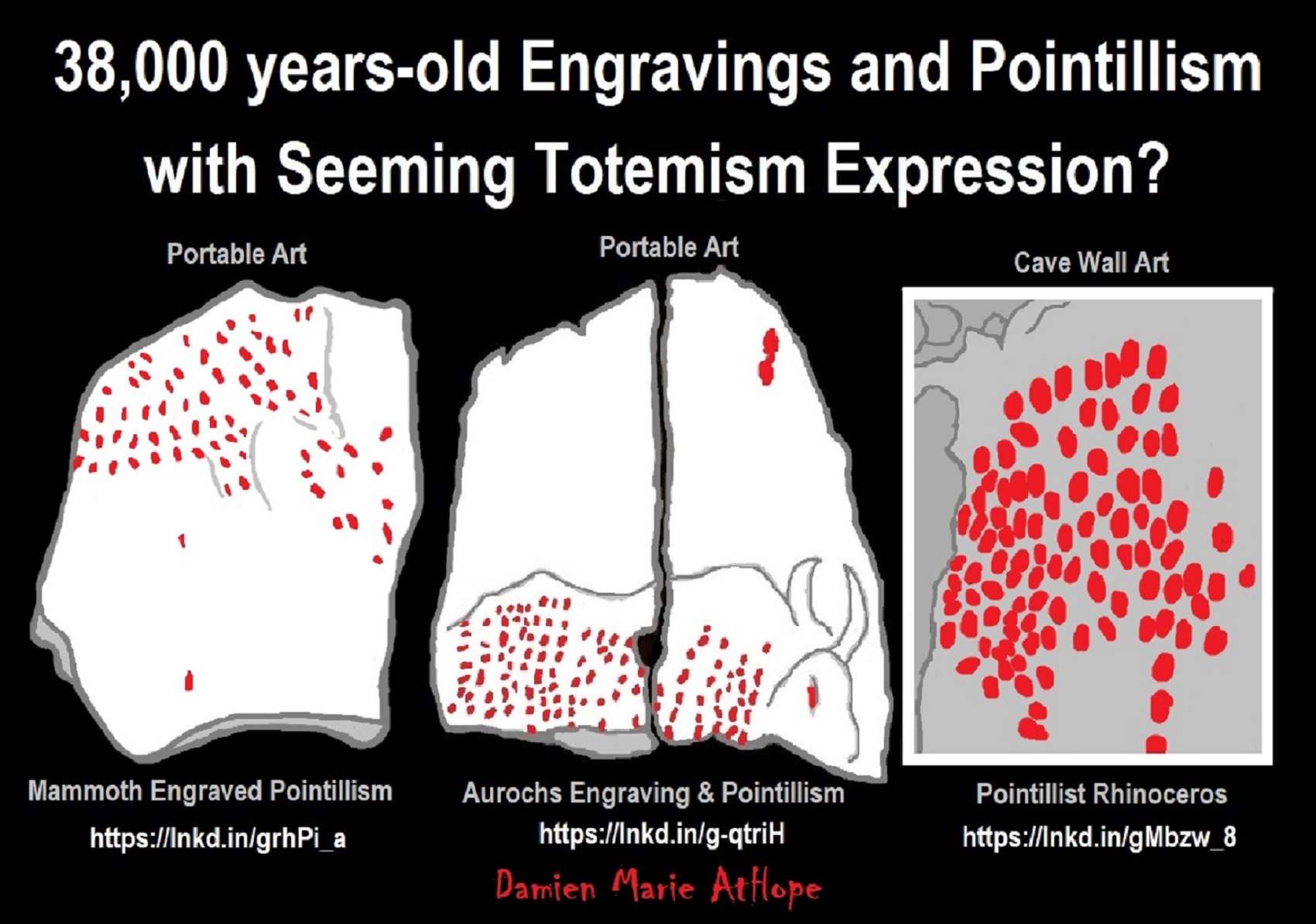
Ritual Pointillism, to me, references stars/ancestor worship in Aurignacian culture totemism, which I think relates to the Neanderthal Châtelperronian culture totemism. There was 16 engraved and otherwise modified limestone blocks, created 38,000 years ago, pointillist techniques: small dots to create the illusion of a larger image. ref
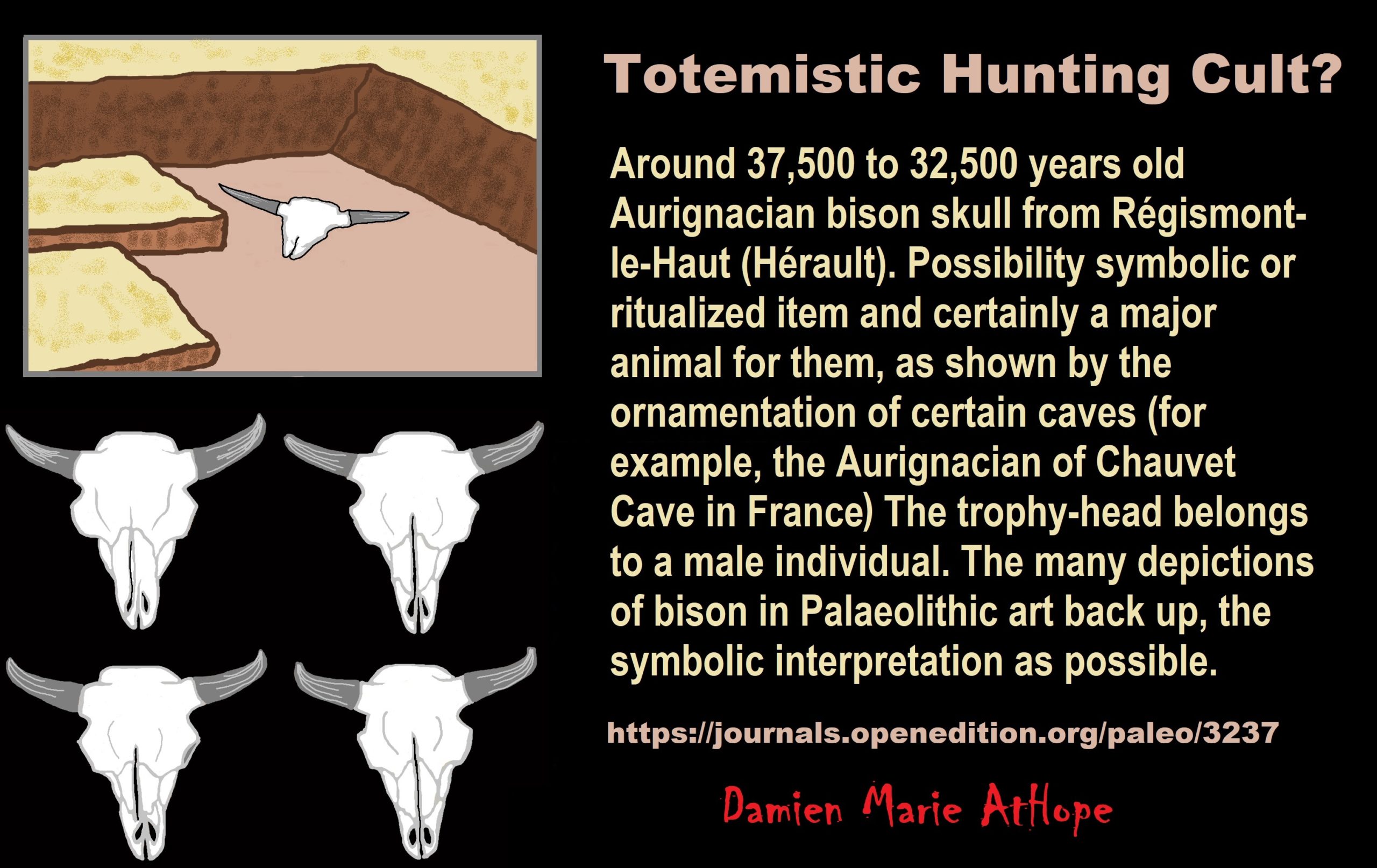
Around 37,500 to 32,500 years old Aurignacian bison skull from Régismont-le-Haut (Hérault). Possibility symbolic or ritualized item and certainly a major animal for them, as shown by the ornamentation of certain caves (for example, the Aurignacian of Chauvet Cave in France. The trophy-head belongs to a male individual. The many depictions of bison in Palaeolithic art back up, the symbolic interpretation as possible. ref
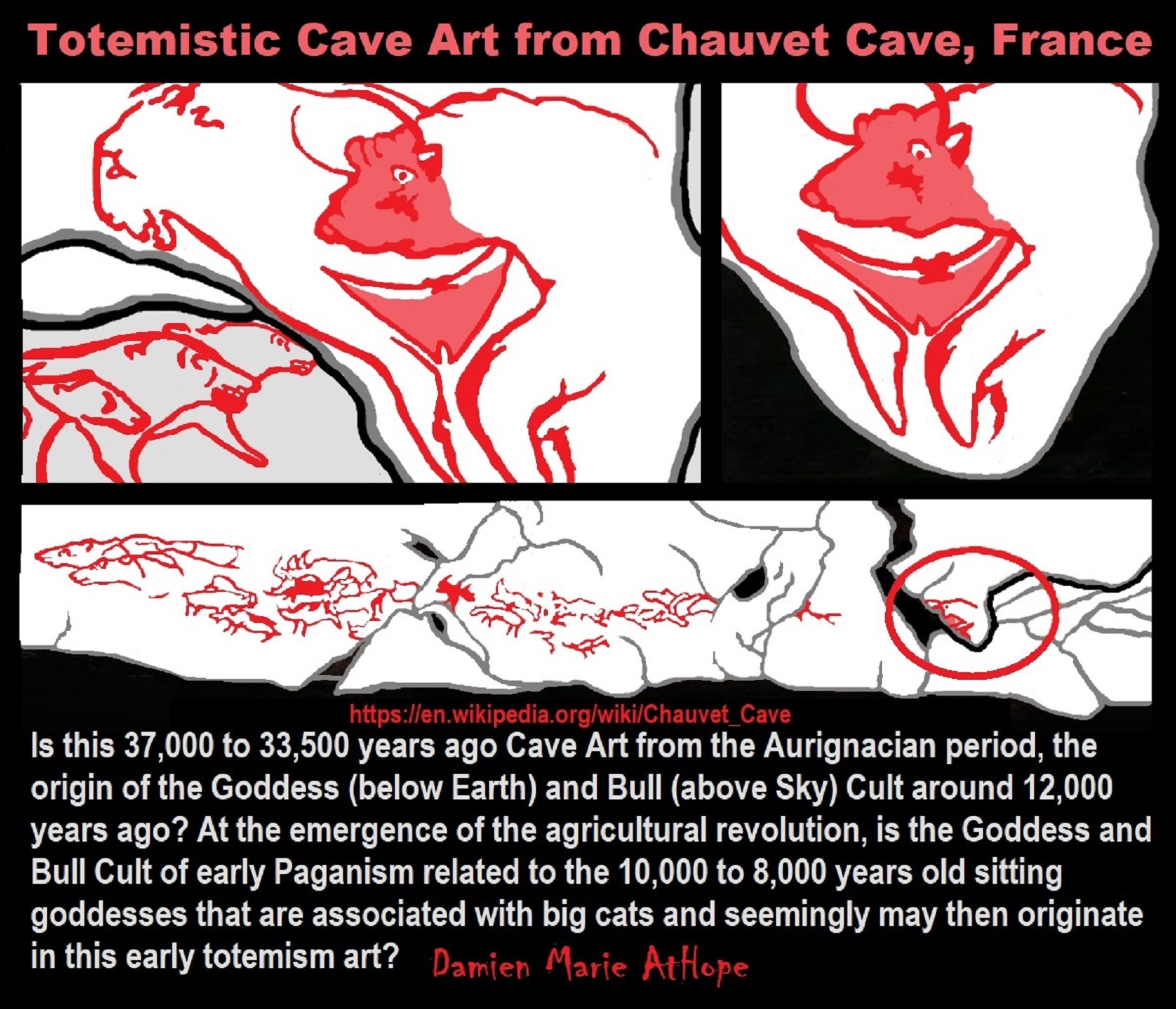
Chauvet cave
“The Chauvet-Pont-d’Arc Cave in the Ardèche department of southeastern France is a cave that contains some of the best-preserved figurative cave paintings in the world, as well as other evidence of Upper Paleolithic life. It is located near the commune of Vallon-Pont-d’Arc on a limestone cliff above the former bed of the river Ardèche, in the Gorges de l’Ardèche. The dates have been a matter of dispute but a study published in 2012 supports placing the art in the Aurignacian period, approximately 32,000–30,000 years ago. A study published in 2016 using additional 88 radiocarbon dates showed two periods of habitation, one from 37,000 to 33,500 years ago and the second from 31,000 to 28,000 years ago, with most of the black drawings dating to the earlier period.” ref
“Hundreds of animal paintings have been cataloged, depicting at least 13 different species, including some rarely or never found in other ice age paintings. Rather than depicting only the familiar herbivores that predominate in Paleolithic cave art, i.e. horses, aurochs, mammoths, etc., the walls of the Chauvet Cave feature many predatory animals, e.g., cave lions, leopards, bears, and cave hyenas. There are also paintings of rhinoceroses. Typical of most cave art, there are no paintings of complete human figures, although there is one partial “Venus” figure composed of what appears to be a vulva attached to an incomplete pair of legs. Above the Venus, and in contact with it, is a bison head, which has led some to describe the composite drawing as a Minotaur. There are a few panels of red ochre hand prints and hand stencils made by blowing pigment over hands pressed against the cave surface. Abstract markings—lines and dots—are found throughout the cave. There are also two unidentifiable images that have a vaguely butterfly or avian shape to them. This combination of subjects has led some students of prehistoric art and cultures to believe that there was a ritual, shamanic, or magical aspect to these paintings.” ref
“One drawing, later overlaid with a sketch of a deer, is reminiscent of a volcano spewing lava, similar to the regional volcanoes that were active at the time. If confirmed, this would represent the earliest known drawing of a volcanic eruption. The artists who produced these paintings used techniques rarely found in other cave art. Many of the paintings appear to have been made only after the walls were scraped clear of debris and concretions, leaving a smoother and noticeably lighter area upon which the artists worked. Similarly, a three-dimensional quality and the suggestion of movement are achieved by incising or etching around the outlines of certain figures. The art is also exceptional for its time for including “scenes”, e.g., animals interacting with each other; a pair of woolly rhinoceroses, for example, are seen butting horns in an apparent contest for territory or mating rights.” ref
Aurignacian burials (around 37,000-30,000 years ago) belong to the early phase of this period in Europe. Examples have been excavated at Cave of Cavillon, Liguria – a burial wearing a cap of netted whelk shells with a border of deer’s teeth, red ochre around the face, and a bone awl at the side. ref
Aurignacian in the Zagros region dates back to about 35,500 years ago at Yafteh Cave, Lorestan, Iran. ref
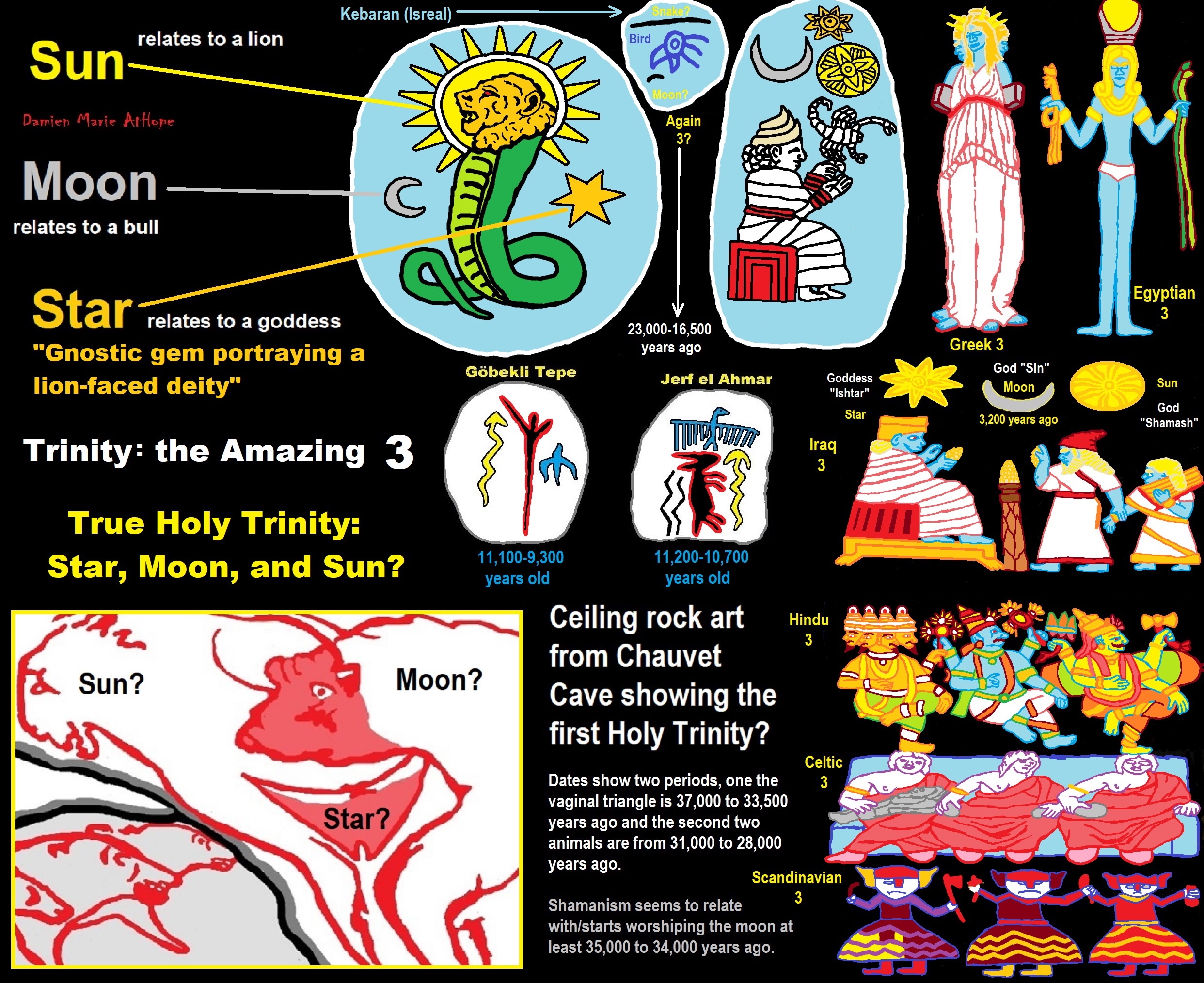
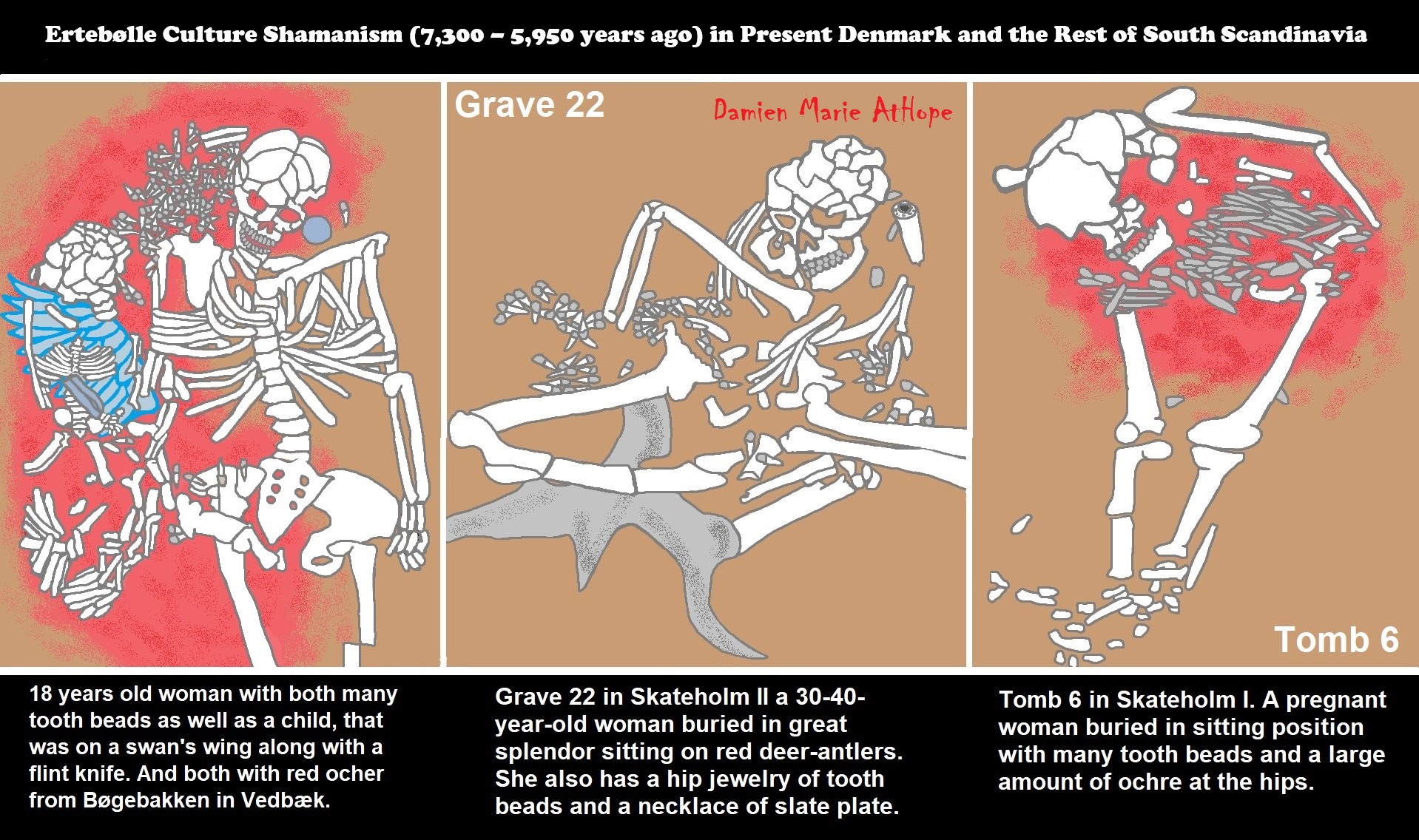
“Members of a religious cult in Thailand routinely ate the feces and dead skin of their leader, whom they considered to be a holy man with healing powers. The feces of the rock ptarmigan is used in Urumiit, which is a delicacy in some Inuit cuisine. Several beverages are made using the feces of animals, including but not limited to Kopi luwak, panda tea, insect tea, and Black Ivory Coffee. Casu martzu is a cheese that uses the digestive processes of live maggots to help ferment and break down the cheese’s fats. Ayurveda and Siddha medicine use various animal excreta in various forms. The dung and urine of the Zebu is especially important in the list.” ref

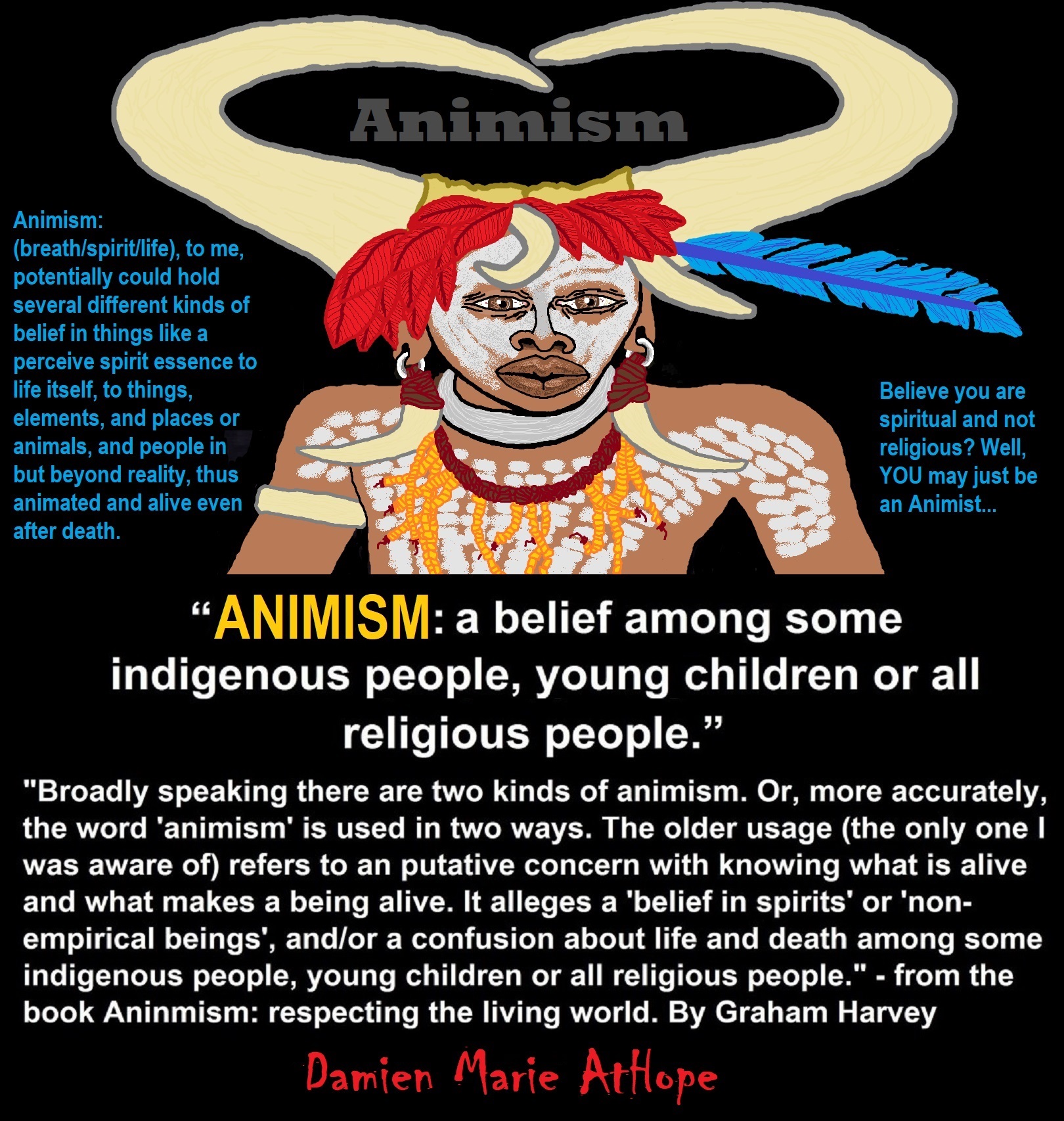
Animism: Respecting the Living World by Graham Harvey
“How have human cultures engaged with and thought about animals, plants, rocks, clouds, and other elements in their natural surroundings? Do animals and other natural objects have a spirit or soul? What is their relationship to humans? In this new study, Graham Harvey explores current and past animistic beliefs and practices of Native Americans, Maori, Aboriginal Australians, and eco-pagans. He considers the varieties of animism found in these cultures as well as their shared desire to live respectfully within larger natural communities. Drawing on his extensive casework, Harvey also considers the linguistic, performative, ecological, and activist implications of these different animisms.” ref
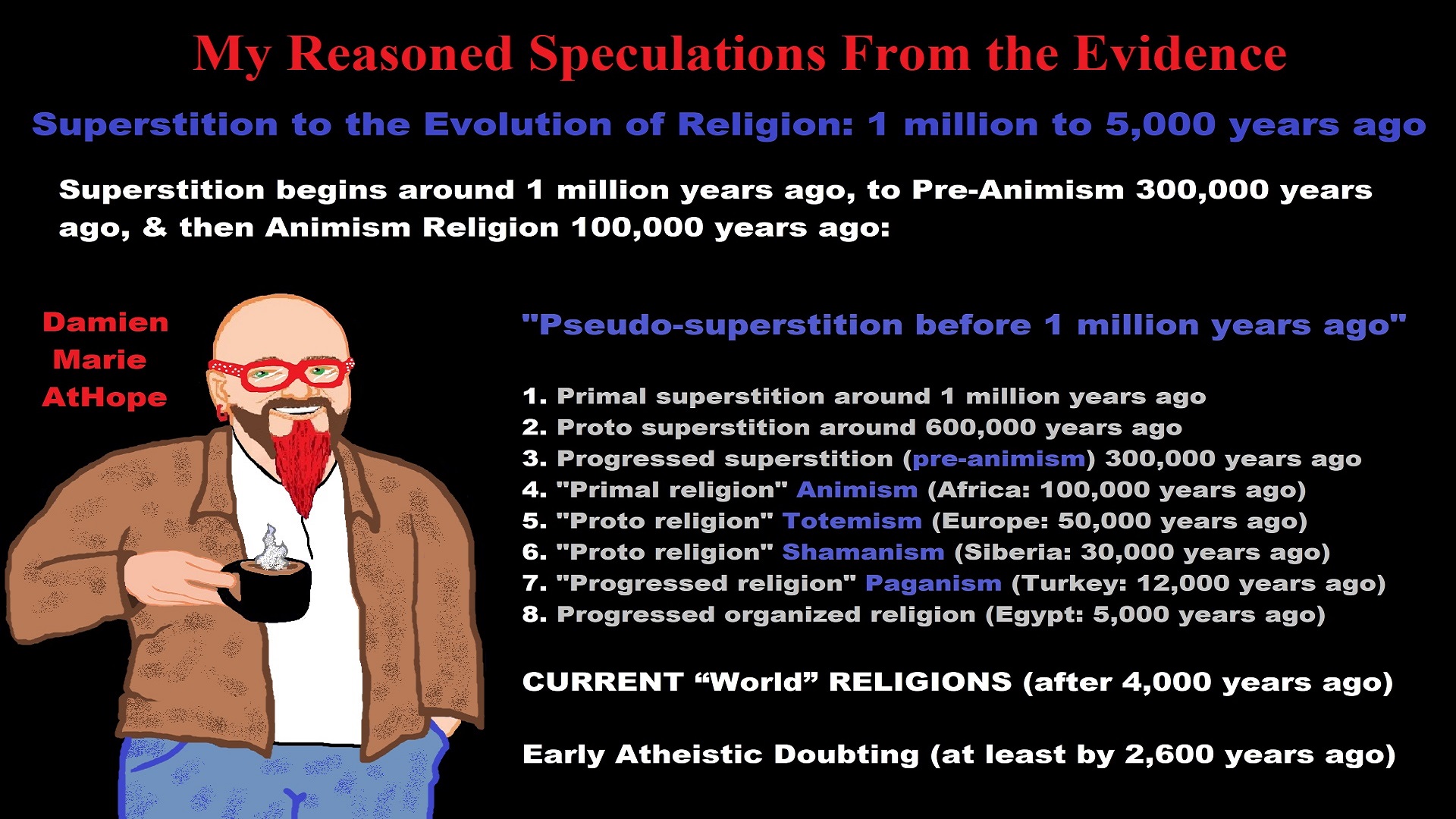
My thoughts on Religion Evolution with external links for more info:
- (Pre-Animism Africa mainly, but also Europe, and Asia at least 300,000 years ago), (Pre-Animism – Oxford Dictionaries)
- (Animism Africa around 100,000 years ago), (Animism – Britannica.com)
- (Totemism Europe around 50,000 years ago), (Totemism – Anthropology)
- (Shamanism Siberia around 30,000 years ago), (Shamanism – Britannica.com)
- (Paganism Turkey around 12,000 years ago), (Paganism – BBC Religion)
- (Progressed Organized Religion “Institutional Religion” Egypt around 5,000 years ago), (Ancient Egyptian Religion – Britannica.com)
- (CURRENT “World” RELIGIONS after 4,000 years ago) (Origin of Major Religions – Sacred Texts)
- (Early Atheistic Doubting at least by 2,600 years ago) (History of Atheism – Wikipedia)
“Religion is an Evolved Product” and Yes, Religion is Like Fear Given Wings…
Atheists talk about gods and religions for the same reason doctors talk about cancer, they are looking for a cure, or a firefighter talks about fires because they burn people and they care to stop them. We atheists too often feel a need to help the victims of mental slavery, held in the bondage that is the false beliefs of gods and the conspiracy theories of reality found in religions.
Understanding Religion Evolution:
- Pre-Animism (at least 300,000 years ago)
- Animism (Africa: 100,000 years ago)
- Totemism (Europe: 50,000 years ago)
- Shamanism (Siberia: 30,000 years ago)
- Paganism (Turkey: 12,000 years ago)
- Progressed organized religion (Egypt: 5,000 years ago), (Egypt, the First Dynasty 5,150 years ago)
- CURRENT “World” RELIGIONS (after 4,000 years ago)
- Early Atheistic Doubting (at least by 2,600 years ago)
“An Archaeological/Anthropological Understanding of Religion Evolution”
It seems ancient peoples had to survived amazing threats in a “dangerous universe (by superstition perceived as good and evil),” and human “immorality or imperfection of the soul” which was thought to affect the still living, leading to ancestor worship. This ancestor worship presumably led to the belief in supernatural beings, and then some of these were turned into the belief in gods. This feeble myth called gods were just a human conceived “made from nothing into something over and over, changing, again and again, taking on more as they evolve, all the while they are thought to be special,” but it is just supernatural animistic spirit-belief perceived as sacred.
Quick Evolution of Religion?
Pre-Animism (at least 300,000 years ago) pre-religion is a beginning that evolves into later Animism. So, Religion as we think of it, to me, all starts in a general way with Animism (Africa: 100,000 years ago) (theoretical belief in supernatural powers/spirits), then this is physically expressed in or with Totemism (Europe: 50,000 years ago) (theoretical belief in mythical relationship with powers/spirits through a totem item), which then enlists a full-time specific person to do this worship and believed interacting Shamanism (Siberia/Russia: 30,000 years ago) (theoretical belief in access and influence with spirits through ritual), and then there is the further employment of myths and gods added to all the above giving you Paganism (Turkey: 12,000 years ago) (often a lot more nature-based than most current top world religions, thus hinting to their close link to more ancient religious thinking it stems from). My hypothesis is expressed with an explanation of the building of a theatrical house (modern religions development). Progressed organized religion (Egypt: 5,000 years ago) with CURRENT “World” RELIGIONS (after 4,000 years ago).
Historically, in large city-state societies (such as Egypt or Iraq) starting around 5,000 years ago culminated to make religion something kind of new, a sociocultural-governmental-religious monarchy, where all or at least many of the people of such large city-state societies seem familiar with and committed to the existence of “religion” as the integrated life identity package of control dynamics with a fixed closed magical doctrine, but this juggernaut integrated religion identity package of Dogmatic-Propaganda certainly did not exist or if developed to an extent it was highly limited in most smaller prehistoric societies as they seem to lack most of the strong control dynamics with a fixed closed magical doctrine (magical beliefs could be at times be added or removed). Many people just want to see developed religious dynamics everywhere even if it is not. Instead, all that is found is largely fragments until the domestication of religion.
Religions, as we think of them today, are a new fad, even if they go back to around 6,000 years in the timeline of human existence, this amounts to almost nothing when seen in the long slow evolution of religion at least around 70,000 years ago with one of the oldest ritual worship. Stone Snake of South Africa: “first human worship” 70,000 years ago. This message of how religion and gods among them are clearly a man-made thing that was developed slowly as it was invented and then implemented peace by peace discrediting them all. Which seems to be a simple point some are just not grasping how devastating to any claims of truth when we can see the lie clearly in the archeological sites.
I wish people fought as hard for the actual values as they fight for the group/clan names political or otherwise they think support values. Every amount spent on war is theft to children in need of food or the homeless kept from shelter.
Here are several of my blog posts on history:
- To Find Truth You Must First Look
- (Magdalenian/Iberomaurusian) Connections to the First Paganists of the early Neolithic Near East Dating from around 17,000 to 12,000 Years Ago
- Natufians: an Ancient People at the Origins of Agriculture and Sedentary Life
- Possible Clan Leader/Special “MALE” Ancestor Totem Poles At Least 13,500 years ago?
- Jewish People with DNA at least 13,200 years old, Judaism, and the Origins of Some of its Ideas
- Baltic Reindeer Hunters: Swiderian, Lyngby, Ahrensburgian, and Krasnosillya cultures 12,020 to 11,020 years ago are evidence of powerful migratory waves during the last 13,000 years and a genetic link to Saami and the Finno-Ugric peoples.
- The Rise of Inequality: patriarchy and state hierarchy inequality
- Fertile Crescent 12,500 – 9,500 Years Ago: fertility and death cult belief system?
- 12,400 – 11,700 Years Ago – Kortik Tepe (Turkey) Pre/early-Agriculture Cultic Ritualism
- Ritualistic Bird Symbolism at Gobekli Tepe and its “Ancestor Cult”
- Male-Homosexual (female-like) / Trans-woman (female) Seated Figurine from Gobekli Tepe
- Could a 12,000-year-old Bull Geoglyph at Göbekli Tepe relate to older Bull and Female Art 25,000 years ago and Later Goddess and the Bull cults like Catal Huyuk?
- Sedentism and the Creation of goddesses around 12,000 years ago as well as male gods after 7,000 years ago.
- Alcohol, where Agriculture and Religion Become one? Such as Gobekli Tepe’s Ritualistic use of Grain as Food and Ritual Drink
- Neolithic Ritual Sites with T-Pillars and other Cultic Pillars
- Paganism: Goddesses around 12,000 years ago then Male Gods after 7,000 years ago
- First Patriarchy: Split of Women’s Status around 12,000 years ago & First Hierarchy: fall of Women’s Status around 5,000 years ago.
- Natufians: an Ancient People at the Origins of Agriculture and Sedentary Life
- J DNA and the Spread of Agricultural Religion (paganism)
- Paganism: an approximately 12,000-year-old belief system
- Paganism 12,000 years old: related to “Anarchism and Socialism” (Pre-Capitalism)
- Shaman burial in Israel 12,000 years ago and the Shamanism Phenomena
- Need to Mythicized: gods and goddesses
- 12,000 – 7,000 Years Ago – Paleo-Indian Culture (The Americas)
- 12,000 – 2,000 Years Ago – Indigenous-Scandinavians (Nordic)
- Norse did not wear helmets with horns?
- Pre-Pottery Neolithic Skull Cult around 11,500 to 8,400 Years Ago?
- 10,400 – 10,100 Years Ago, in Turkey the Nevail Cori Religious Settlement
- 9,000-6,500 Years Old Submerged Pre-Pottery/Pottery Neolithic Ritual Settlements off Israel’s Coast
- Catal Huyuk “first religious designed city” around 9,500 to 7,700 years ago (Turkey)
- Cultic Hunting at Catal Huyuk “first religious designed city”
- Special Items and Art as well as Special Elite Burials at Catal Huyuk
- New Rituals and Violence with the appearance of Pottery and People?
- Haplogroup N and its related Uralic Languages and Cultures
- Ainu people, Sámi people, Native Americans, the Ancient North Eurasians, and Paganistic-Shamanism with Totemism
- Ideas, Technology and People from Turkey, Europe, to China and Back again 9,000 to 5,000 years ago?
- First Pottery of Europe and the Related Cultures
- 9,000 years old Neolithic Artifacts Judean Desert and Hills Israel
- 9,000-7,000 years-old Sex and Death Rituals: Cult Sites in Israel, Jordan, and the Sinai
- 9,000-8500 year old Horned Female shaman Bad Dürrenberg Germany
- Neolithic Jewelry and the Spread of Farming in Europe Emerging out of West Turkey
- 8,600-year-old Tortoise Shells in Neolithic graves in central China have Early Writing and Shamanism
- Swing of the Mace: the rise of Elite, Forced Authority, and Inequality begin to Emerge 8,500 years ago?
- Migrations and Changing Europeans Beginning around 8,000 Years Ago
- My “Steppe-Anatolian-Kurgan hypothesis” 8,000/7,000 years ago
- Around 8,000-year-old Shared Idea of the Mistress of Animals, “Ritual” Motif
- Pre-Columbian Red-Paint (red ochre) Maritime Archaic Culture 8,000-3,000 years ago
- 7,522-6,522 years ago Linear Pottery culture which I think relates to Arcane Capitalism’s origins
- Arcane Capitalism: Primitive socialism, Primitive capital, Private ownership, Means of production, Market capitalism, Class discrimination, and Petite bourgeoisie (smaller capitalists)
- 7,500-4,750 years old Ritualistic Cucuteni-Trypillian culture of Moldova, Romania, and Ukraine
- Roots of a changing early society 7,200-6,700 years ago Jordan and Israel
- Agriculture religion (Paganism) with farming reached Britain between about 7,000 to 6,500 or so years ago and seemingly expressed in things like Western Europe’s Long Barrows
- My Thoughts on Possible Migrations of “R” DNA and Proto-Indo-European?
- “Millet” Spreading from China 7,022 years ago to Europe and related Language may have Spread with it leading to Proto-Indo-European
- Proto-Indo-European (PIE), ancestor of Indo-European languages: DNA, Society, Language, and Mythology
- The Dnieper–Donets culture and Asian varieties of Millet from China to the Black Sea region of Europe by 7,022 years ago
- Kurgan 6,000 years ago/dolmens 7,000 years ago: funeral, ritual, and other?
- 7,020 to 6,020-year-old Proto-Indo-European Homeland of Urheimat or proposed home of their Language and Religion
- Ancient Megaliths: Kurgan, Ziggurat, Pyramid, Menhir, Trilithon, Dolman, Kromlech, and Kromlech of Trilithons
- The Mytheme of Ancient North Eurasian Sacred-Dog belief and similar motifs are found in Indo-European, Native American, and Siberian comparative mythology
- Elite Power Accumulation: Ancient Trade, Tokens, Writing, Wealth, Merchants, and Priest-Kings
- Sacred Mounds, Mountains, Kurgans, and Pyramids may hold deep connections?
- Between 7,000-5,000 Years ago, rise of unequal hierarchy elite, leading to a “birth of the State” or worship of power, strong new sexism, oppression of non-elites, and the fall of Women’s equal status
- Paganism 7,000-5,000 years old: related to “Anarchism and Socialism” (Capitalism) (World War 0) Elite & their slaves
- Hell and Underworld mythologies starting maybe as far back as 7,000 to 5,000 years ago with the Proto-Indo-Europeans?
- The First Expression of the Male God around 7,000 years ago?
- White (light complexion skin) Bigotry and Sexism started 7,000 years ago?
- Around 7,000-year-old Shared Idea of the Divine Bird (Tutelary and/or Trickster spirit/deity), “Ritual” Motif
- Nekhbet an Ancient Egyptian Vulture Goddess and Tutelary Deity
- 6,720 to 4,920 years old Ritualistic Hongshan Culture of Inner Mongolia with 5,000-year-old Pyramid Mounds and Temples
- First proto-king in the Balkans, Varna culture around 6,500 years ago?
- 6,500–5,800 years ago in Israel Late Chalcolithic (Copper Age) Period in the Southern Levant Seems to Express Northern Levant Migrations, Cultural and Religious Transfer
- KING OF BEASTS: Master of Animals “Ritual” Motif, around 6,000 years old or older…
- Around 6000-year-old Shared Idea of the Solid Wheel & the Spoked Wheel-Shaped Ritual Motif
- “The Ghassulian Star,” a mysterious 6,000-year-old mural from Jordan; a Proto-Star of Ishtar, Star of Inanna or Star of Venus?
- Religious/Ritual Ideas, including goddesses and gods as well as ritual mounds or pyramids from Northeastern Asia at least 6,000 years old, seemingly filtering to Iran, Iraq, the Mediterranean, Europe, Egypt, and the Americas?
- Maykop (5,720–5,020 years ago) Caucasus region Bronze Age culture-related to Copper Age farmers from the south, influenced by the Ubaid period and Leyla-Tepe culture, as well as influencing the Kura-Araxes culture
- 5-600-year-old Tomb, Mummy, and First Bearded Male Figurine in a Grave
- Kura-Araxes Cultural 5,520 to 4,470 years old DNA traces to the Canaanites, Arabs, and Jews
- Minoan/Cretan (Keftiu) Civilization and Religion around 5,520 to 3,120 years ago
- Evolution Of Science at least by 5,500 years ago
- 5,500 Years old birth of the State, the rise of Hierarchy, and the fall of Women’s status
- “Jiroft culture” 5,100 – 4,200 years ago and the History of Iran
- Stonehenge: Paganistic Burial and Astrological Ritual Complex, England (5,100-3,600 years ago)
- Around 5,000-year-old Shared Idea of the “Tree of Life” Ritual Motif
- Complex rituals for elite, seen from China to Egypt, at least by 5,000 years ago
- Around 5,000 years ago: “Birth of the State” where Religion gets Military Power and Influence
- The Center of the World “Axis Mundi” and/or “Sacred Mountains” Mythology Could Relate to the Altai Mountains, Heart of the Steppe
- Progressed organized religion starts, an approximately 5,000-year-old belief system
- China’s Civilization between 5,000-3,000 years ago, was a time of war and class struggle, violent transition from free clans to a Slave or Elite society
- Origin of Logics is Naturalistic Observation at least by around 5,000 years ago.
- Paganism 5,000 years old: progressed organized religion and the state: related to “Anarchism and Socialism” (Kings and the Rise of the State)
- Ziggurats (multi-platform temples: 4,900 years old) to Pyramids (multi-platform tombs: 4,700 years old)
- Did a 4,520–4,420-year-old Volcano In Turkey Inspire the Bible God?
- Finland’s Horned Shaman and Pre-Horned-God at least 4,500 years ago?
- 4,000-year-Old Dolmens in Israel: A Connected Dolmen Religious Phenomenon?
- Creation myths: From chaos, Ex nihilo, Earth-diver, Emergence, World egg, and World parent
- Bronze Age “Ritual” connections of the Bell Beaker culture with the Corded Ware/Single Grave culture, which were related to the Yamnaya culture and Proto-Indo-European Languages/Religions
- Low Gods (Earth/ Tutelary deity), High Gods (Sky/Supreme deity), and Moralistic Gods (Deity enforcement/divine order)
- The exchange of people, ideas, and material-culture including, to me, the new god (Sky Father) and goddess (Earth Mother) religion between the Cucuteni-Trypillians and others which is then spread far and wide
- Koryaks: Indigenous People of the Russian Far East and Big Raven myths also found in Tlingit, Haida, Tsimshian, and other Indigenous People of North America
- 42 Principles Of Maat (Egyptian Goddess of the justice) around 4,400 years ago, 2000 Years Before Ten Commandments
- “Happy Easter” Well Happy Eostre/Ishter
- 4,320-3,820 years old “Shimao” (North China) site with Totemistic-Shamanistic Paganism and a Stepped Pyramid
- 4,250 to 3,400 Year old Stonehenge from Russia: Arkaim?
- 4,100-year-old beaker with medicinal & flowering plants in a grave of a woman in Scotland
- Early European Farmer ancestry, Kelif el Boroud people with the Cardial Ware culture, and the Bell Beaker culture Paganists too, spread into North Africa, then to the Canary Islands off West Africa
- Flood Accounts: Gilgamesh epic (4,100 years ago) Noah in Genesis (2,600 years ago)
- Paganism 4,000 years old: related to “Anarchism and Socialism” (First Moralistic gods, then the Origin time of Monotheism)
- When was the beginning: TIMELINE OF CURRENT RELIGIONS, which start around 4,000 years ago.
- Early Religions Thought to Express Proto-Monotheistic Systems around 4,000 years ago
- Kultepe? An archaeological site with a 4,000 years old women’s rights document.
- Single God Religions (Monotheism) = “Man-o-theism” started around 4,000 years ago with the Great Sky Spirit/God Tiān (天)?
- Confucianism’s Tiān (Shangdi god 4,000 years old): Supernaturalism, Pantheism or Theism?
- Yes, Your Male God is Ridiculous
- Mythology, a Lunar Deity is a Goddess or God of the Moon
- Sacred Land, Hills, and Mountains: Sami Mythology (Paganistic Shamanism)
- Horse Worship/Sacrifice: mythical union of Ruling Elite/Kingship and the Horse
- The Amorite/Amurru people’s God Amurru “Lord of the Steppe”, relates to the Origins of the Bible God?
- Bronze Age Exotic Trade Routes Spread Quite Far as well as Spread Religious Ideas with Them
- Sami and the Northern Indigenous Peoples Landscape, Language, and its Connection to Religion
- Prototype of Ancient Analemmatic Sundials around 3,900-3,150 years ago and a Possible Solar Connection to gods?
- Judaism is around 3,450 or 3,250 years old. (“Paleo-Hebrew” 3,000 years ago and Torah 2,500 years ago)
- The Weakening of Ancient Trade and the Strengthening of Religions around 3000 years ago?
- Are you aware that there are religions that worship women gods, explain now religion tears women down?
- Animistic, Totemistic, and Paganistic Superstition Origins of bible god and the bible’s Religion.
- Myths and Folklore: “Trickster gods and goddesses”
- Jews, Judaism, and the Origins of Some of its Ideas
- An Old Branch of Religion Still Giving Fruit: Sacred Trees
- Dating the BIBLE: naming names and telling times (written less than 3,000 years ago, provable to 2,200 years ago)
- Did a Volcano Inspire the bible god?
- Dené–Yeniseian language, Old Copper Complex, and Pre-Columbian Mound Builders?
- No “dinosaurs and humans didn’t exist together just because some think they are in the bible itself”
- Sacred Shit and Sacred Animals?
- Everyone Killed in the Bible Flood? “Nephilim” (giants)?
- Hey, Damien dude, I have a question for you regarding “the bible” Exodus.
- Archaeology Disproves the Bible
- Bible Battle, Just More, Bible Babble
- The Jericho Conquest lie?
- Canaanites and Israelites?
- Accurate Account on how did Christianity Began?
- Let’s talk about Christianity.
- So the 10 commandments isn’t anything to go by either right?
- Misinformed christian
- Debunking Jesus?
- Paulism vs Jesus
- Ok, you seem confused so let’s talk about Buddhism.
- Unacknowledged Buddhism: Gods, Savior, Demons, Rebirth, Heavens, Hells, and Terrorism
- His Foolishness The Dalai Lama
- Yin and Yang is sexist with an ORIGIN around 2,300 years ago?
- I Believe Archaeology, not Myths & Why Not, as the Religious Myths Already Violate Reason!
- Archaeological, Scientific, & Philosophic evidence shows the god myth is man-made nonsense.
- Aquatic Ape Theory/Hypothesis? As Always, Just Pseudoscience.
- Ancient Aliens Conspiracy Theorists are Pseudohistorians
- The Pseudohistoric and Pseudoscientific claims about “Bakoni Ruins” of South Africa
- Why do people think Religion is much more than supernaturalism and superstitionism?
- Religion is an Evolved Product
- Was the Value of Ancient Women Different?
- 1000 to 1100 CE, human sacrifice Cahokia Mounds a pre-Columbian Native American site
- Feminist atheists as far back as the 1800s?
- Promoting Religion as Real is Mentally Harmful to a Flourishing Humanity
- Screw All Religions and Their Toxic lies, they are all fraud
- Forget Religions’ Unfounded Myths, I Have Substantiated “Archaeology Facts.”
- Religion Dispersal throughout the World
- I Hate Religion Just as I Hate all Pseudoscience
- Exposing Scientology, Eckankar, Wicca and Other Nonsense?
- Main deity or religious belief systems
- Quit Trying to Invent Your God From the Scraps of Science.
- Archaeological, Scientific, & Philosophic evidence shows the god myth is man-made nonsense.
- Ancient Alien Conspiracy Theorists: Misunderstanding, Rhetoric, Misinformation, Fabrications, and Lies
- Misinformation, Distortion, and Pseudoscience in Talking with a Christian Creationist
- Judging the Lack of Goodness in Gods, Even the Norse God Odin
- Challenging the Belief in God-like Aliens and Gods in General
- A Challenge to Christian use of Torture Devices?
- Yes, Hinduism is a Religion
- Trump is One of the Most Reactionary Forces of Far-right Christian Extremism
- Was the Bull Head a Symbol of God? Yes!
- Primate Death Rituals
- Christian – “God and Christianity are objectively true”
- Australopithecus afarensis Death Ritual?
- You Claim Global Warming is a Hoax?
- Doubter of Science and Defamer of Atheists?
- I think that sounds like the Bible?
- History of the Antifa (“anti-fascist”) Movements
- Indianapolis Anti-Blasphemy Laws #Free Soheil Rally
- Damien, you repeat the golden rule in so many forms then you say religion is dogmatic?
- Science is a Trustable Methodology whereas Faith is not Trustable at all!
- Was I ever a believer, before I was an atheist?
- Atheists rise in reason
- Mistrust of science?
- Open to Talking About the Definition of ‘God’? But first, we address Faith.
- ‘United Monarchy’ full of splendor and power – Saul, David, and Solomon? Most likely not.
- Is there EXODUS ARCHAEOLOGY? The short answer is “no.”
- Lacking Proof of Bigfoots, Unicorns, and Gods is Just a Lack of Research?
- Religion and Politics: Faith Beliefs vs. Rational Thinking
- Hammer of Truth that lying pig RELIGION: challenged by an archaeologist
- “The Hammer of Truth” -ontology question- What do You Mean by That?
- Navigation of a bad argument: Ad Hominem vs. Attack
- Why is it Often Claimed that Gods have a Gender?
- Why are basically all monotheistic religions ones that have a male god?
- Shifting through the Claims in support of Faith
- Dear Mr. AtHope, The 20th Century is an Indictment of Secularism and a Failed Atheist Century
- An Understanding of the Worldwide Statistics and Dynamics of Terrorist Incidents and Suicide Attacks
- Intoxication and Evolution? Addressing and Assessing the “Stoned Ape” or “Drunken Monkey” Theories as Catalysts in Human Evolution
- Sacred Menstrual cloth? Inanna’s knot, Isis knot, and maybe Ma’at’s feather?
- Damien, why don’t the Hebrews accept the bible stories?
- Dealing with a Troll and Arguing Over Word Meaning
- Knowledge without Belief? Justified beliefs or disbeliefs worthy of Knowledge?
- Afrocentrism and African Religions
- Crecganford @crecganford offers history & stories of the people, places, gods, & culture
- Empiricism-Denier?
I am not an academic. I am a revolutionary that teaches in public, in places like social media, and in the streets. I am not a leader by some title given but from my commanding leadership style of simply to start teaching everywhere to everyone, all manner of positive education.









ref, ref, ref, ref, ref, ref, ref, ref, ref, ref, ref, ref, ref, ref, ref, ref, ref, ref, ref, ref, ref
Low Gods “Earth” or Tutelary deity and High Gods “Sky” or Supreme deity
“An Earth goddess is a deification of the Earth. Earth goddesses are often associated with the “chthonic” deities of the underworld. Ki and Ninhursag are Mesopotamian earth goddesses. In Greek mythology, the Earth is personified as Gaia, corresponding to Roman Terra, Indic Prithvi/Bhūmi, etc. traced to an “Earth Mother” complementary to the “Sky Father” in Proto-Indo-European religion. Egyptian mythology exceptionally has a sky goddess and an Earth god.” ref
“A mother goddess is a goddess who represents or is a personification of nature, motherhood, fertility, creation, destruction or who embodies the bounty of the Earth. When equated with the Earth or the natural world, such goddesses are sometimes referred to as Mother Earth or as the Earth Mother. In some religious traditions or movements, Heavenly Mother (also referred to as Mother in Heaven or Sky Mother) is the wife or feminine counterpart of the Sky father or God the Father.” ref
“Any masculine sky god is often also king of the gods, taking the position of patriarch within a pantheon. Such king gods are collectively categorized as “sky father” deities, with a polarity between sky and earth often being expressed by pairing a “sky father” god with an “earth mother” goddess (pairings of a sky mother with an earth father are less frequent). A main sky goddess is often the queen of the gods and may be an air/sky goddess in her own right, though she usually has other functions as well with “sky” not being her main. In antiquity, several sky goddesses in ancient Egypt, Mesopotamia, and the Near East were called Queen of Heaven. Neopagans often apply it with impunity to sky goddesses from other regions who were never associated with the term historically. The sky often has important religious significance. Many religions, both polytheistic and monotheistic, have deities associated with the sky.” ref
“In comparative mythology, sky father is a term for a recurring concept in polytheistic religions of a sky god who is addressed as a “father”, often the father of a pantheon and is often either a reigning or former King of the Gods. The concept of “sky father” may also be taken to include Sun gods with similar characteristics, such as Ra. The concept is complementary to an “earth mother“. “Sky Father” is a direct translation of the Vedic Dyaus Pita, etymologically descended from the same Proto-Indo-European deity name as the Greek Zeûs Pater and Roman Jupiter and Germanic Týr, Tir or Tiwaz, all of which are reflexes of the same Proto-Indo-European deity’s name, *Dyēus Ph₂tḗr. While there are numerous parallels adduced from outside of Indo-European mythology, there are exceptions (e.g. In Egyptian mythology, Nut is the sky mother and Geb is the earth father).” ref
Tutelary deity
“A tutelary (also tutelar) is a deity or spirit who is a guardian, patron, or protector of a particular place, geographic feature, person, lineage, nation, culture, or occupation. The etymology of “tutelary” expresses the concept of safety and thus of guardianship. In late Greek and Roman religion, one type of tutelary deity, the genius, functions as the personal deity or daimon of an individual from birth to death. Another form of personal tutelary spirit is the familiar spirit of European folklore.” ref
“A tutelary (also tutelar) in Korean shamanism, jangseung and sotdae were placed at the edge of villages to frighten off demons. They were also worshiped as deities. Seonangshin is the patron deity of the village in Korean tradition and was believed to embody the Seonangdang. In Philippine animism, Diwata or Lambana are deities or spirits that inhabit sacred places like mountains and mounds and serve as guardians. Such as: Maria Makiling is the deity who guards Mt. Makiling and Maria Cacao and Maria Sinukuan. In Shinto, the spirits, or kami, which give life to human bodies come from nature and return to it after death. Ancestors are therefore themselves tutelaries to be worshiped. And similarly, Native American beliefs such as Tonás, tutelary animal spirit among the Zapotec and Totems, familial or clan spirits among the Ojibwe, can be animals.” ref
“A tutelary (also tutelar) in Austronesian beliefs such as: Atua (gods and spirits of the Polynesian peoples such as the Māori or the Hawaiians), Hanitu (Bunun of Taiwan‘s term for spirit), Hyang (Kawi, Sundanese, Javanese, and Balinese Supreme Being, in ancient Java and Bali mythology and this spiritual entity, can be either divine or ancestral), Kaitiaki (New Zealand Māori term used for the concept of guardianship, for the sky, the sea, and the land), Kawas (mythology) (divided into 6 groups: gods, ancestors, souls of the living, spirits of living things, spirits of lifeless objects, and ghosts), Tiki (Māori mythology, Tiki is the first man created by either Tūmatauenga or Tāne and represents deified ancestors found in most Polynesian cultures). ” ref, ref, ref, ref, ref, ref, ref
Mesopotamian Tutelary Deities can be seen as ones related to City-States
“Historical city-states included Sumerian cities such as Uruk and Ur; Ancient Egyptian city-states, such as Thebes and Memphis; the Phoenician cities (such as Tyre and Sidon); the five Philistine city-states; the Berber city-states of the Garamantes; the city-states of ancient Greece (the poleis such as Athens, Sparta, Thebes, and Corinth); the Roman Republic (which grew from a city-state into a vast empire); the Italian city-states from the Middle Ages to the early modern period, such as Florence, Siena, Ferrara, Milan (which as they grew in power began to dominate neighboring cities) and Genoa and Venice, which became powerful thalassocracies; the Mayan and other cultures of pre-Columbian Mesoamerica (including cities such as Chichen Itza, Tikal, Copán and Monte Albán); the central Asian cities along the Silk Road; the city-states of the Swahili coast; Ragusa; states of the medieval Russian lands such as Novgorod and Pskov; and many others.” ref
“The Uruk period (ca. 4000 to 3100 BCE; also known as Protoliterate period) of Mesopotamia, named after the Sumerian city of Uruk, this period saw the emergence of urban life in Mesopotamia and the Sumerian civilization. City-States like Uruk and others had a patron tutelary City Deity along with a Priest-King.” ref
“Chinese folk religion, both past, and present, includes myriad tutelary deities. Exceptional individuals, highly cultivated sages, and prominent ancestors can be deified and honored after death. Lord Guan is the patron of military personnel and police, while Mazu is the patron of fishermen and sailors. Such as Tu Di Gong (Earth Deity) is the tutelary deity of a locality, and each individual locality has its own Earth Deity and Cheng Huang Gong (City God) is the guardian deity of an individual city, worshipped by local officials and locals since imperial times.” ref
“A tutelary (also tutelar) in Hinduism, personal tutelary deities are known as ishta-devata, while family tutelary deities are known as Kuladevata. Gramadevata are guardian deities of villages. Devas can also be seen as tutelary. Shiva is the patron of yogis and renunciants. City goddesses include: Mumbadevi (Mumbai), Sachchika (Osian); Kuladevis include: Ambika (Porwad), and Mahalakshmi. In NorthEast India Meitei mythology and religion (Sanamahism) of Manipur, there are various types of tutelary deities, among which Lam Lais are the most predominant ones. Tibetan Buddhism has Yidam as a tutelary deity. Dakini is the patron of those who seek knowledge.” ref
“A tutelary (also tutelar) The Greeks also thought deities guarded specific places: for instance, Athena was the patron goddess of the city of Athens. Socrates spoke of hearing the voice of his personal spirit or daimonion:
You have often heard me speak of an oracle or sign which comes to me … . This sign I have had ever since I was a child. The sign is a voice which comes to me and always forbids me to do something which I am going to do, but never commands me to do anything, and this is what stands in the way of my being a politician.” ref
“Tutelary deities who guard and preserve a place or a person are fundamental to ancient Roman religion. The tutelary deity of a man was his Genius, that of a woman her Juno. In the Imperial era, the Genius of the Emperor was a focus of Imperial cult. An emperor might also adopt a major deity as his personal patron or tutelary, as Augustus did Apollo. Precedents for claiming the personal protection of a deity were established in the Republican era, when for instance the Roman dictator Sulla advertised the goddess Victory as his tutelary by holding public games (ludi) in her honor.” ref
“Each town or city had one or more tutelary deities, whose protection was considered particularly vital in time of war and siege. Rome itself was protected by a goddess whose name was to be kept ritually secret on pain of death (for a supposed case, see Quintus Valerius Soranus). The Capitoline Triad of Juno, Jupiter, and Minerva were also tutelaries of Rome. The Italic towns had their own tutelary deities. Juno often had this function, as at the Latin town of Lanuvium and the Etruscan city of Veii, and was often housed in an especially grand temple on the arx (citadel) or other prominent or central location. The tutelary deity of Praeneste was Fortuna, whose oracle was renowned.” ref
“The Roman ritual of evocatio was premised on the belief that a town could be made vulnerable to military defeat if the power of its tutelary deity were diverted outside the city, perhaps by the offer of superior cult at Rome. The depiction of some goddesses such as the Magna Mater (Great Mother, or Cybele) as “tower-crowned” represents their capacity to preserve the city. A town in the provinces might adopt a deity from within the Roman religious sphere to serve as its guardian, or syncretize its own tutelary with such; for instance, a community within the civitas of the Remi in Gaul adopted Apollo as its tutelary, and at the capital of the Remi (present-day Rheims), the tutelary was Mars Camulus.” ref
Household deity (a kind of or related to a Tutelary deity)
“A household deity is a deity or spirit that protects the home, looking after the entire household or certain key members. It has been a common belief in paganism as well as in folklore across many parts of the world. Household deities fit into two types; firstly, a specific deity – typically a goddess – often referred to as a hearth goddess or domestic goddess who is associated with the home and hearth, such as the ancient Greek Hestia.” ref
“The second type of household deities are those that are not one singular deity, but a type, or species of animistic deity, who usually have lesser powers than major deities. This type was common in the religions of antiquity, such as the Lares of ancient Roman religion, the Gashin of Korean shamanism, and Cofgodas of Anglo-Saxon paganism. These survived Christianisation as fairy-like creatures existing in folklore, such as the Anglo-Scottish Brownie and Slavic Domovoy.” ref
“Household deities were usually worshipped not in temples but in the home, where they would be represented by small idols (such as the teraphim of the Bible, often translated as “household gods” in Genesis 31:19 for example), amulets, paintings, or reliefs. They could also be found on domestic objects, such as cosmetic articles in the case of Tawaret. The more prosperous houses might have a small shrine to the household god(s); the lararium served this purpose in the case of the Romans. The gods would be treated as members of the family and invited to join in meals, or be given offerings of food and drink.” ref
“In many religions, both ancient and modern, a god would preside over the home. Certain species, or types, of household deities, existed. An example of this was the Roman Lares. Many European cultures retained house spirits into the modern period. Some examples of these include:
- Brownie (Scotland and England) or Hob (England) / Kobold (Germany) / Goblin / Hobgoblin
- Domovoy (Slavic)
- Nisse (Norwegian or Danish) / Tomte (Swedish) / Tonttu (Finnish)
- Húsvættir (Norse)” ref
“Although the cosmic status of household deities was not as lofty as that of the Twelve Olympians or the Aesir, they were also jealous of their dignity and also had to be appeased with shrines and offerings, however humble. Because of their immediacy they had arguably more influence on the day-to-day affairs of men than the remote gods did. Vestiges of their worship persisted long after Christianity and other major religions extirpated nearly every trace of the major pagan pantheons. Elements of the practice can be seen even today, with Christian accretions, where statues to various saints (such as St. Francis) protect gardens and grottos. Even the gargoyles found on older churches, could be viewed as guardians partitioning a sacred space.” ref
“For centuries, Christianity fought a mop-up war against these lingering minor pagan deities, but they proved tenacious. For example, Martin Luther‘s Tischreden have numerous – quite serious – references to dealing with kobolds. Eventually, rationalism and the Industrial Revolution threatened to erase most of these minor deities, until the advent of romantic nationalism rehabilitated them and embellished them into objects of literary curiosity in the 19th century. Since the 20th century this literature has been mined for characters for role-playing games, video games, and other fantasy personae, not infrequently invested with invented traits and hierarchies somewhat different from their mythological and folkloric roots.” ref
“In contradistinction to both Herbert Spencer and Edward Burnett Tylor, who defended theories of animistic origins of ancestor worship, Émile Durkheim saw its origin in totemism. In reality, this distinction is somewhat academic, since totemism may be regarded as a particularized manifestation of animism, and something of a synthesis of the two positions was attempted by Sigmund Freud. In Freud’s Totem and Taboo, both totem and taboo are outward expressions or manifestations of the same psychological tendency, a concept which is complementary to, or which rather reconciles, the apparent conflict. Freud preferred to emphasize the psychoanalytic implications of the reification of metaphysical forces, but with particular emphasis on its familial nature. This emphasis underscores, rather than weakens, the ancestral component.” ref
“William Edward Hearn, a noted classicist, and jurist, traced the origin of domestic deities from the earliest stages as an expression of animism, a belief system thought to have existed also in the neolithic, and the forerunner of Indo-European religion. In his analysis of the Indo-European household, in Chapter II “The House Spirit”, Section 1, he states:
The belief which guided the conduct of our forefathers was … the spirit rule of dead ancestors.” ref
“In Section 2 he proceeds to elaborate:
It is thus certain that the worship of deceased ancestors is a vera causa, and not a mere hypothesis. …
In the other European nations, the Slavs, the Teutons, and the Kelts, the House Spirit appears with no less distinctness. … [T]he existence of that worship does not admit of doubt. … The House Spirits had a multitude of other names which it is needless here to enumerate, but all of which are more or less expressive of their friendly relations with man. … In [England] … [h]e is the Brownie. … In Scotland this same Brownie is well known. He is usually described as attached to particular families, with whom he has been known to reside for centuries, threshing the corn, cleaning the house, and performing similar household tasks. His favorite gratification was milk and honey.” ref

Hinduism around 3,700 to 3,500 years old. ref
Judaism around 3,450 or 3,250 years old. (The first writing in the bible was “Paleo-Hebrew” dated to around 3,000 years ago Khirbet Qeiyafa is the site of an ancient fortress city overlooking the Elah Valley. And many believe the religious Jewish texts were completed around 2,500) ref, ref
Judaism is around 3,450 or 3,250 years old. (“Paleo-Hebrew” 3,000 years ago and Torah 2,500 years ago)
“Judaism is an Abrahamic, its roots as an organized religion in the Middle East during the Bronze Age. Some scholars argue that modern Judaism evolved from Yahwism, the religion of ancient Israel and Judah, by the late 6th century BCE, and is thus considered to be one of the oldest monotheistic religions.” ref
“Yahwism is the name given by modern scholars to the religion of ancient Israel, essentially polytheistic, with a plethora of gods and goddesses. Heading the pantheon was Yahweh, the national god of the Israelite kingdoms of Israel and Judah, with his consort, the goddess Asherah; below them were second-tier gods and goddesses such as Baal, Shamash, Yarikh, Mot, and Astarte, all of whom had their own priests and prophets and numbered royalty among their devotees, and a third and fourth tier of minor divine beings, including the mal’ak, the messengers of the higher gods, who in later times became the angels of Judaism, Christianity and Islam. Yahweh, however, was not the ‘original’ god of Israel “Isra-El”; it is El, the head of the Canaanite pantheon, whose name forms the basis of the name “Israel”, and none of the Old Testament patriarchs, the tribes of Israel, the Judges, or the earliest monarchs, have a Yahwistic theophoric name (i.e., one incorporating the name of Yahweh).” ref
“El is a Northwest Semitic word meaning “god” or “deity“, or referring (as a proper name) to any one of multiple major ancient Near Eastern deities. A rarer form, ‘ila, represents the predicate form in Old Akkadian and in Amorite. The word is derived from the Proto-Semitic *ʔil-, meaning “god”. Specific deities known as ‘El or ‘Il include the supreme god of the ancient Canaanite religion and the supreme god of East Semitic speakers in Mesopotamia’s Early Dynastic Period. ʼĒl is listed at the head of many pantheons. In some Canaanite and Ugaritic sources, ʼĒl played a role as father of the gods, of creation, or both. For example, in the Ugaritic texts, ʾil mlk is understood to mean “ʼĒl the King” but ʾil hd as “the god Hadad“. The Semitic root ʾlh (Arabic ʾilāh, Aramaic ʾAlāh, ʾElāh, Hebrew ʾelōah) may be ʾl with a parasitic h, and ʾl may be an abbreviated form of ʾlh. In Ugaritic the plural form meaning “gods” is ʾilhm, equivalent to Hebrew ʾelōhîm “powers”. In the Hebrew texts this word is interpreted as being semantically singular for “god” by biblical commentators. However the documentary hypothesis for the Old Testament (corresponds to the Jewish Torah) developed originally in the 1870s, identifies these that different authors – the Jahwist, Elohist, Deuteronomist, and the Priestly source – were responsible for editing stories from a polytheistic religion into those of a monotheistic religion. Inconsistencies that arise between monotheism and polytheism in the texts are reflective of this hypothesis.” ref
Jainism around 2,599 – 2,527 years old. ref
Confucianism around 2,600 – 2,551 years old. ref
Buddhism around 2,563/2,480 – 2,483/2,400 years old. ref
Christianity around 2,o00 years old. ref
Shinto around 1,305 years old. ref
Islam around 1407–1385 years old. ref

Knowledge to Ponder:
Stars/Astrology:
- Possibly, around 30,000 years ago (in simpler form) to 6,000 years ago, Stars/Astrology are connected to Ancestors, Spirit Animals, and Deities.
- The star also seems to be a possible proto-star for Star of Ishtar, Star of Inanna, or Star of Venus.
- Around 7,000 to 6,000 years ago, Star Constellations/Astrology have connections to the “Kurgan phenomenon” of below-ground “mound” stone/wood burial structures and “Dolmen phenomenon” of above-ground stone burial structures.
- Around 6,500–5,800 years ago, The Northern Levant migrations into Jordon and Israel in the Southern Levant brought new cultural and religious transfer from Turkey and Iran.
- “The Ghassulian Star,” a mysterious 6,000-year-old mural from Jordan may have connections to the European paganstic kurgan/dolmens phenomenon.
“Astrology is a range of divinatory practices, recognized as pseudoscientific since the 18th century, that claim to discern information about human affairs and terrestrial events by studying the apparent positions of celestial objects. Different cultures have employed forms of astrology since at least the 2nd millennium BCE, these practices having originated in calendrical systems used to predict seasonal shifts and to interpret celestial cycles as signs of divine communications. Most, if not all, cultures have attached importance to what they observed in the sky, and some—such as the Hindus, Chinese, and the Maya—developed elaborate systems for predicting terrestrial events from celestial observations. Western astrology, one of the oldest astrological systems still in use, can trace its roots to 19th–17th century BCE Mesopotamia, from where it spread to Ancient Greece, Rome, the Islamicate world and eventually Central and Western Europe. Contemporary Western astrology is often associated with systems of horoscopes that purport to explain aspects of a person’s personality and predict significant events in their lives based on the positions of celestial objects; the majority of professional astrologers rely on such systems.” ref
Around 5,500 years ago, Science evolves, The first evidence of science was 5,500 years ago and was demonstrated by a body of empirical, theoretical, and practical knowledge about the natural world. ref
Around 5,000 years ago, Origin of Logics is a Naturalistic Observation (principles of valid reasoning, inference, & demonstration) ref
Around 4,150 to 4,000 years ago: The earliest surviving versions of the Sumerian Epic of Gilgamesh, which was originally titled “He who Saw the Deep” (Sha naqba īmuru) or “Surpassing All Other Kings” (Shūtur eli sharrī) were written. ref
Hinduism:
- 3,700 years ago or so, the oldest of the Hindu Vedas (scriptures), the Rig Veda was composed.
- 3,500 years ago or so, the Vedic Age began in India after the collapse of the Indus Valley Civilization.
Judaism:
- around 3,000 years ago, the first writing in the bible was “Paleo-Hebrew”
- around 2,500 years ago, many believe the religious Jewish texts were completed
Myths: The bible inspired religion is not just one religion or one myth but a grouping of several religions and myths
- Around 3,450 or 3,250 years ago, according to legend, is the traditionally accepted period in which the Israelite lawgiver, Moses, provided the Ten Commandments.
- Around 2,500 to 2,400 years ago, a collection of ancient religious writings by the Israelites based primarily upon the Hebrew Bible, Tanakh, or Old Testament is the first part of Christianity’s bible.
- Around 2,400 years ago, the most accepted hypothesis is that the canon was formed in stages, first the Pentateuch (Torah).
- Around 2,140 to 2,116 years ago, the Prophets was written during the Hasmonean dynasty, and finally the remaining books.
- Christians traditionally divide the Old Testament into four sections:
- The first five books or Pentateuch (Torah).
- The proposed history books telling the history of the Israelites from their conquest of Canaan to their defeat and exile in Babylon.
- The poetic and proposed “Wisdom books” dealing, in various forms, with questions of good and evil in the world.
- The books of the biblical prophets, warning of the consequences of turning away from God:
- Henotheism:
- Exodus 20:23 “You shall not make other gods besides Me (not saying there are no other gods just not to worship them); gods of silver or gods of gold, you shall not make for yourselves.”
- Polytheism:
- Judges 10:6 “Then the sons of Israel again did evil in the sight of the LORD, served the Baals and the Ashtaroth, the gods of Aram, the gods of Sidon, the gods of Moab, the gods of the sons of Ammon, and the gods of the Philistines; thus they forsook the LORD and did not serve Him.”
- 1 Corinthians 8:5 “For even if there are so-called gods whether in heaven or on earth, as indeed there are many gods and many lords.”
- Monotheism:
- Isaiah 43:10 “You are my witnesses,” declares the LORD, “and my servant whom I have chosen, so that you may know and believe me and understand that I am he. Before me no god was formed, nor will there be one after me.
Around 2,570 to 2,270 Years Ago, there is a confirmation of atheistic doubting as well as atheistic thinking, mainly by Greek philosophers. However, doubting gods is likely as old as the invention of gods and should destroy the thinking that belief in god(s) is the “default belief”. The Greek word is apistos (a “not” and pistos “faithful,”), thus not faithful or faithless because one is unpersuaded and unconvinced by a god(s) claim. Short Definition: unbelieving, unbeliever, or unbelief.

Expressions of Atheistic Thinking:
- Around 2,600 years ago, Ajita Kesakambali, ancient Indian philosopher, who is the first known proponent of Indian materialism. ref
- Around 2,535 to 2,475 years ago, Heraclitus, Greek pre-Socratic philosopher, a native of the Greek city Ephesus, Ionia, on the coast of Anatolia, also known as Asia Minor or modern Turkey. ref
- Around 2,500 to 2,400 years ago, according to The Story of Civilization book series certain African pygmy tribes have no identifiable gods, spirits, or religious beliefs or rituals, and even what burials accrue are without ceremony. ref
- Around 2,490 to 2,430 years ago, Empedocles, Greek pre-Socratic philosopher and a citizen of Agrigentum, a Greek city in Sicily. ref
- Around 2,460 to 2,370 years ago, Democritus, Greek pre-Socratic philosopher considered to be the “father of modern science” possibly had some disbelief amounting to atheism. ref
- Around 2,399 years ago or so, Socrates, a famous Greek philosopher was tried for sinfulness by teaching doubt of state gods. ref
- Around 2,341 to 2,270 years ago, Epicurus, a Greek philosopher known for composing atheistic critics and famously stated, “Is God willing to prevent evil, but not able? Then he is not omnipotent. Is he able, but not willing? Then he is malevolent. Is he both able and willing? Then whence cometh evil? Is he neither able nor willing? Then why call him god?” ref
This last expression by Epicurus, seems to be an expression of Axiological Atheism. To understand and utilize value or actually possess “Value Conscious/Consciousness” to both give a strong moral “axiological” argument (the problem of evil) as well as use it to fortify humanism and positive ethical persuasion of human helping and care responsibilities. Because value-blindness gives rise to sociopathic/psychopathic evil.



While hallucinogens are associated with shamanism, it is alcohol that is associated with paganism.
The Atheist-Humanist-Leftist Revolutionaries Shows in the prehistory series:
Show two: Pre-animism 300,000 years old and animism 100,000 years old: related to “Anarchism and Socialism”
Show tree: Totemism 50,000 years old: related to “Anarchism and Socialism”
Show four: Shamanism 30,000 years old: related to “Anarchism and Socialism”
Show five: Paganism 12,000 years old: related to “Anarchism and Socialism”
Show six: Emergence of hierarchy, sexism, slavery, and the new male god dominance: Paganism 7,000-5,000 years old: related to “Anarchism and Socialism” (Capitalism) (World War 0) Elite and their slaves!
Prehistory: related to “Anarchism and Socialism” the division of labor, power, rights, and recourses: VIDEO
Pre-animism 300,000 years old and animism 100,000 years old: related to “Anarchism and Socialism”: VIDEO
Totemism 50,000 years old: related to “Anarchism and Socialism”: VIDEO
Shamanism 30,000 years old: related to “Anarchism and Socialism”: VIDEO
Paganism 12,000 years old: related to “Anarchism and Socialism” (Pre-Capitalism): VIDEO
Paganism 7,000-5,000 years old: related to “Anarchism and Socialism” (Capitalism) (World War 0) Elite and their slaves: VIEDO
Paganism 5,000 years old: progressed organized religion and the state: related to “Anarchism and Socialism” (Kings and the Rise of the State): VIEDO
Paganism 4,000 years old: related to “Anarchism and Socialism” (First Moralistic gods, then the Origin time of Monotheism): VIEDO
I do not hate simply because I challenge and expose myths or lies any more than others being thought of as loving simply because of the protection and hiding from challenge their favored myths or lies.
The truth is best championed in the sunlight of challenge.
An archaeologist once said to me “Damien religion and culture are very different”
My response, So are you saying that was always that way, such as would you say Native Americans’ cultures are separate from their religions? And do you think it always was the way you believe?
I had said that religion was a cultural product. That is still how I see it and there are other archaeologists that think close to me as well. Gods too are the myths of cultures that did not understand science or the world around them, seeing magic/supernatural everywhere.
I personally think there is a goddess and not enough evidence to support a male god at Çatalhöyük but if there was both a male and female god and goddess then I know the kind of gods they were like Proto-Indo-European mythology.
This series idea was addressed in, Anarchist Teaching as Free Public Education or Free Education in the Public: VIDEO
Our 12 video series: Organized Oppression: Mesopotamian State Force and the Politics of power (9,000-4,000 years ago), is adapted from: The Complete and Concise History of the Sumerians and Early Bronze Age Mesopotamia (7000-2000 BC): https://www.youtube.com/watch?v=szFjxmY7jQA by “History with Cy“
Show #1: Mesopotamian State Force and the Politics of Power (Samarra, Halaf, Ubaid)
Show #2: Mesopotamian State Force and the Politics of Power
Show #3: Mesopotamian State Force and the Politics of Power (Uruk and the First Cities)
Show #4: Mesopotamian State Force and the Politics of Power (First Kings)
Show #5: Mesopotamian State Force and the Politics of Power (Early Dynastic Period)
Show #6: Mesopotamian State Force and the Politics of Power
Show #7: Mesopotamian State Force and the Politics of Power (Sargon and Akkadian Rule)
Show #9: Mesopotamian State Force and the Politics of Power (Gudea of Lagash and Utu-hegal)
Show #12: Mesopotamian State Force and the Politics of Power (Aftermath and Legacy of Sumer)

The “Atheist-Humanist-Leftist Revolutionaries”
Cory Johnston ☭ Ⓐ Atheist Leftist @Skepticallefty & I (Damien Marie AtHope) @AthopeMarie (my YouTube & related blog) are working jointly in atheist, antitheist, antireligionist, antifascist, anarchist, socialist, and humanist endeavors in our videos together, generally, every other Saturday.
Why Does Power Bring Responsibility?
Think, how often is it the powerless that start wars, oppress others, or commit genocide? So, I guess the question is to us all, to ask, how can power not carry responsibility in a humanity concept? I know I see the deep ethical responsibility that if there is power their must be a humanistic responsibility of ethical and empathic stewardship of that power. Will I be brave enough to be kind? Will I possess enough courage to be compassionate? Will my valor reach its height of empathy? I as everyone, earns our justified respect by our actions, that are good, ethical, just, protecting, and kind. Do I have enough self-respect to put my love for humanity’s flushing, over being brought down by some of its bad actors? May we all be the ones doing good actions in the world, to help human flourishing.
I create the world I want to live in, striving for flourishing. Which is not a place but a positive potential involvement and promotion; a life of humanist goal precision. To master oneself, also means mastering positive prosocial behaviors needed for human flourishing. I may have lost a god myth as an atheist, but I am happy to tell you, my friend, it is exactly because of that, leaving the mental terrorizer, god belief, that I truly regained my connected ethical as well as kind humanity.
Cory and I will talk about prehistory and theism, addressing the relevance to atheism, anarchism, and socialism.
At the same time as the rise of the male god, 7,000 years ago, there was also the very time there was the rise of violence, war, and clans to kingdoms, then empires, then states. It is all connected back to 7,000 years ago, and it moved across the world.
Cory Johnston: https://damienmarieathope.com/2021/04/cory-johnston-mind-of-a-skeptical-leftist/?v=32aec8db952d
The Mind of a Skeptical Leftist (YouTube)
Cory Johnston: Mind of a Skeptical Leftist @Skepticallefty
The Mind of a Skeptical Leftist By Cory Johnston: “Promoting critical thinking, social justice, and left-wing politics by covering current events and talking to a variety of people. Cory Johnston has been thoughtfully talking to people and attempting to promote critical thinking, social justice, and left-wing politics.” http://anchor.fm/skepticalleft
Cory needs our support. We rise by helping each other.
Cory Johnston ☭ Ⓐ @Skepticallefty Evidence-based atheist leftist (he/him) Producer, host, and co-host of 4 podcasts @skeptarchy @skpoliticspod and @AthopeMarie
Damien Marie AtHope (“At Hope”) Axiological Atheist, Anti-theist, Anti-religionist, Secular Humanist. Rationalist, Writer, Artist, Poet, Philosopher, Advocate, Activist, Psychology, and Armchair Archaeology/Anthropology/Historian.
Damien is interested in: Freedom, Liberty, Justice, Equality, Ethics, Humanism, Science, Atheism, Antiteism, Antireligionism, Ignosticism, Left-Libertarianism, Anarchism, Socialism, Mutualism, Axiology, Metaphysics, LGBTQI, Philosophy, Advocacy, Activism, Mental Health, Psychology, Archaeology, Social Work, Sexual Rights, Marriage Rights, Woman’s Rights, Gender Rights, Child Rights, Secular Rights, Race Equality, Ageism/Disability Equality, Etc. And a far-leftist, “Anarcho-Humanist.”
I am not a good fit in the atheist movement that is mostly pro-capitalist, I am anti-capitalist. Mostly pro-skeptic, I am a rationalist not valuing skepticism. Mostly pro-agnostic, I am anti-agnostic. Mostly limited to anti-Abrahamic religions, I am an anti-religionist.
To me, the “male god” seems to have either emerged or become prominent around 7,000 years ago, whereas the now favored monotheism “male god” is more like 4,000 years ago or so. To me, the “female goddess” seems to have either emerged or become prominent around 11,000-10,000 years ago or so, losing the majority of its once prominence around 2,000 years ago due largely to the now favored monotheism “male god” that grow in prominence after 4,000 years ago or so.
My Thought on the Evolution of Gods?
Animal protector deities from old totems/spirit animal beliefs come first to me, 13,000/12,000 years ago, then women as deities 11,000/10,000 years ago, then male gods around 7,000/8,000 years ago. Moralistic gods around 5,000/4,000 years ago, and monotheistic gods around 4,000/3,000 years ago.


Damien Marie AtHope (Said as “At” “Hope”)/(Autodidact Polymath but not good at math):
Axiological Atheist, Anti-theist, Anti-religionist, Secular Humanist, Rationalist, Writer, Artist, Jeweler, Poet, “autodidact” Philosopher, schooled in Psychology, and “autodidact” Armchair Archaeology/Anthropology/Pre-Historian (Knowledgeable in the range of: 1 million to 5,000/4,000 years ago). I am an anarchist socialist politically. Reasons for or Types of Atheism
My Website, My Blog, & Short-writing or Quotes, My YouTube, Twitter: @AthopeMarie, and My Email: damien.marie.athope@gmail.com

